August 27, 2023
Martha O'Kennon
Well, the heat has somewhat caught up with us. A couple of days ago, it ended up in the 90's F. Hopefully it will back off somewhat as Autumn comes in. The goldenrod has really turned golden at least in parts. This morning it is nice and cool! So I want to go on with the big event of golden Goldenrod.
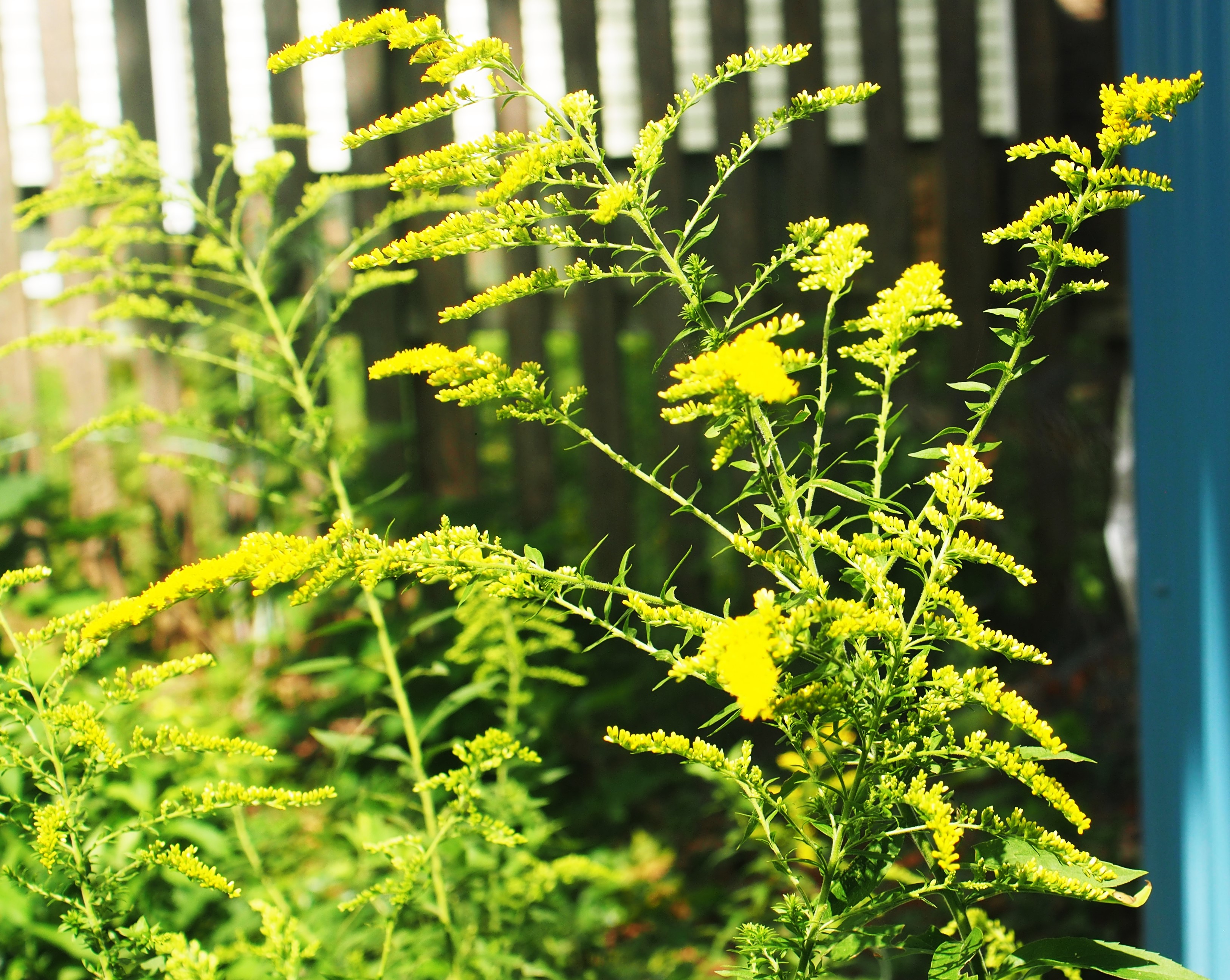
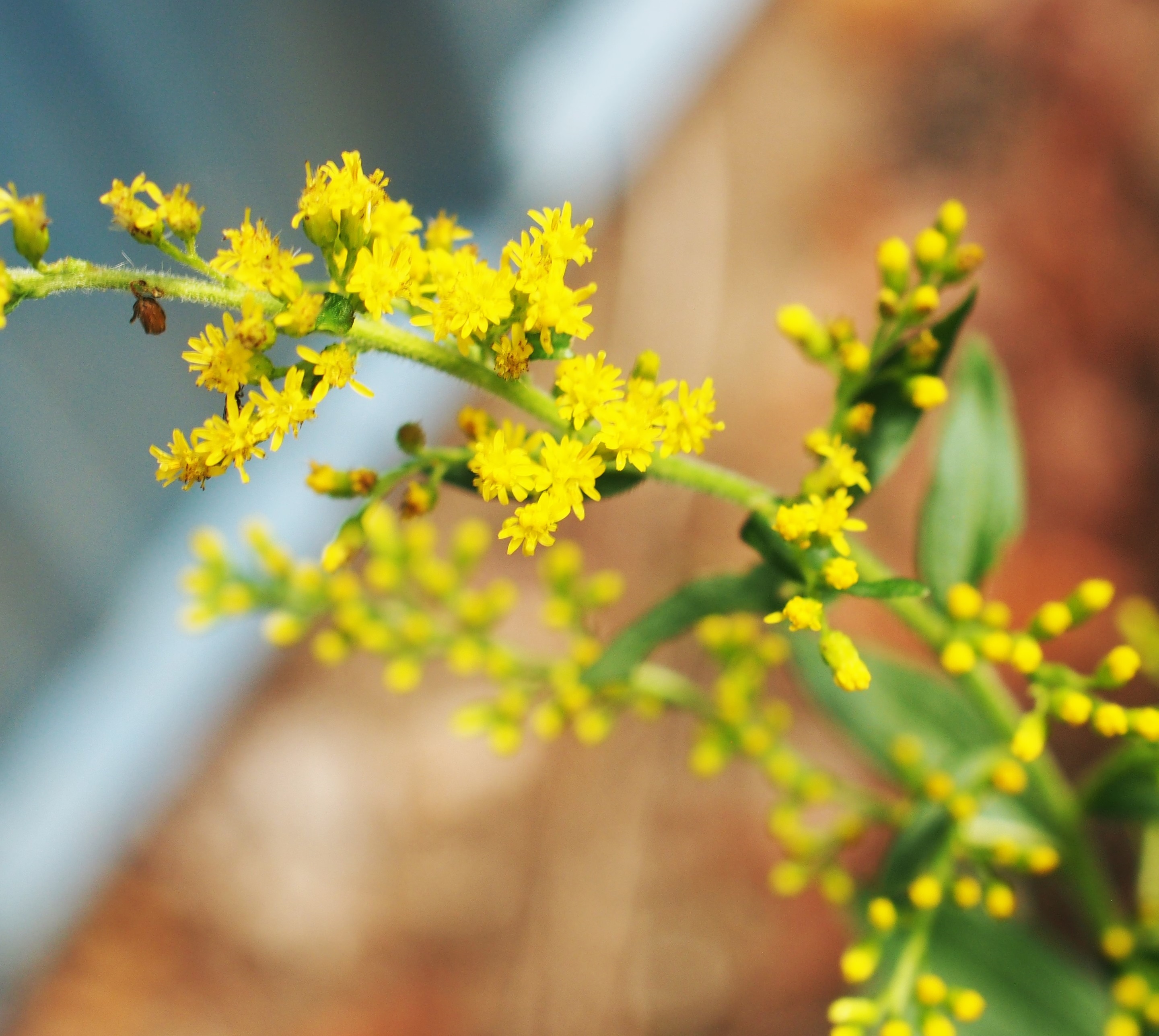
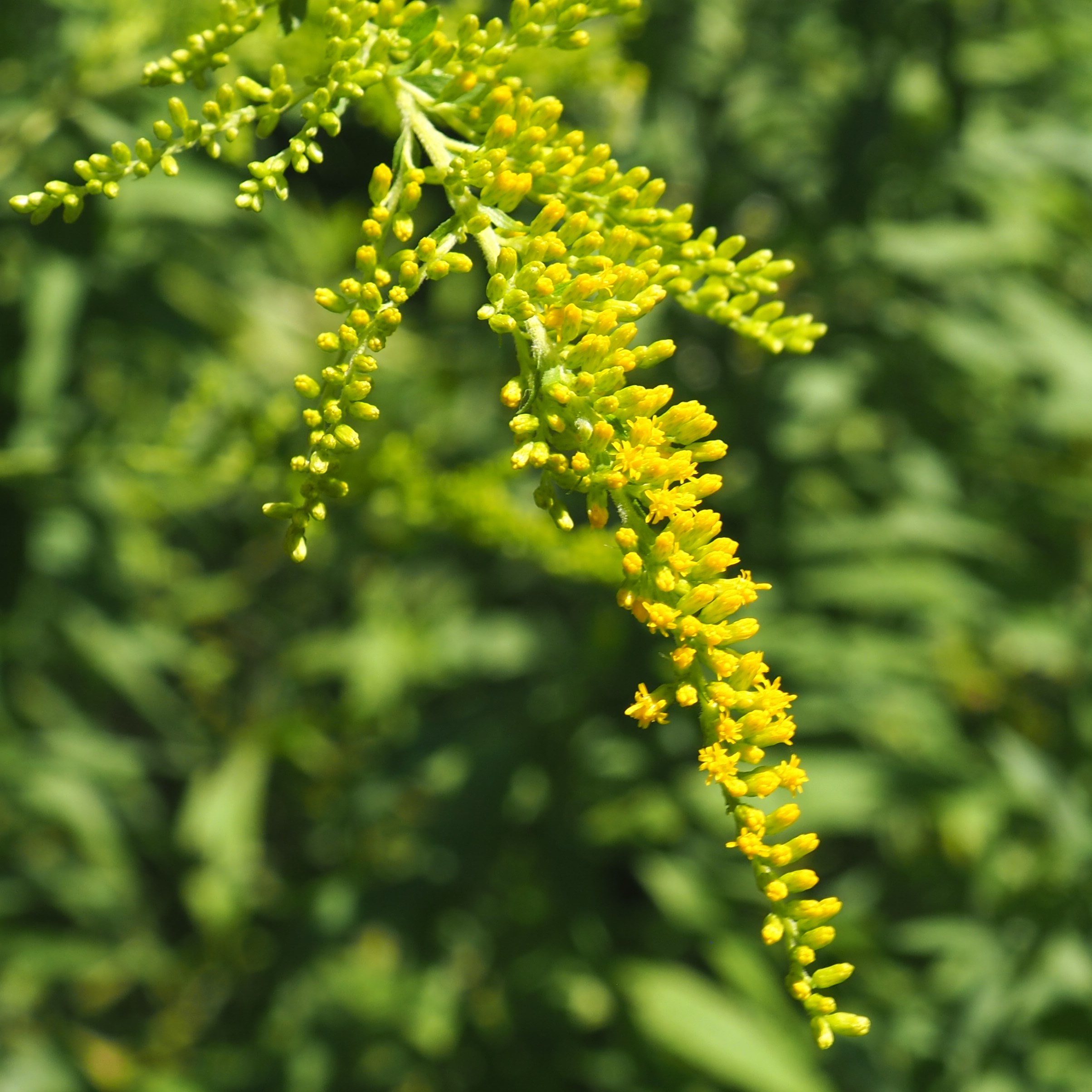
Again, the Ants are mostly Nearctic ones, because a) I was slow to put them into iNat for ID's, and b) That seems to be the ones that are consistently running about on the Wall. In this assembly, however, the first one was tiny and running on a tiny leaf.
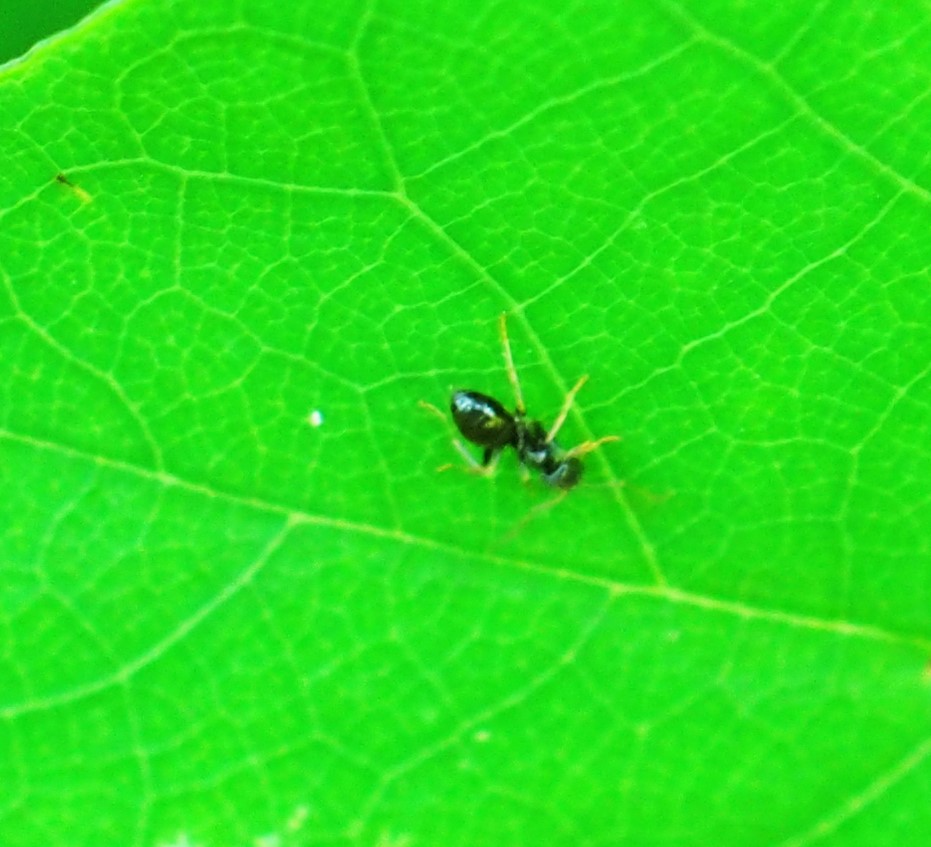
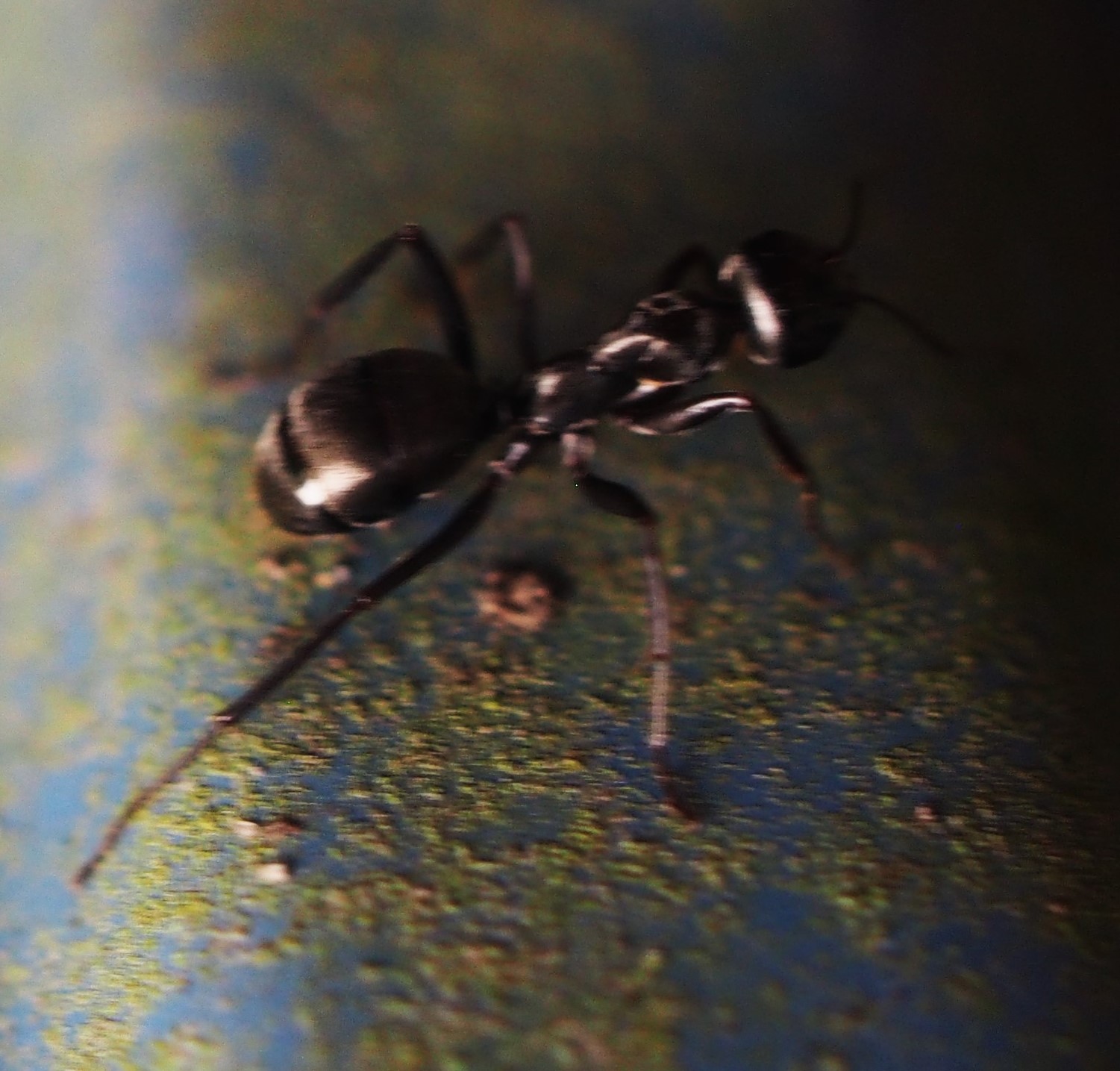
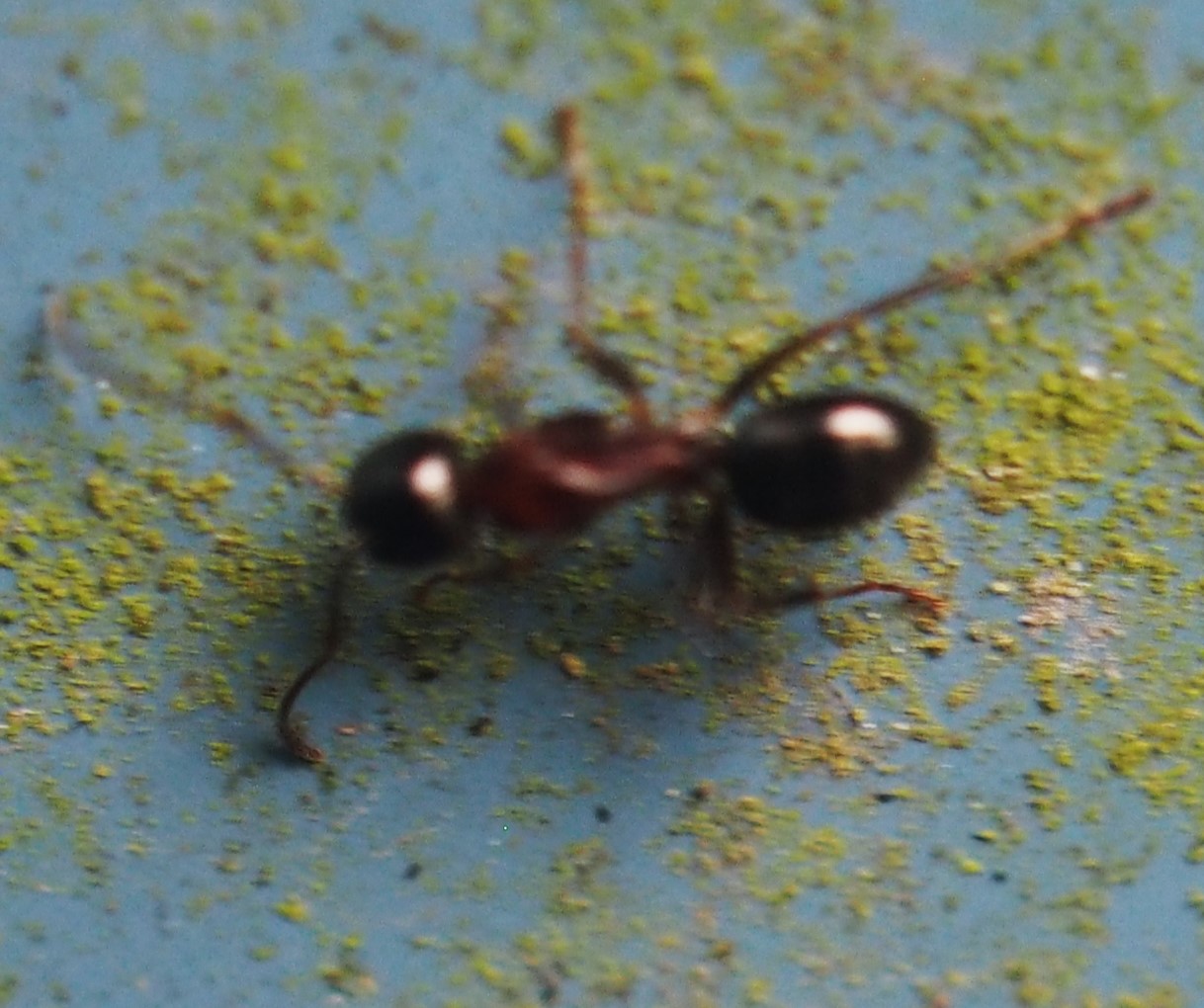
Remember that there is information in the name of the file for each image. You can see it by mousing over the image - look at the lower left of the screen. Or you can
click on the image to get to the (usually) larger image. Then the info is displayed in the address line above. Sometimes the second click will actually display a different view of the
original image.
Here are a few more Ants. The last one belongs to the Fusca-group of Field Ants, Complex Formica.
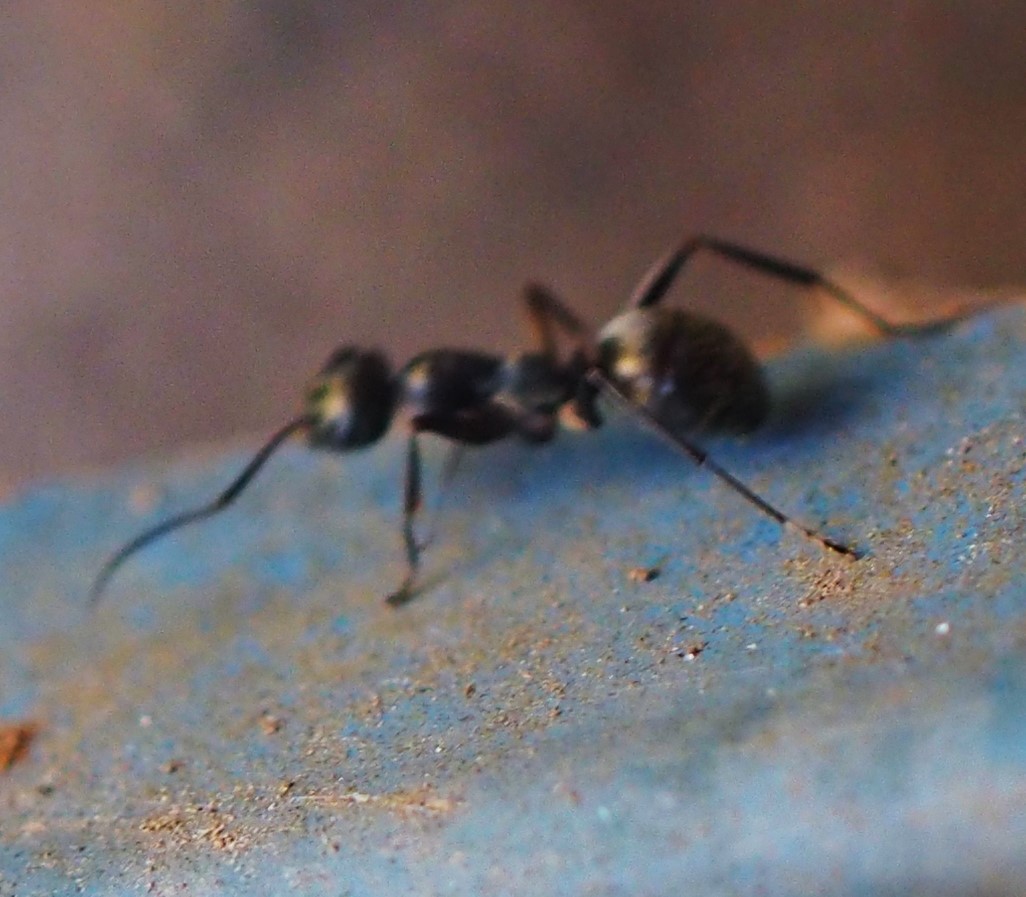
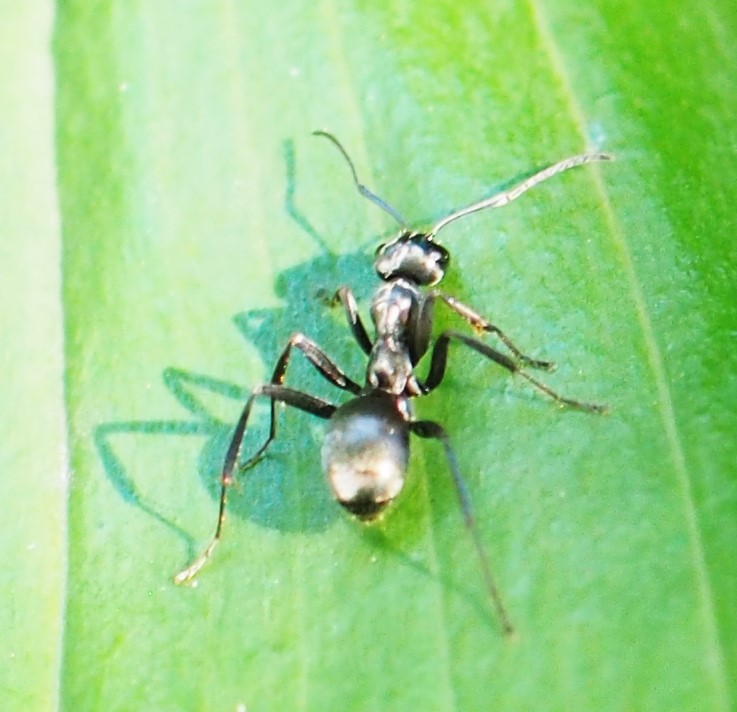
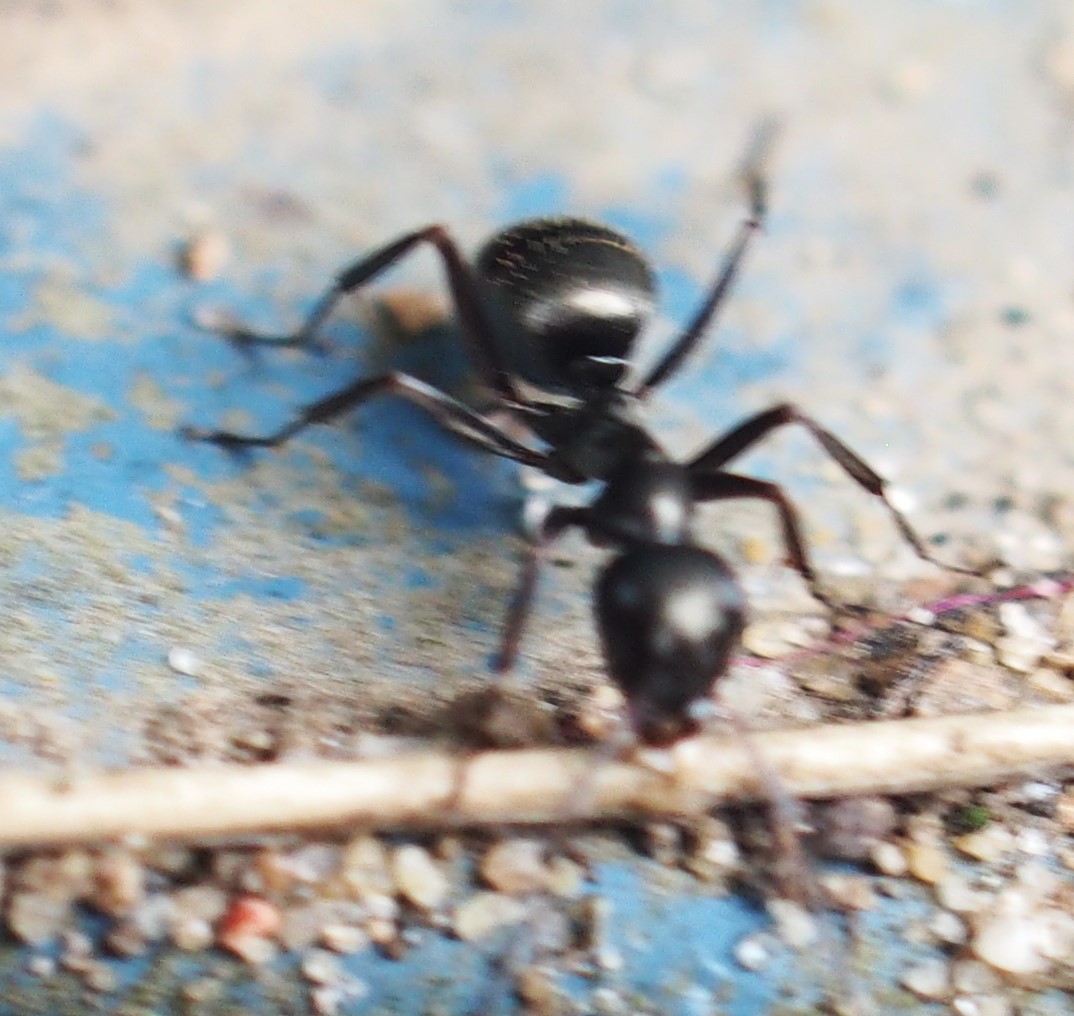
With the coming of the Goldenrod, we see more Bees than we've seen all Summer so far. The first one seems almost blue.
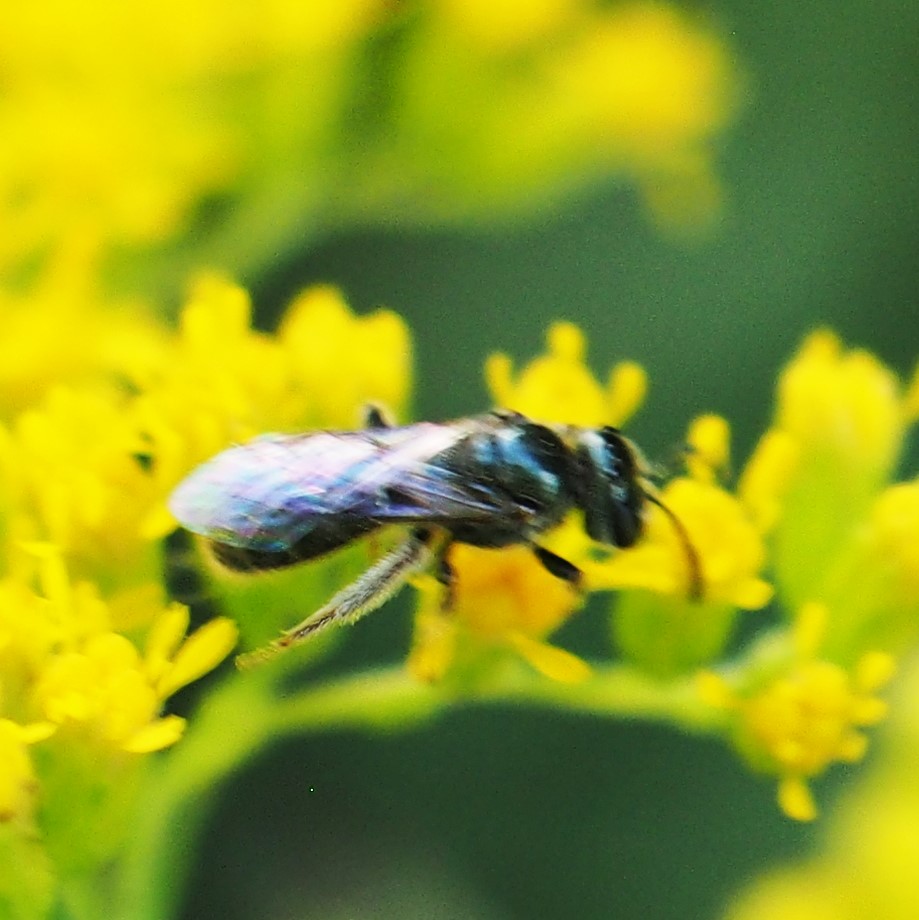
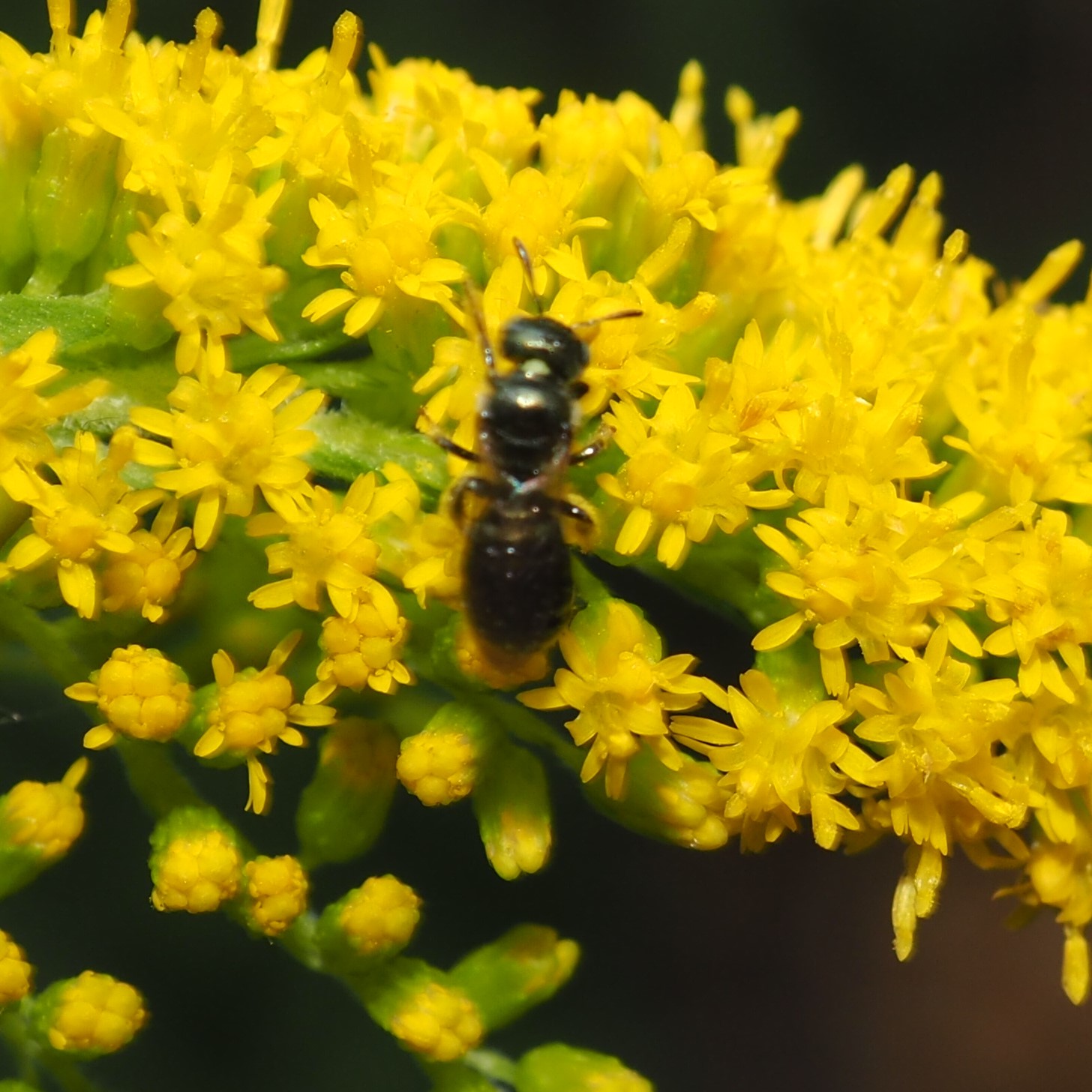
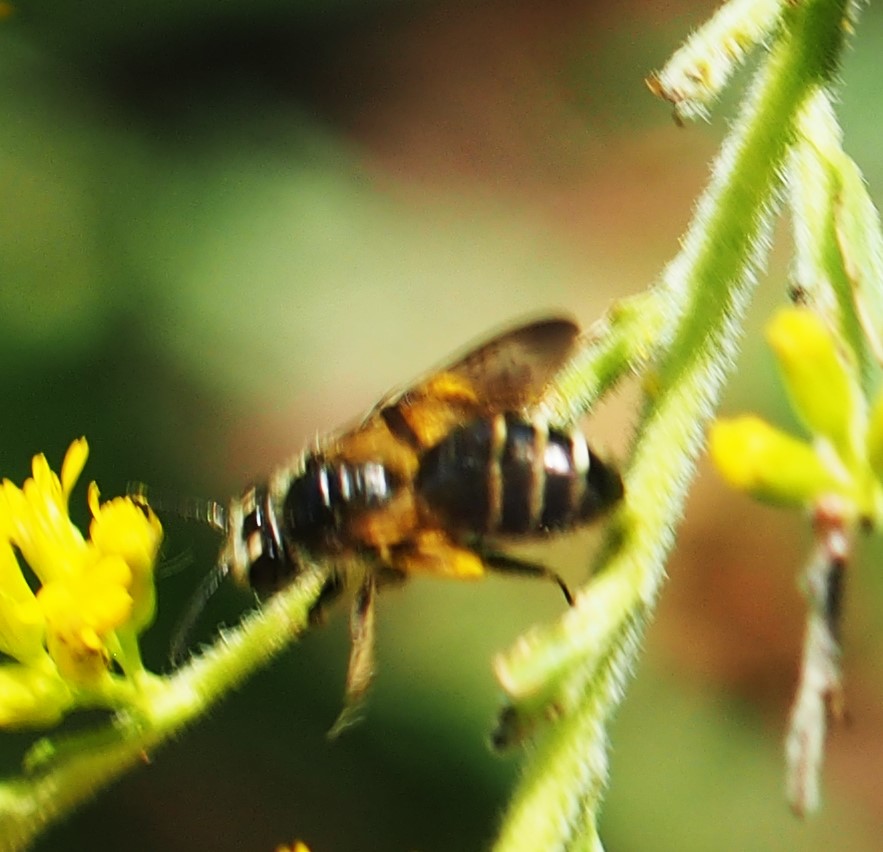
More Bees. Not only is the Goldenrod a brilliant visual accompaniment for the World, just imagine the hum that goes along with the gold. Bee #1 has gathered a lot of pollen onto its pollen saddlebags. It is Andrena nubecula, the Cloudy-winged Mining Bee.
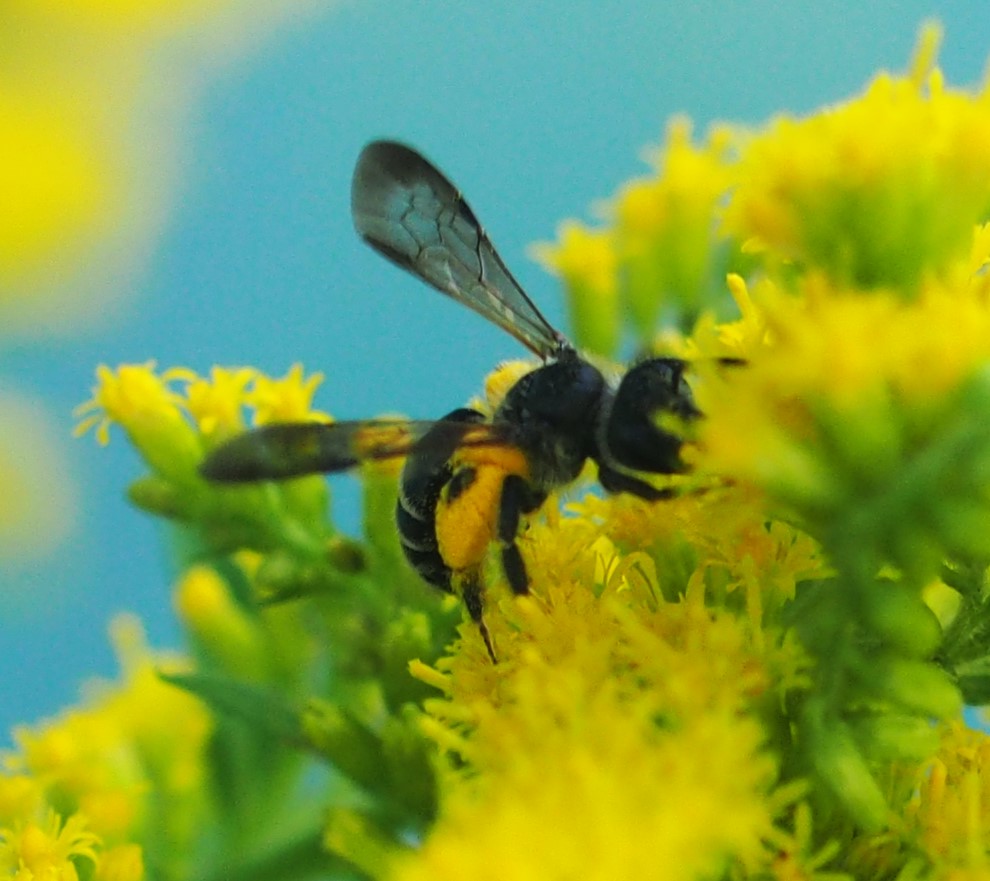

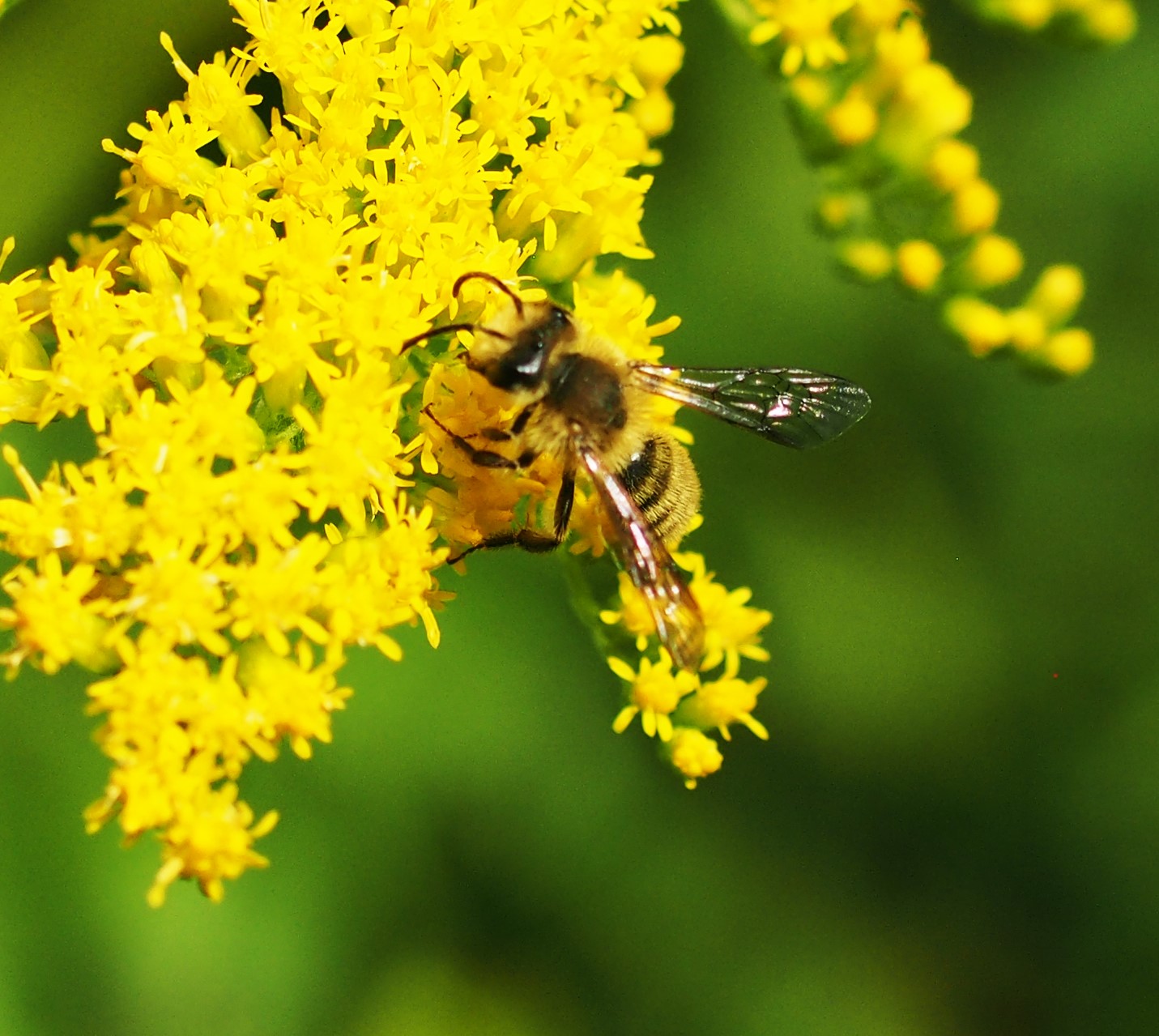
Moving along to the Beetles, one of the first things to arrive on the coattails of the Goldenrod is the Goldenrod Soldier Beetle. Second shows it resting on the beautiful flower of the Japanese Anemone, another bloom that seconds the Goldenrod. Third shows a Goldenrod Leaf Miner.
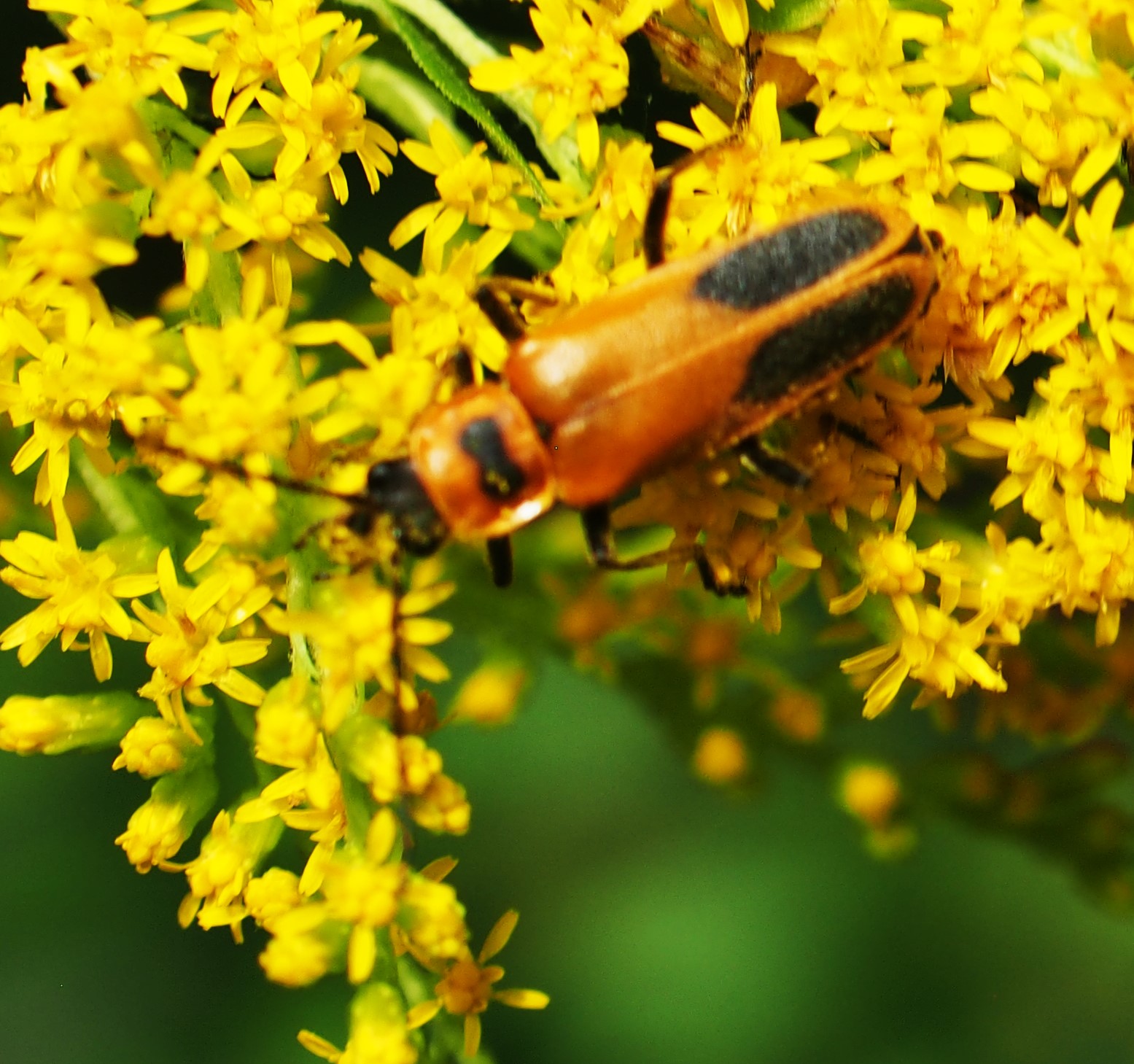
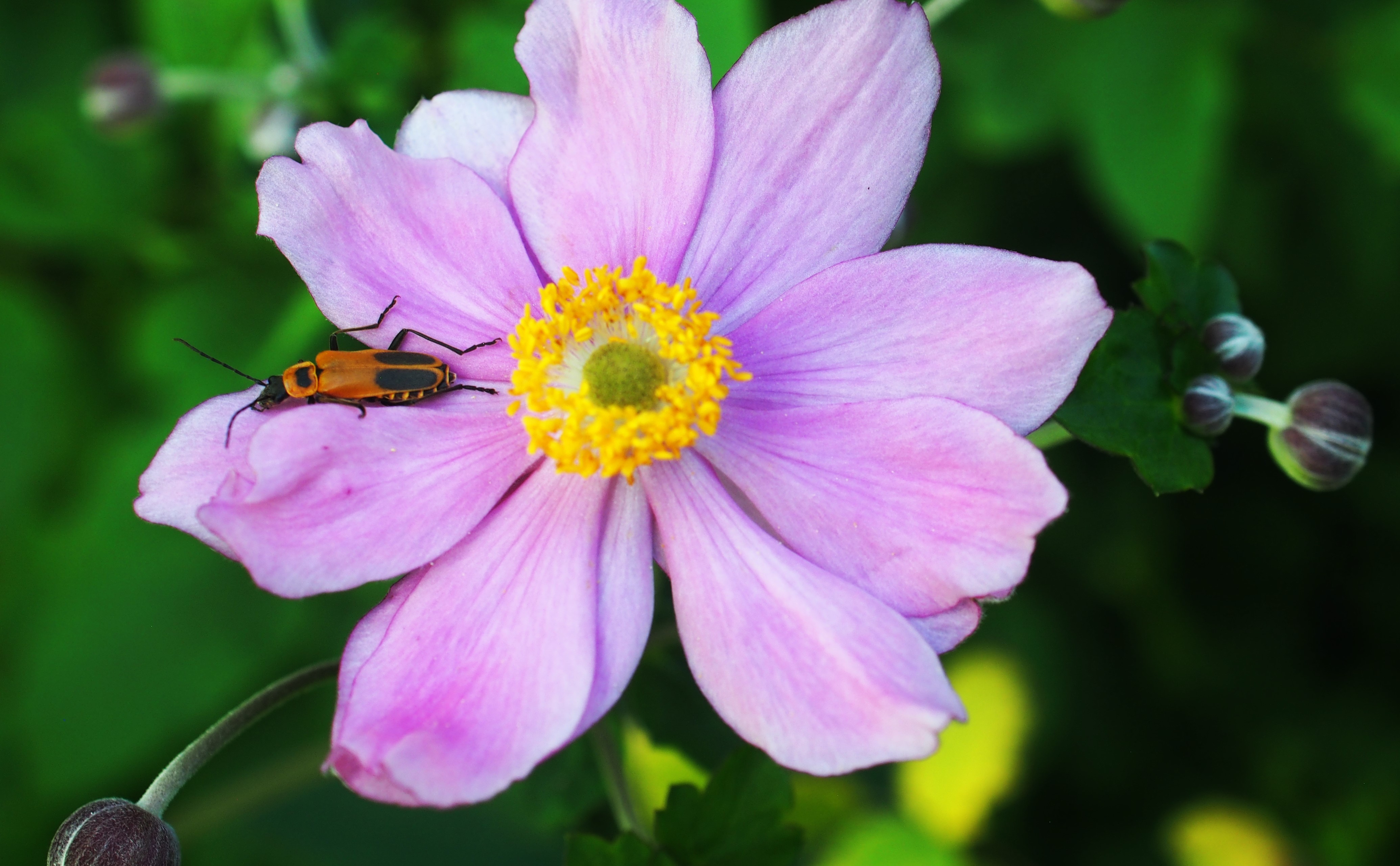
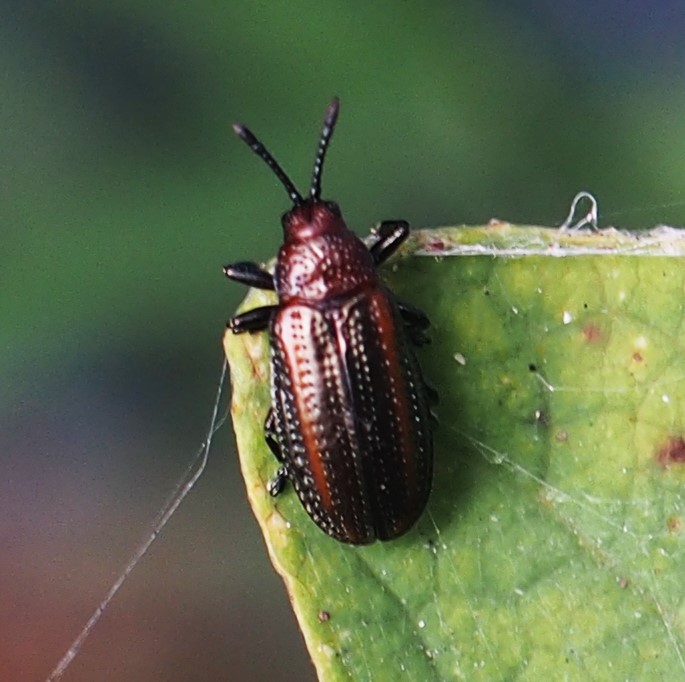
First here is the Locust Borer Beetle, another Goldenrod follower. It's followed by the Asian Lady Beetle, and then by a Mystery Weevil.
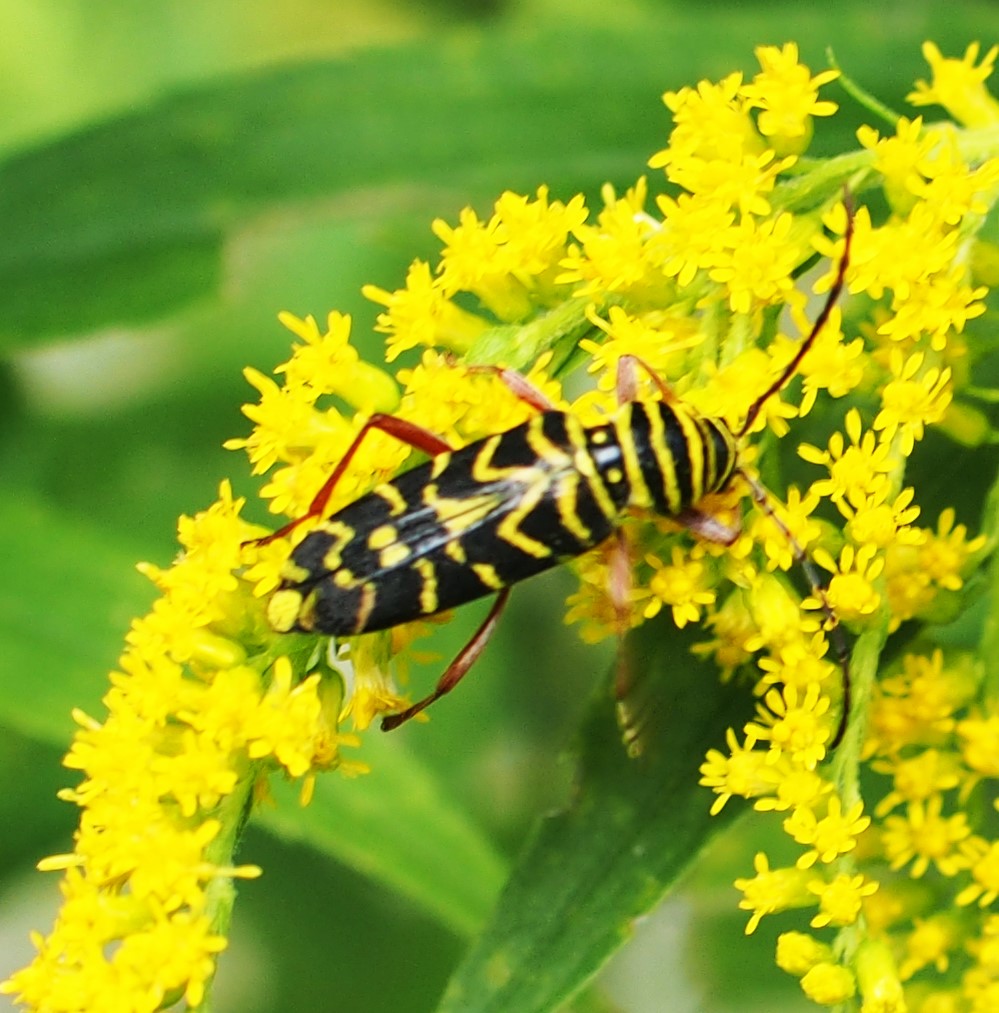
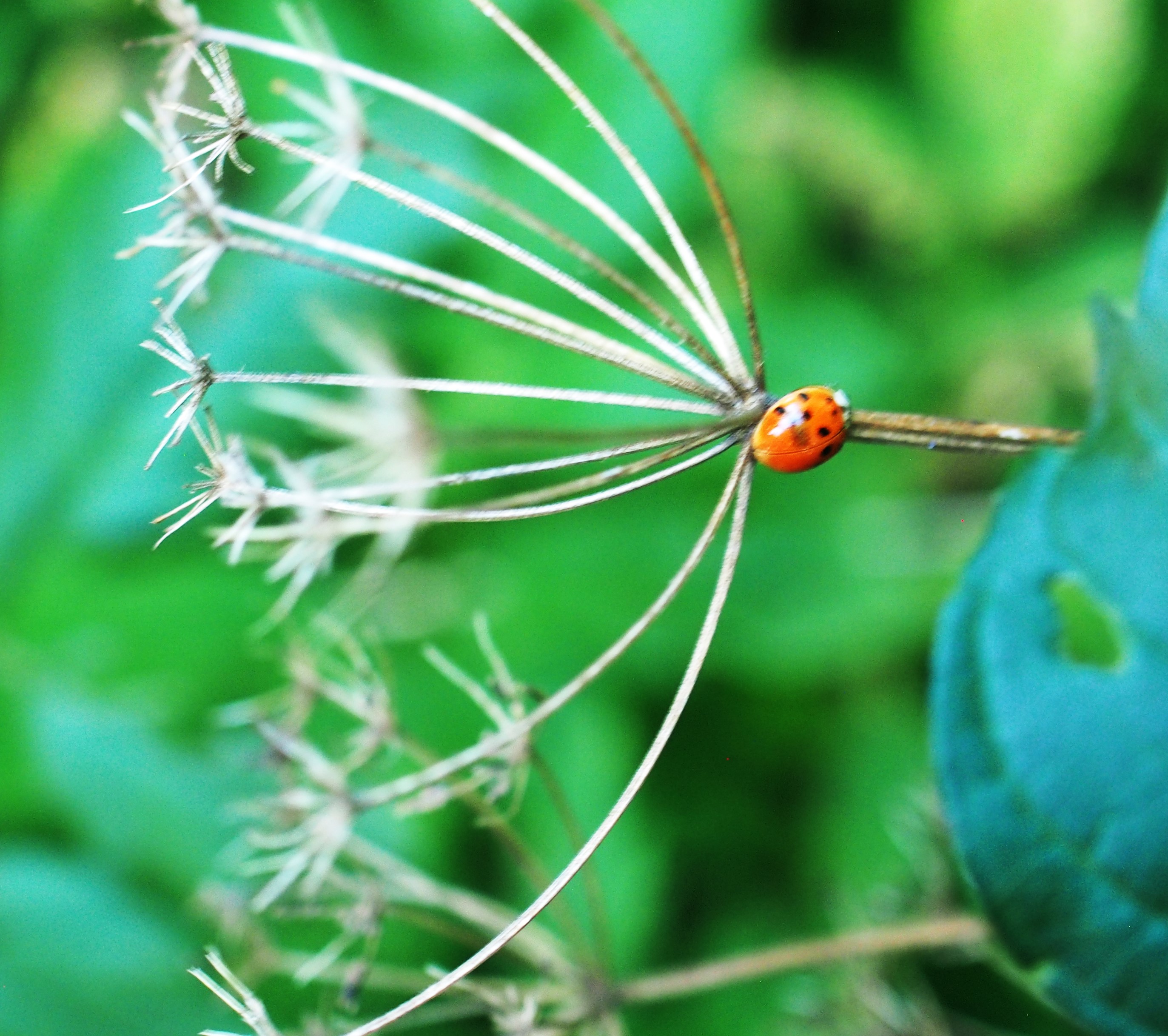
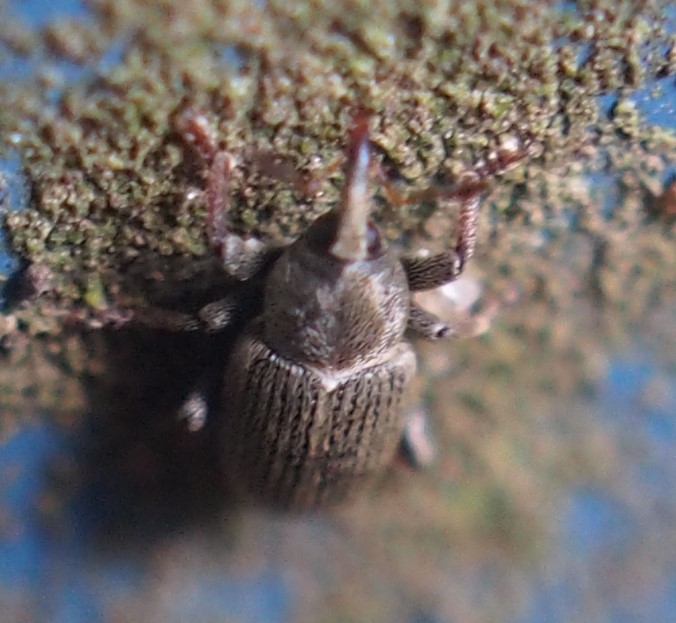
You know we are going to see the Redbud Bruchid. Here are two views.
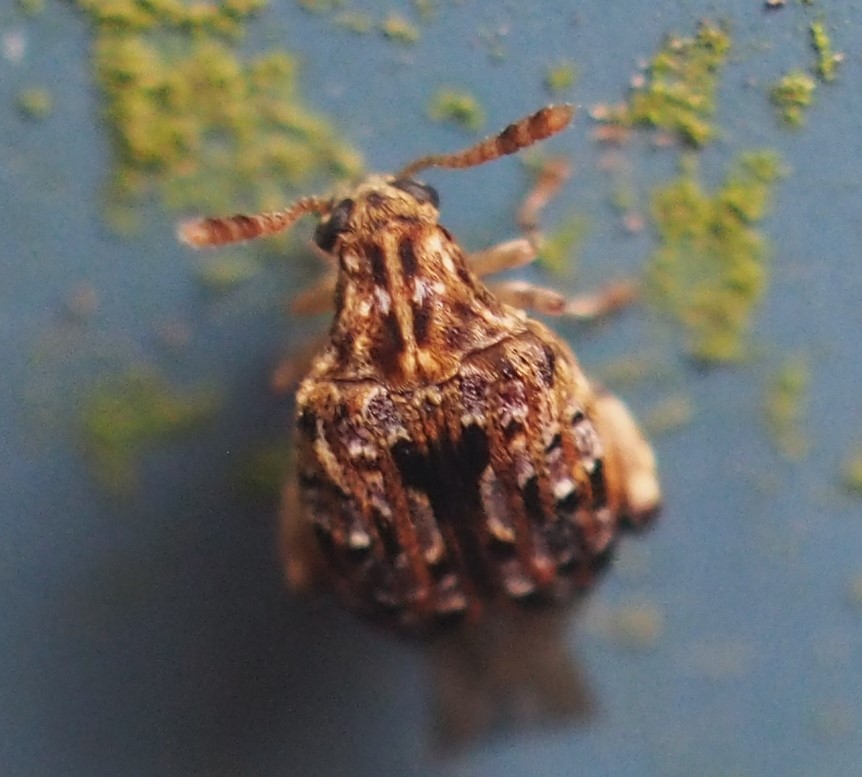
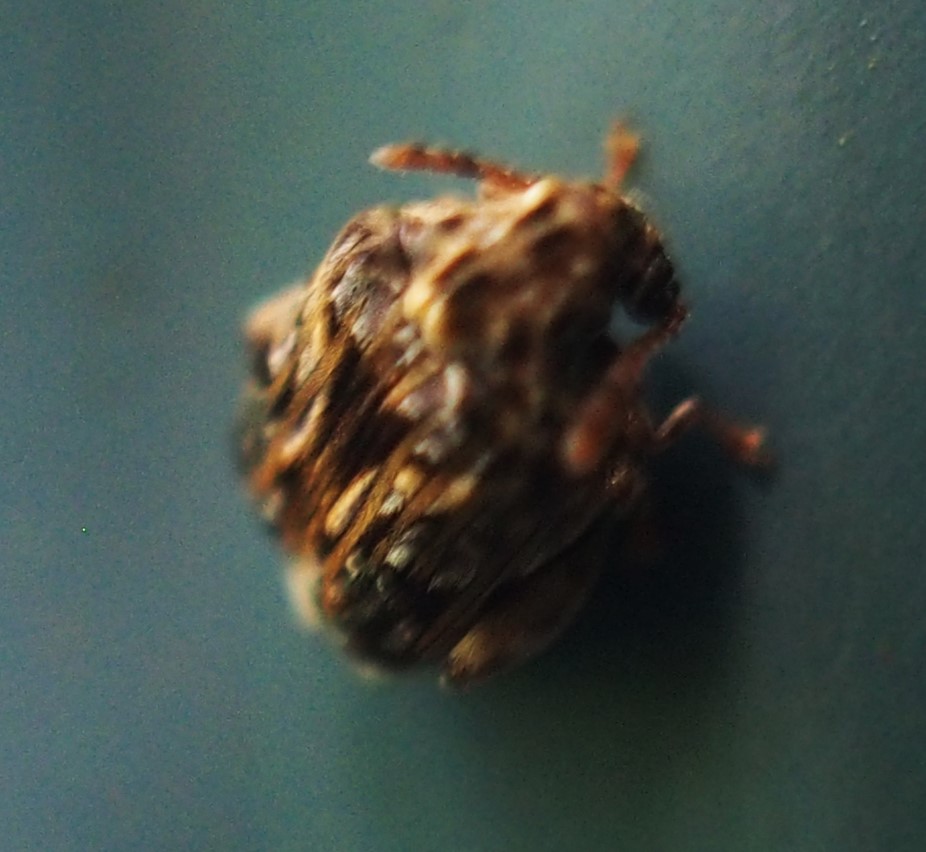
Moving on to the Bugs, here are a few of our favorite Assassins. Here is our most familiar, the Zelus luridus (Pale-green Assassin Bug). Picture 2 shows a very young nymph, and third is our now familiar Empicoris errabundus, one of the Thread-legged Assassins.
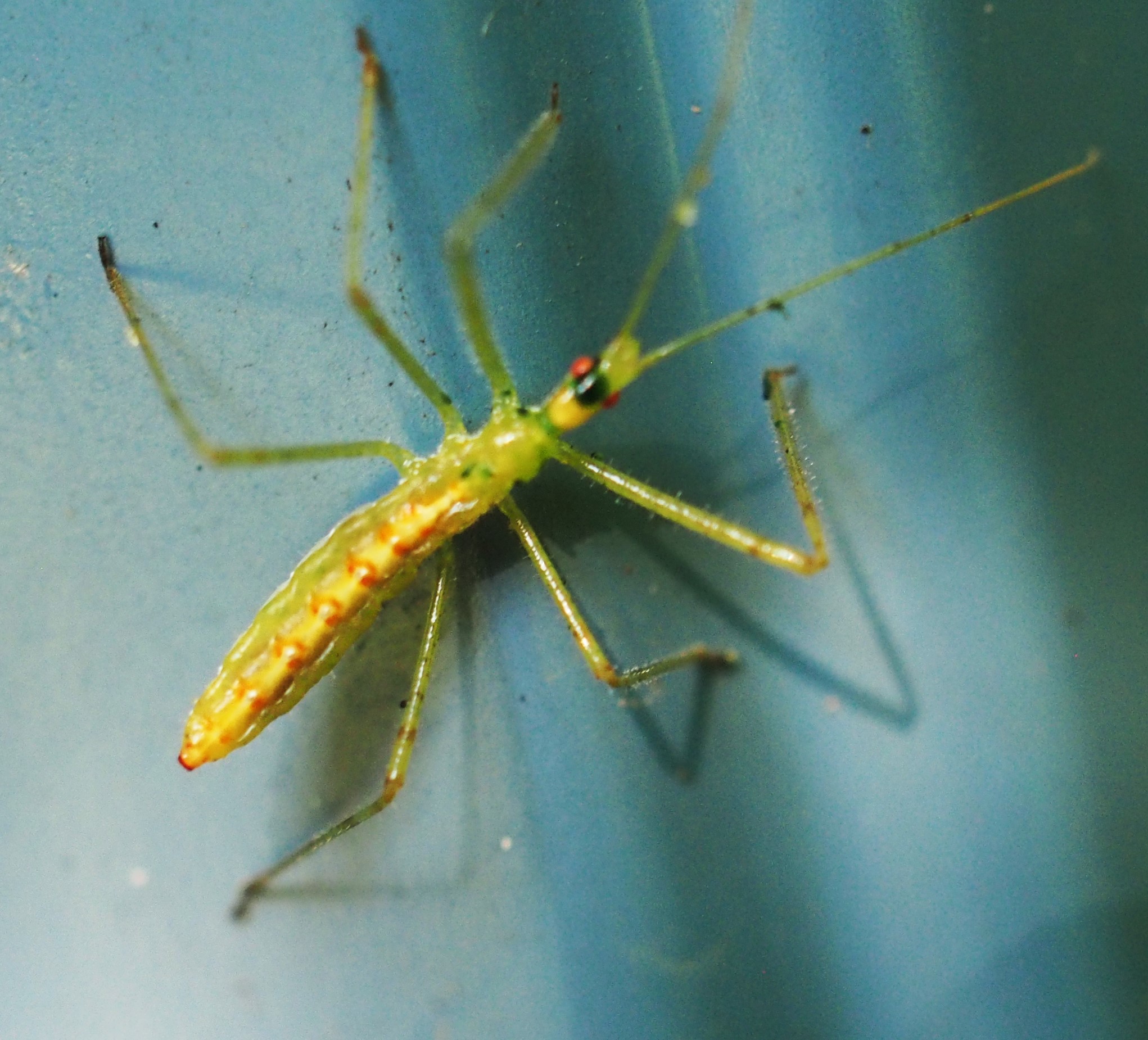

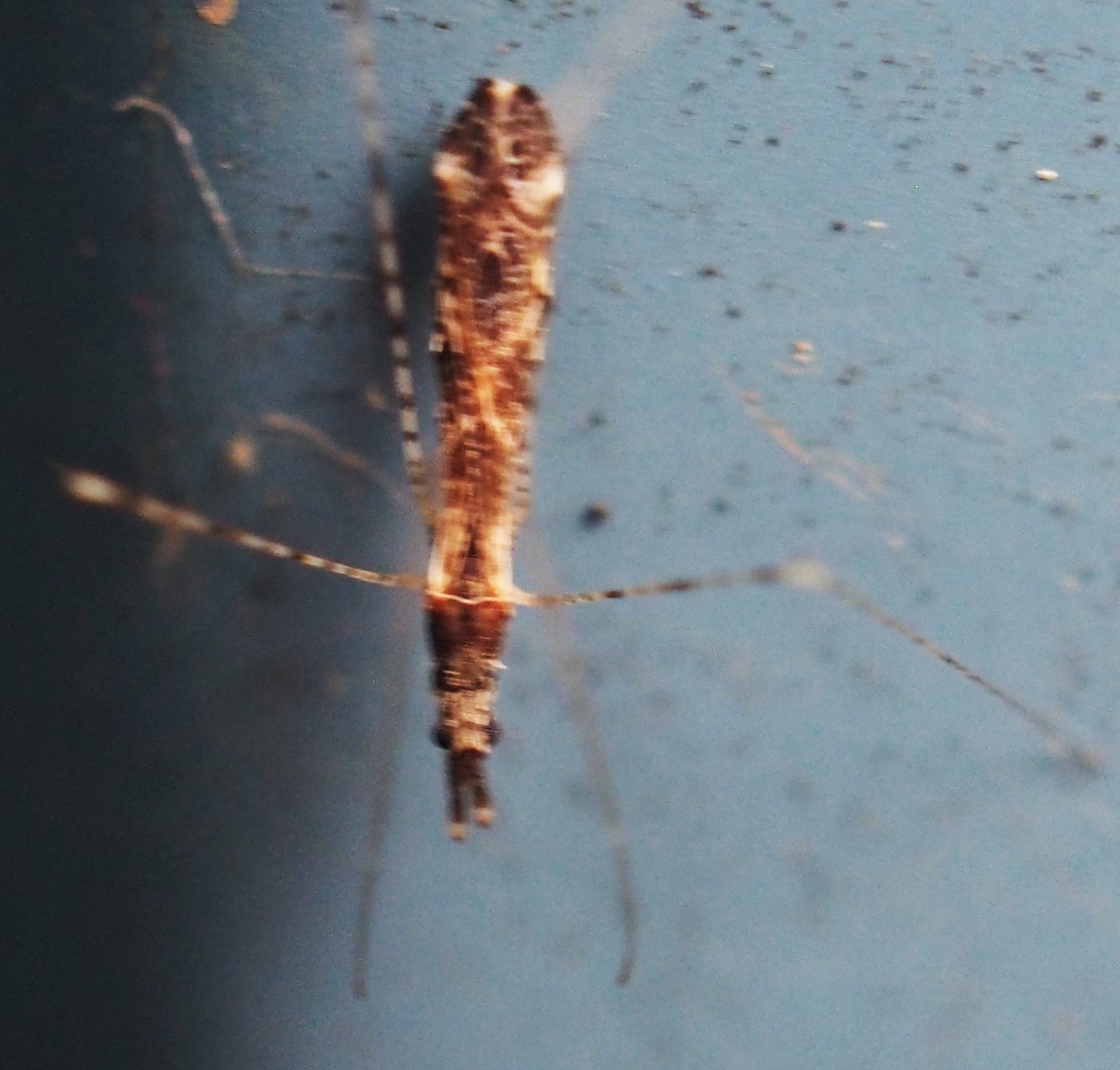
All of the above are old friends now. But maybe you haven't see this Ambush Bug since last year when the blooming Goldenrod brought it along. Note the thick gold claws on this one. So now you've seen three of our most prominent predators at almost the same time. Let me clarify: This Ambush Bug does not eat Goldenrod, but other creatures who do. By the way, the only Ambush Bug I've ever seen in this yard is the Pennsylvania Ambush Bug.
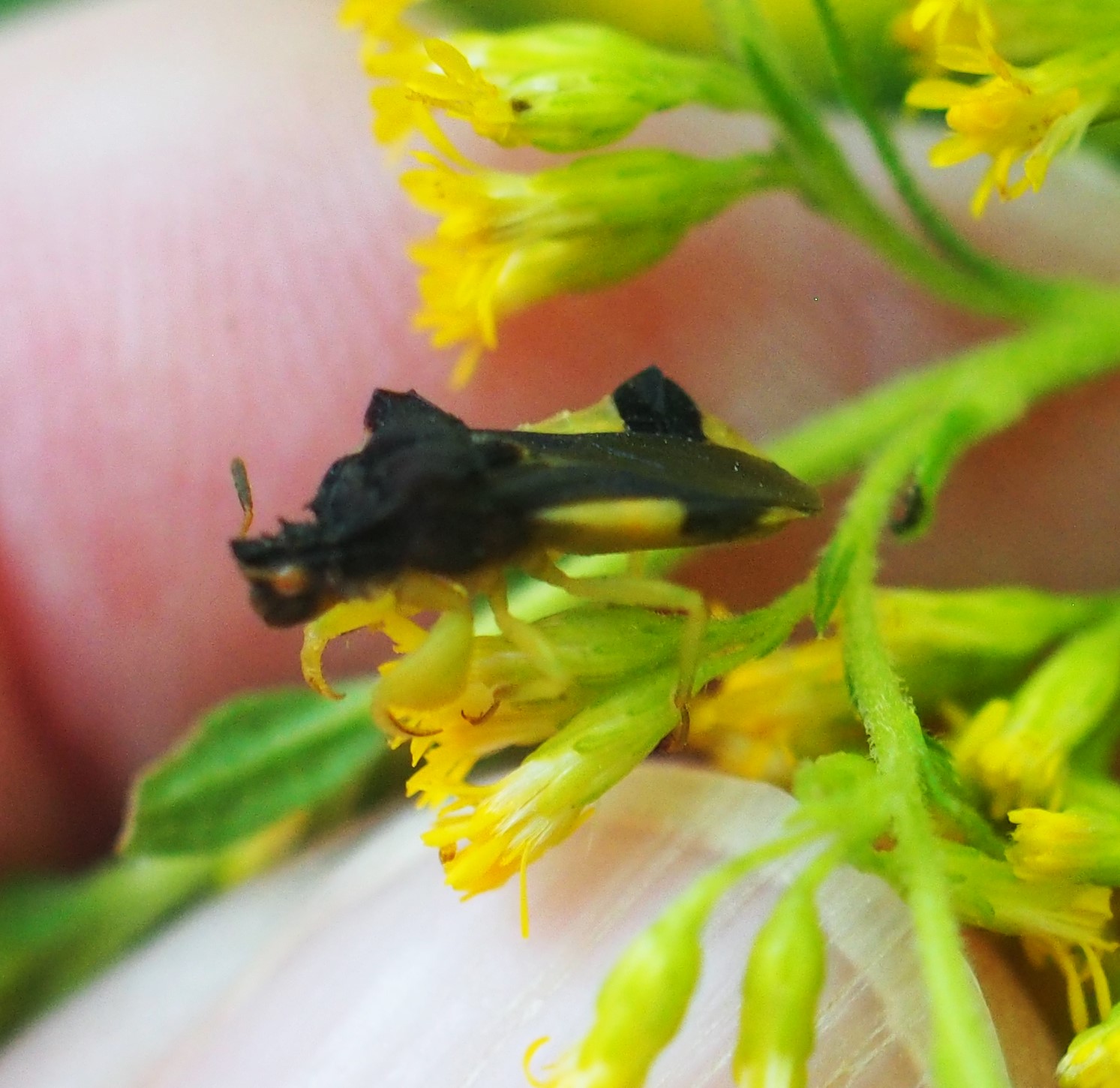
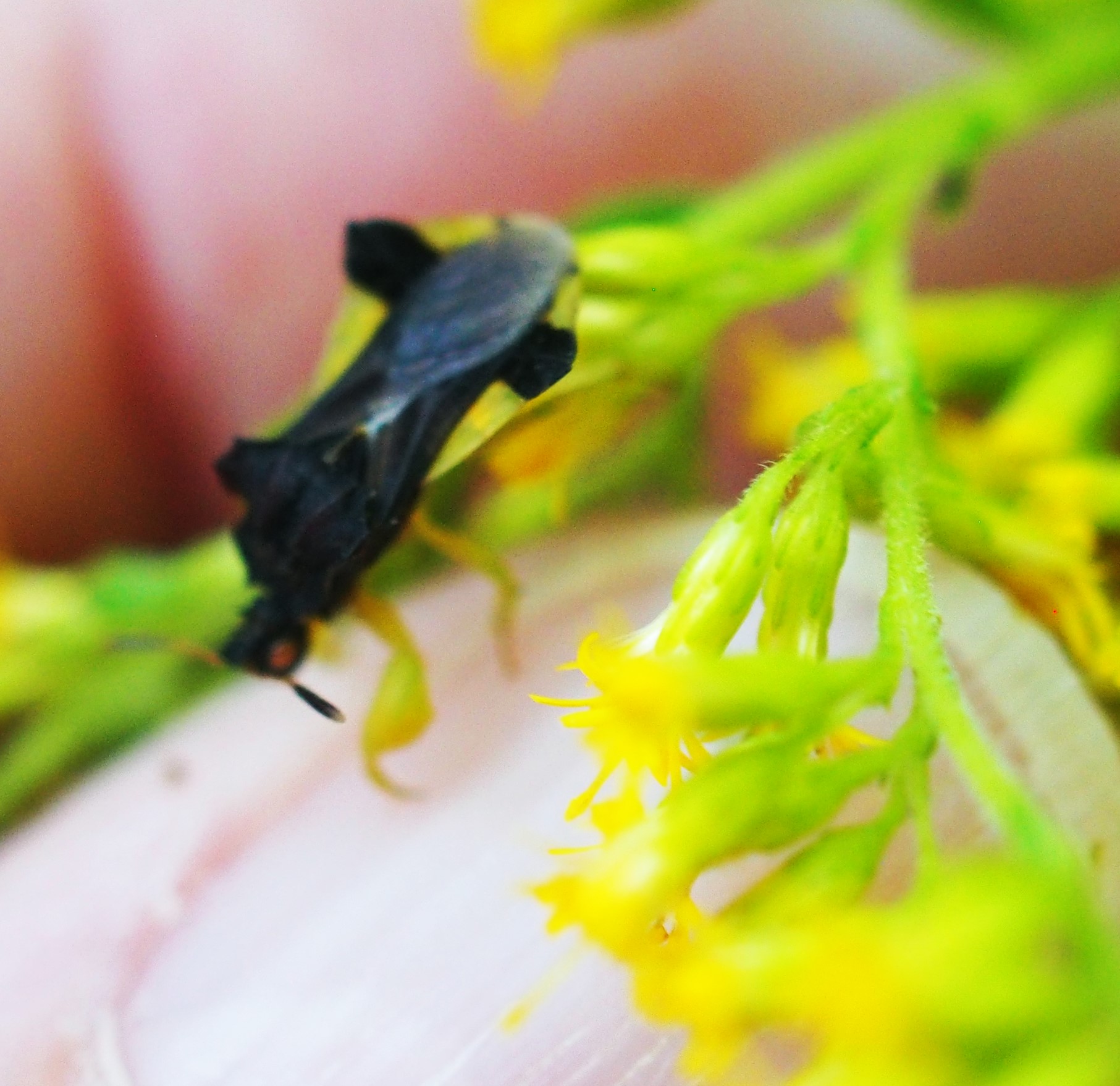
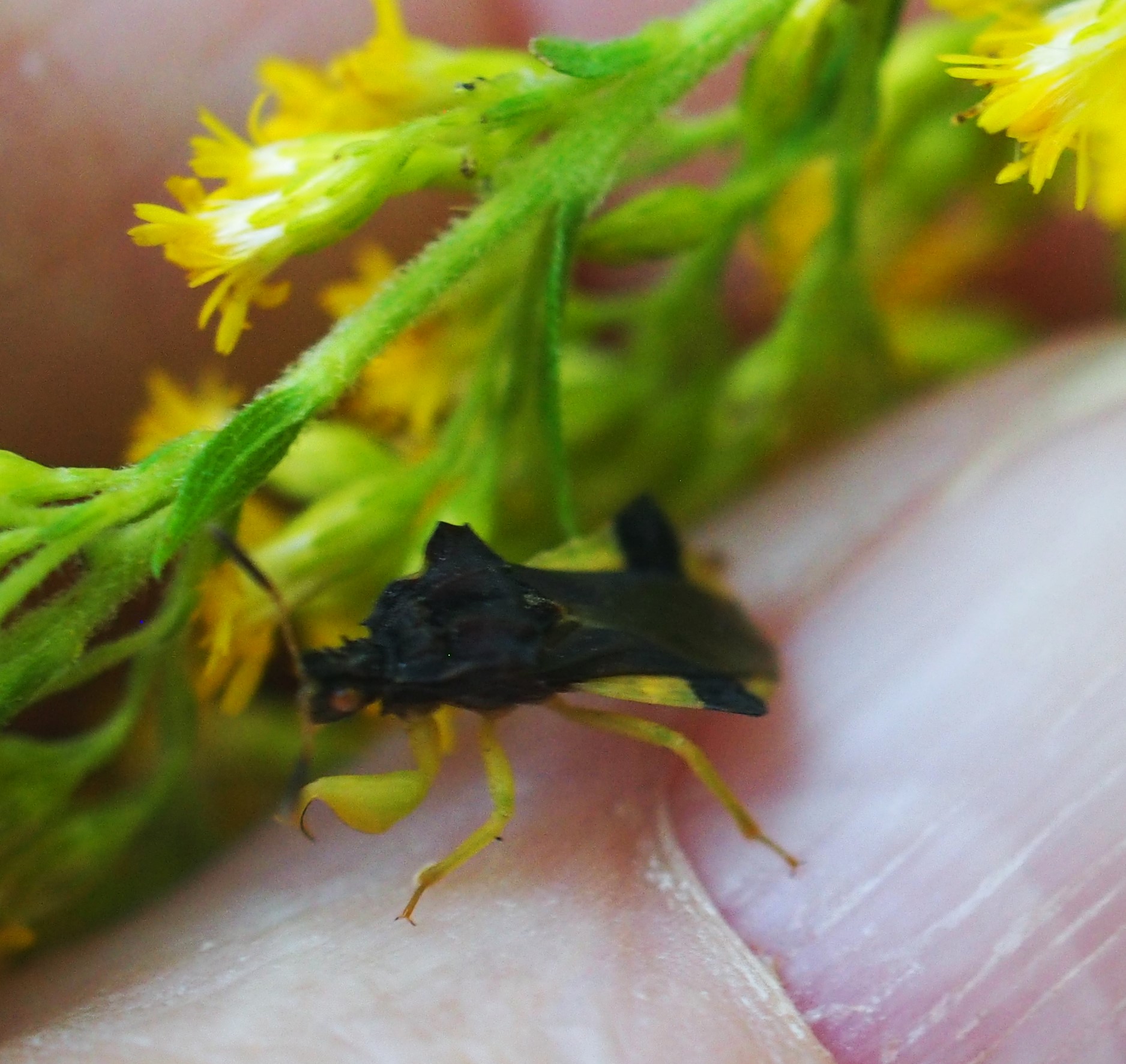
Here are a few Leafhoppers. First is a Red-banded Leafhopper, on Goldenrod. Next is a lovely green Leafhopper, followed by a bright green Leafhopper.
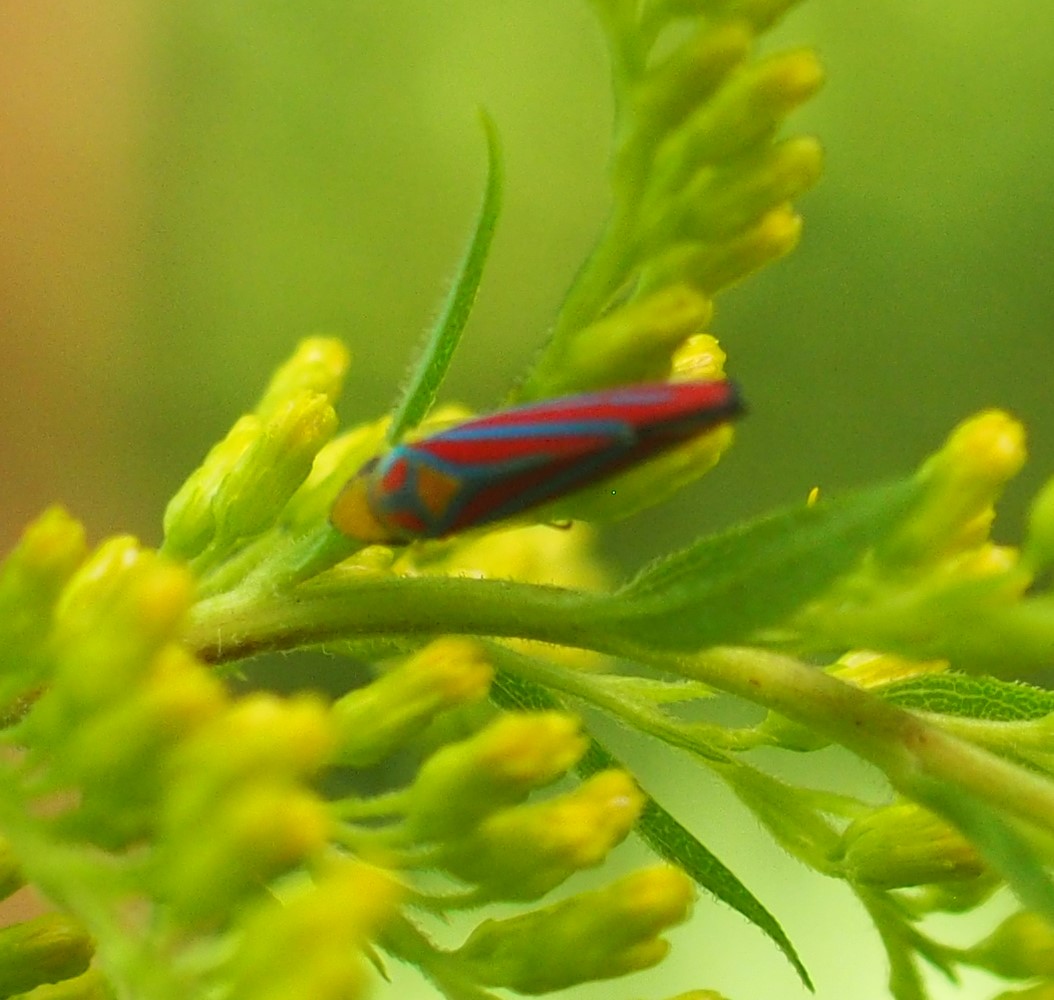
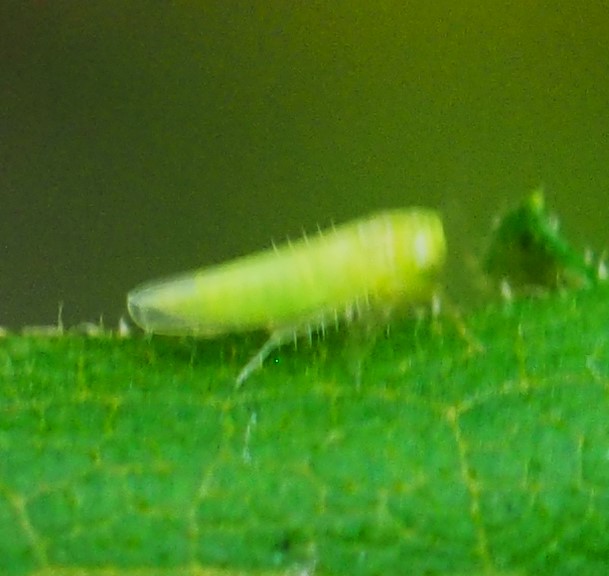
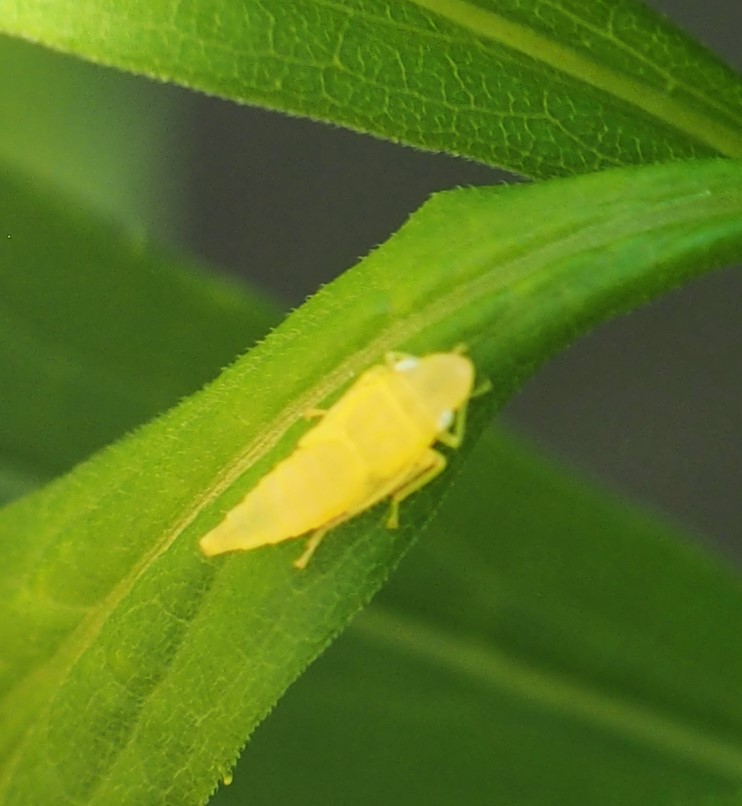
Next we see a couple of Aphrodes Leafhoppers, and finally one that belongs to the genus Eratoneura.
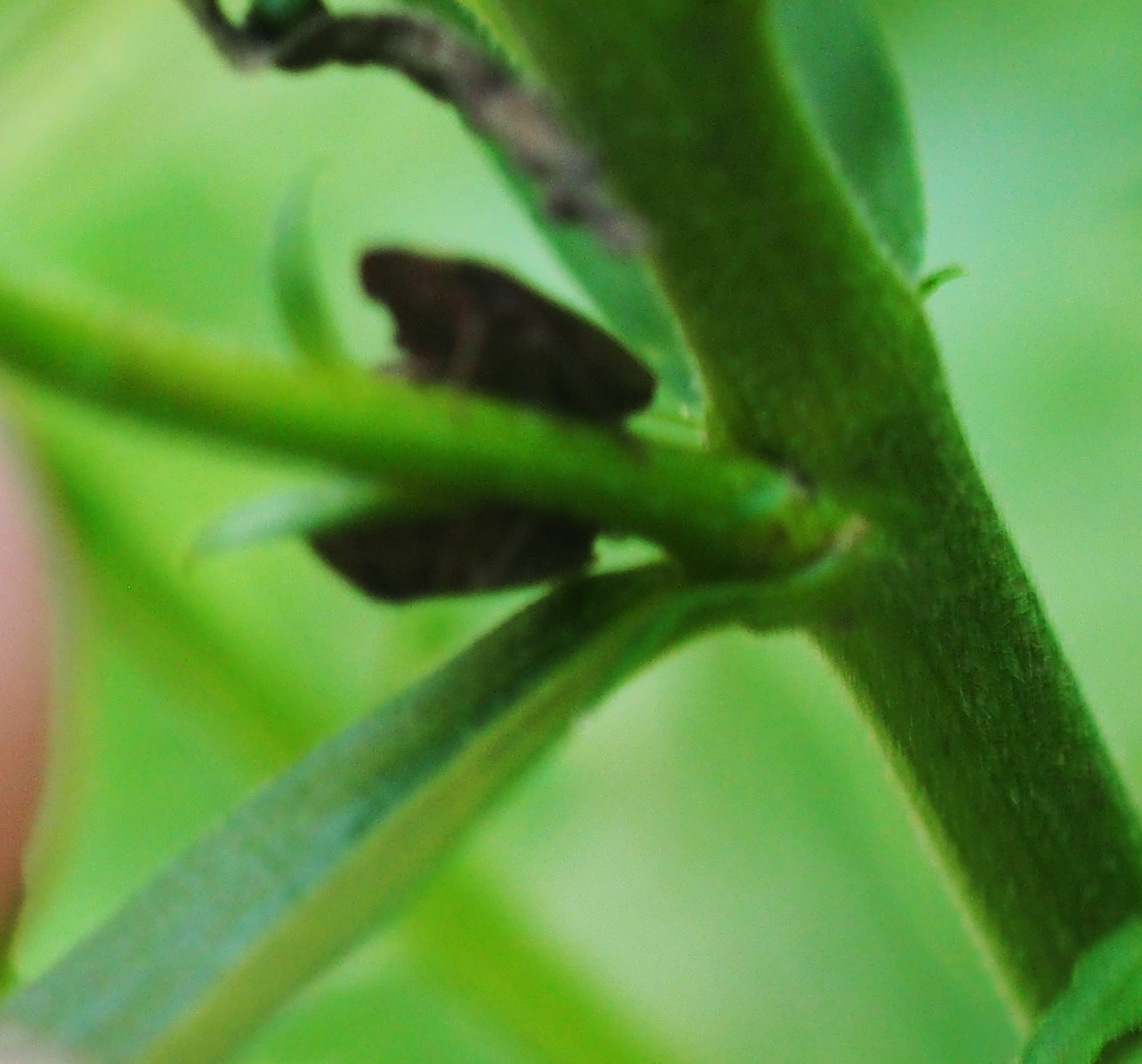
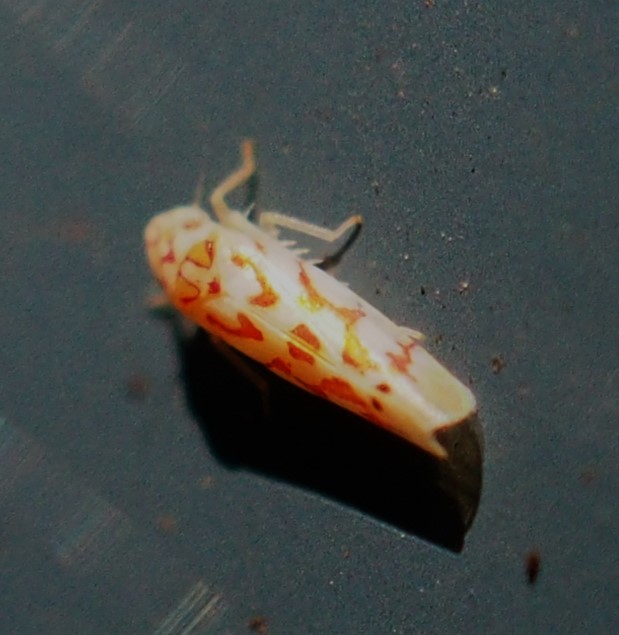
First here is probably a Planthopper, but which? Then yet another member of the Stink Bug family, probably genus Euschistus. And another, just to show you how different the colors can be.
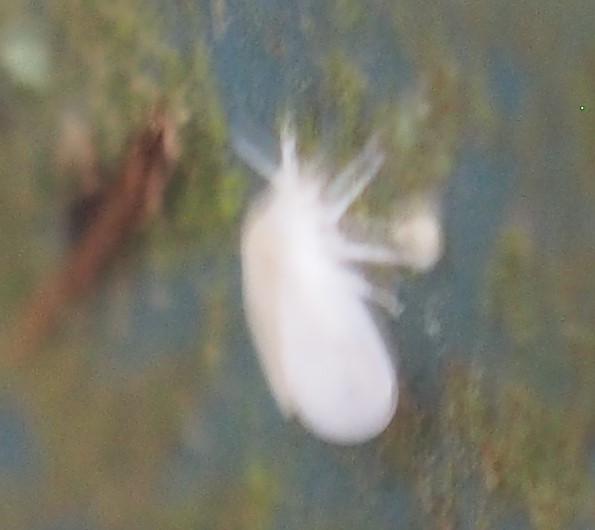
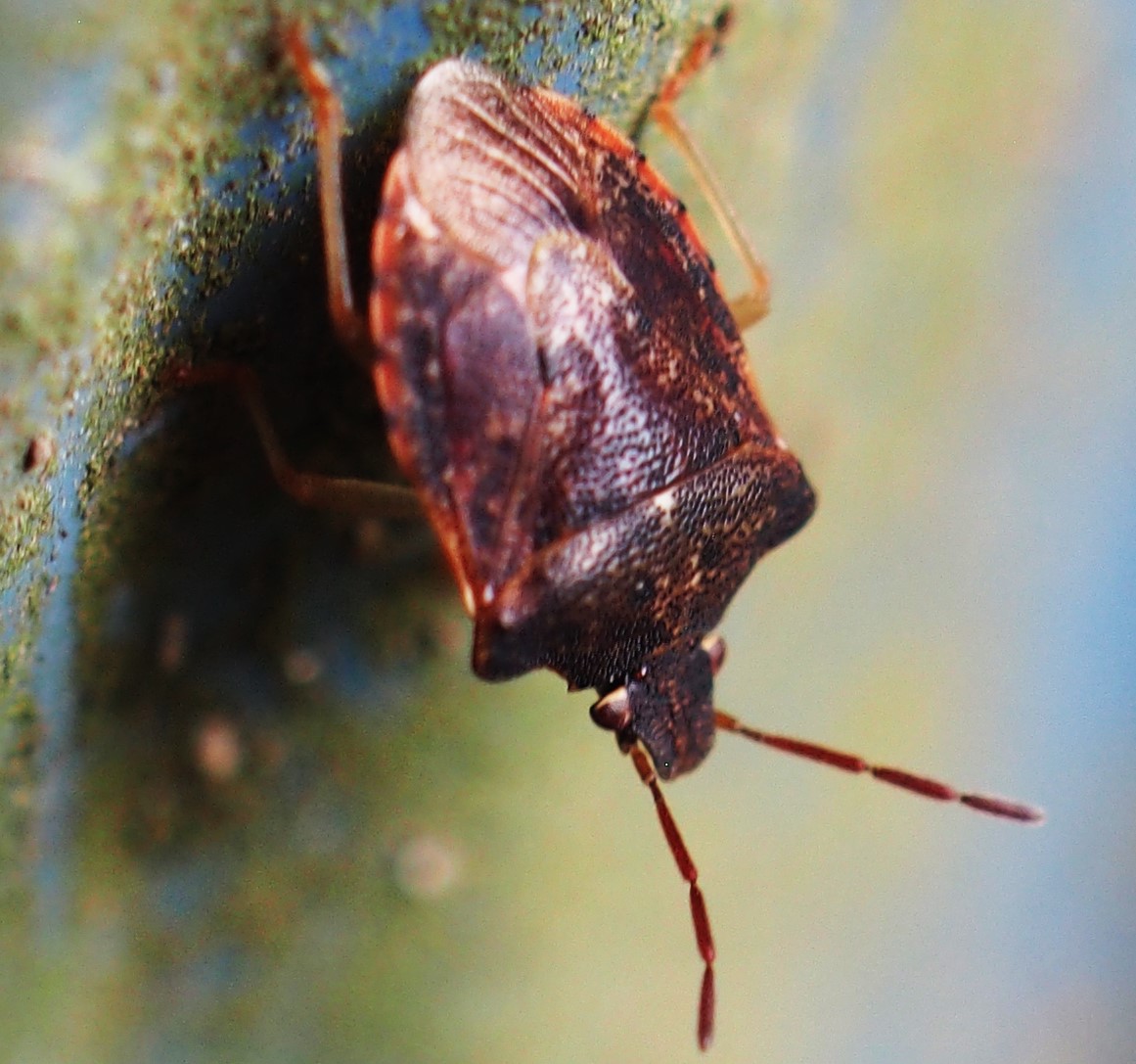
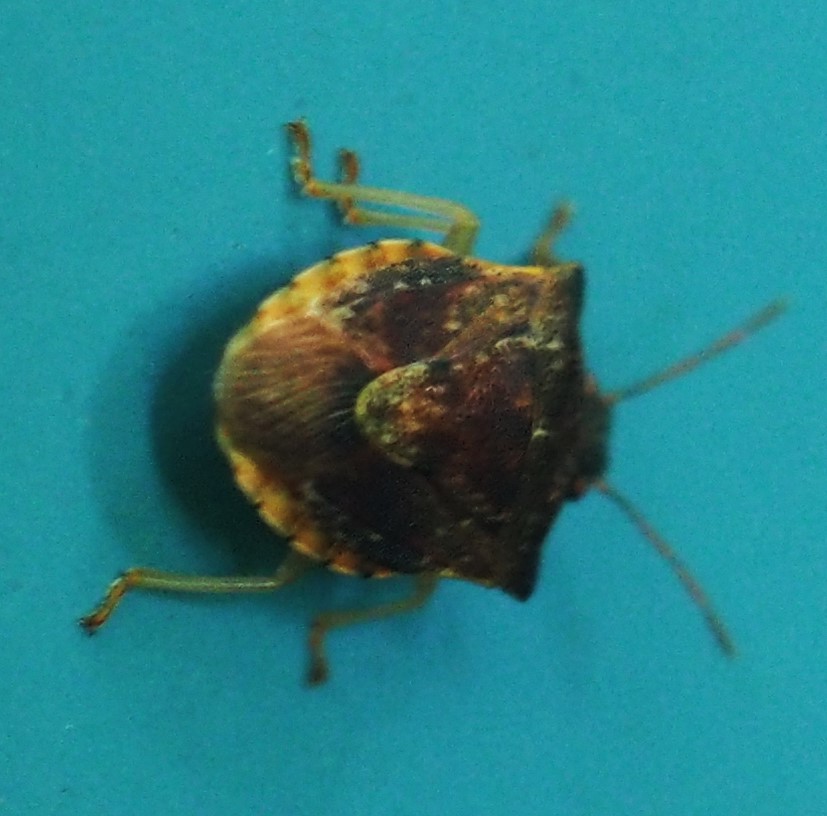
Oh! How could I forget? Here is a huge Cicada in the Goldenrod. It has been identified as Linne's Cicada.
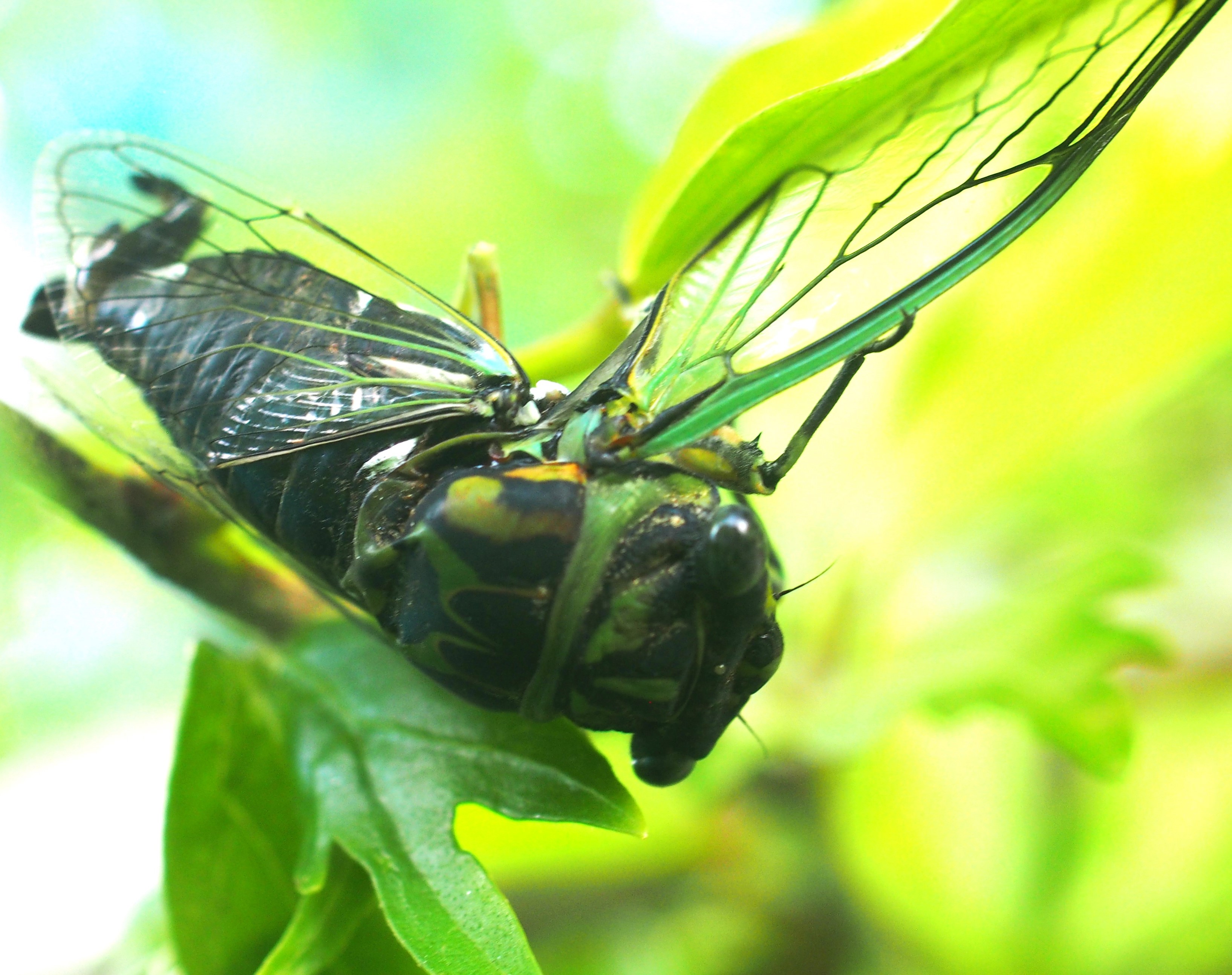
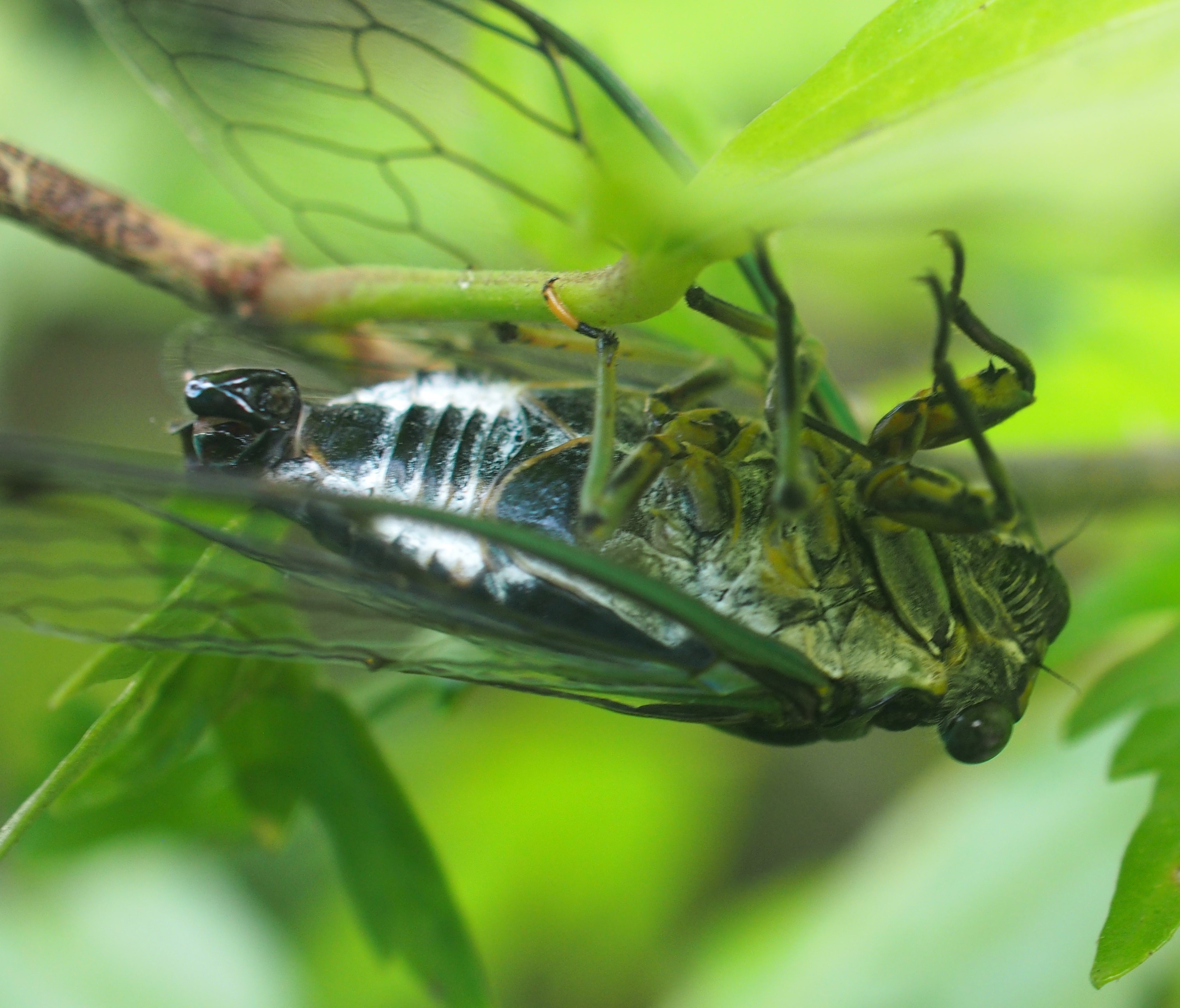
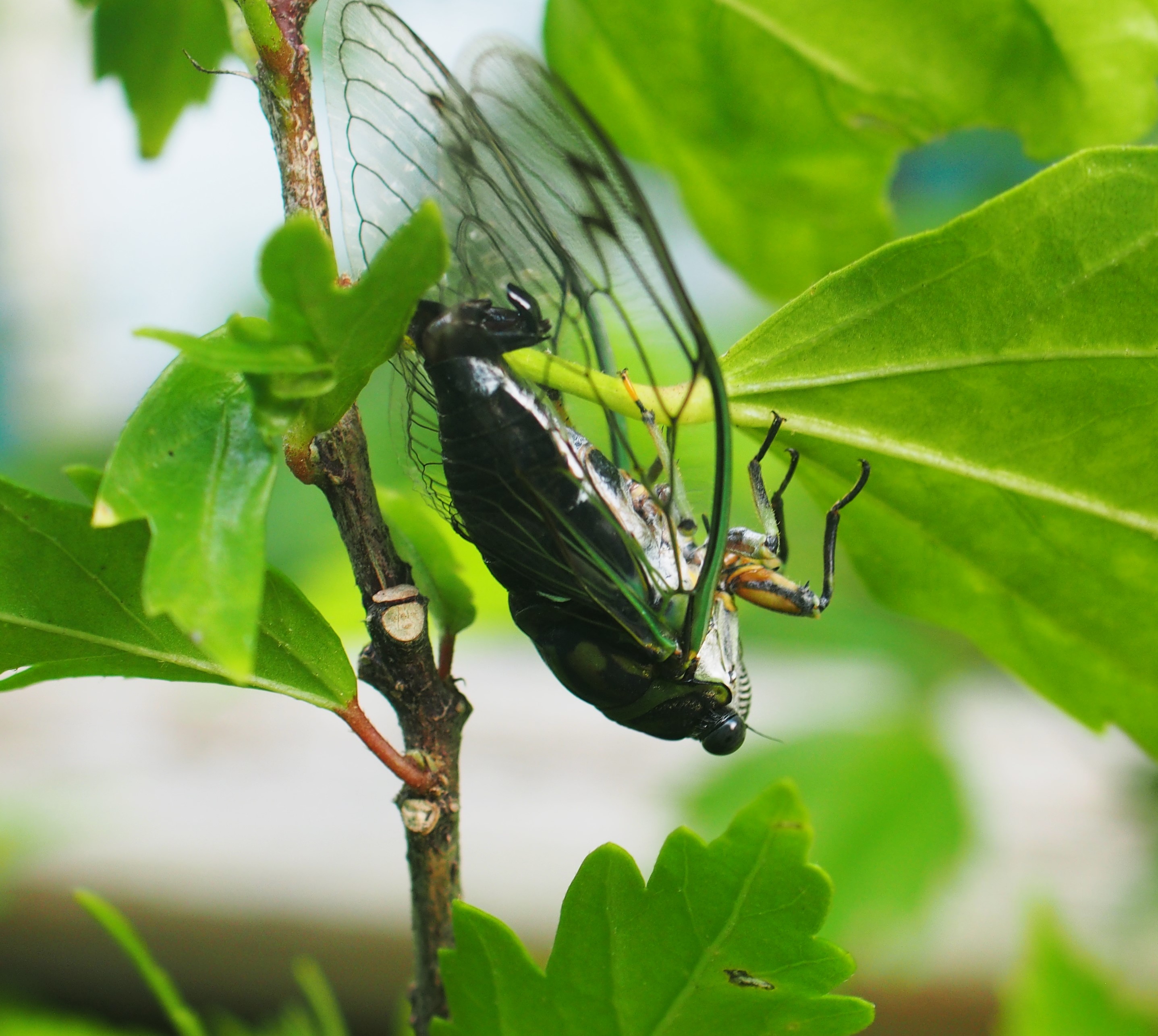
Now to the North Wall to view the Barklice. First, some "encrusted" nymphs. In case you don't remember this, these Barklice have sticky hairs on their backs, which helps them to create a coat of substrate particles. As the Nymphs grow, this coat disguises them until time to shed that final sticky coat and appear as an adult which we can now recognize as a member of genus Trichadenotecnum. By the way, note as in picture 2, lumps of clay don't have legs!

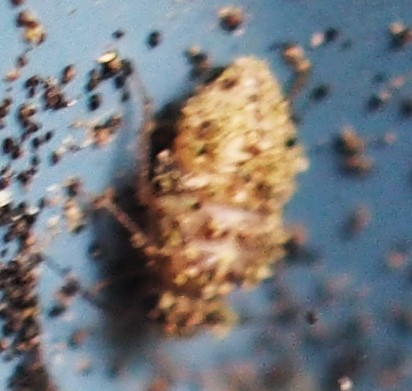

Our oldest Barklouse friend, Graphopsocus cruciatus, has such vibrant color and pattern! In picture 2, do you think the upper one is eating someone else's eggs or has it just finished silking over the group of eggs?
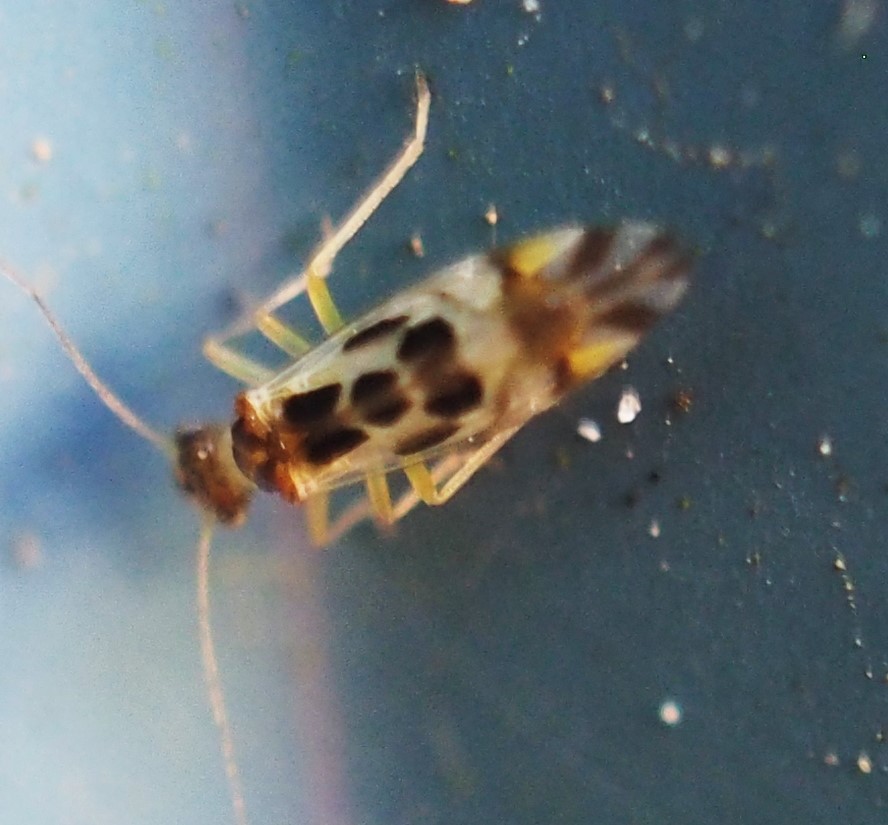
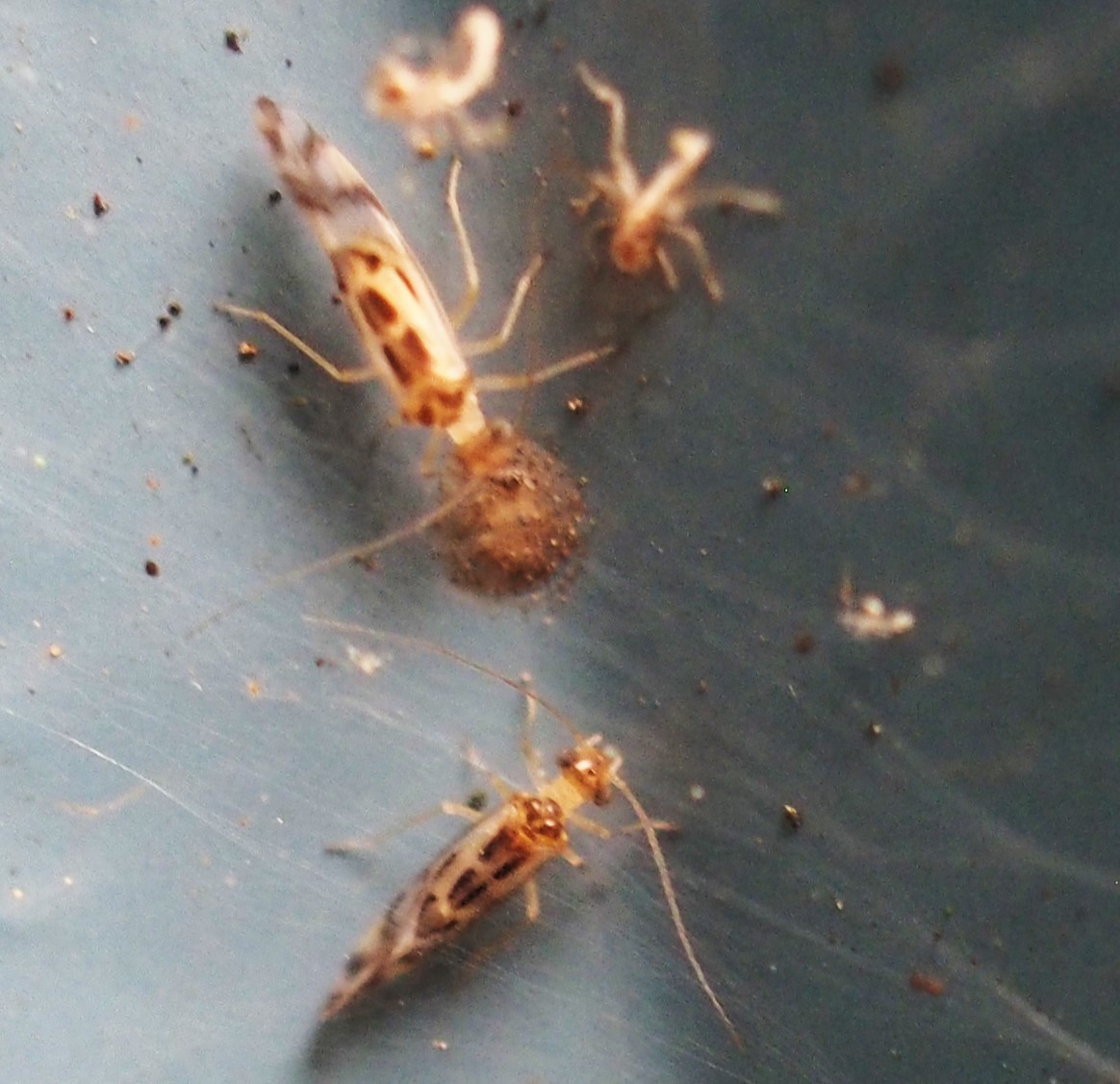
On to the Flies! This was a great week for those little Flies that mimic tiny Moths. All these are Bathroom Moth Flies.
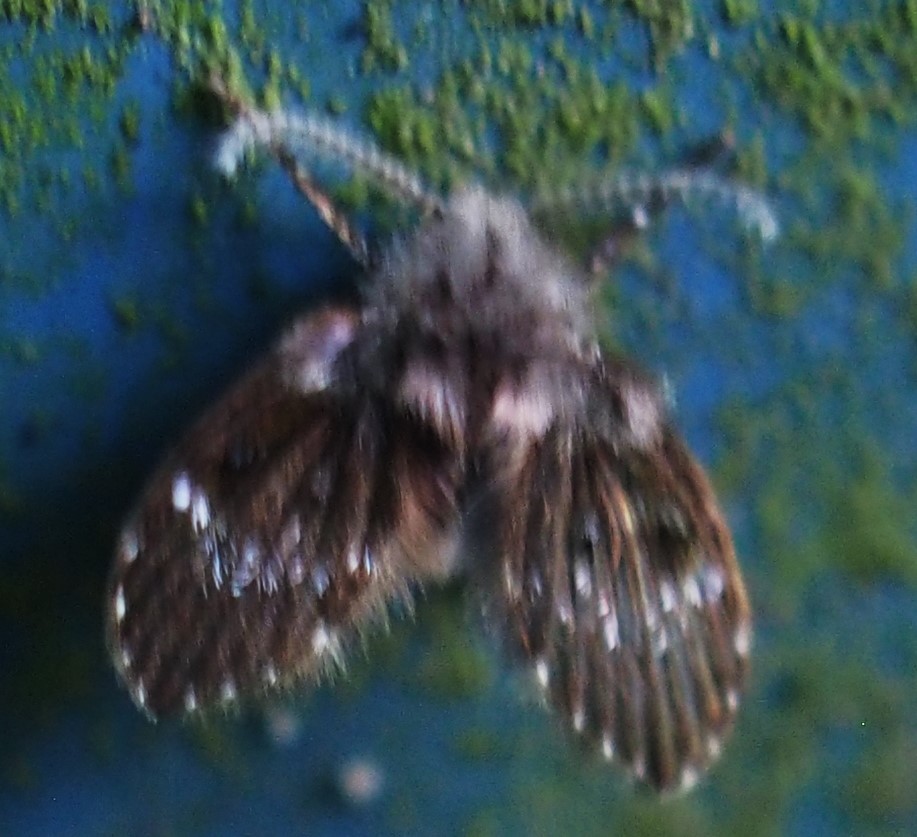
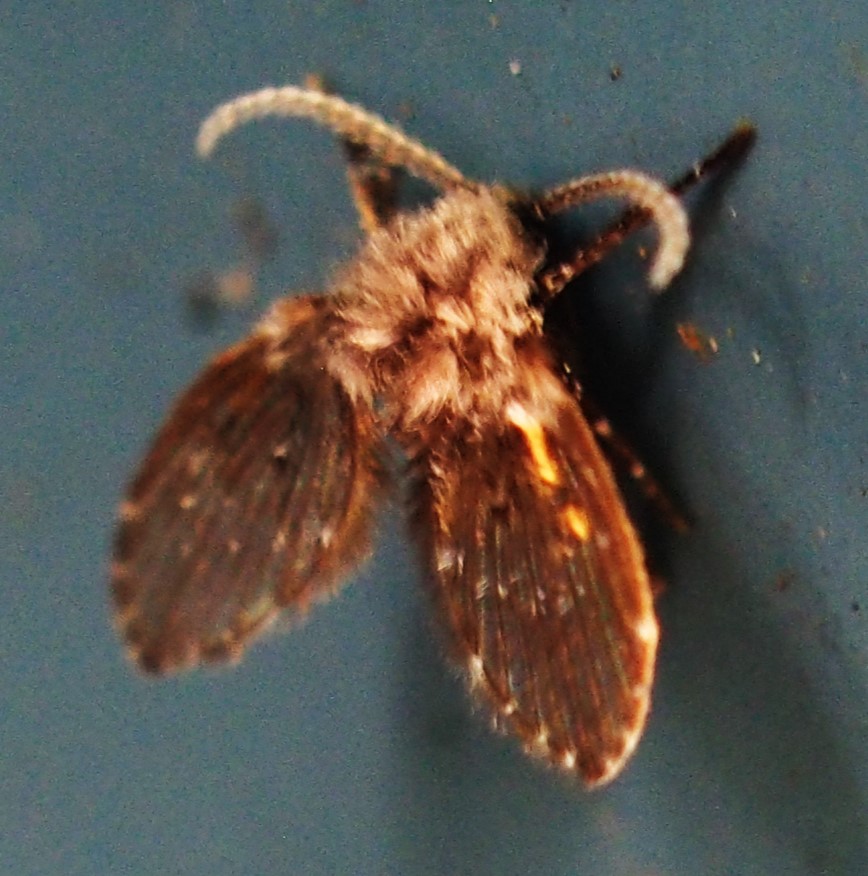
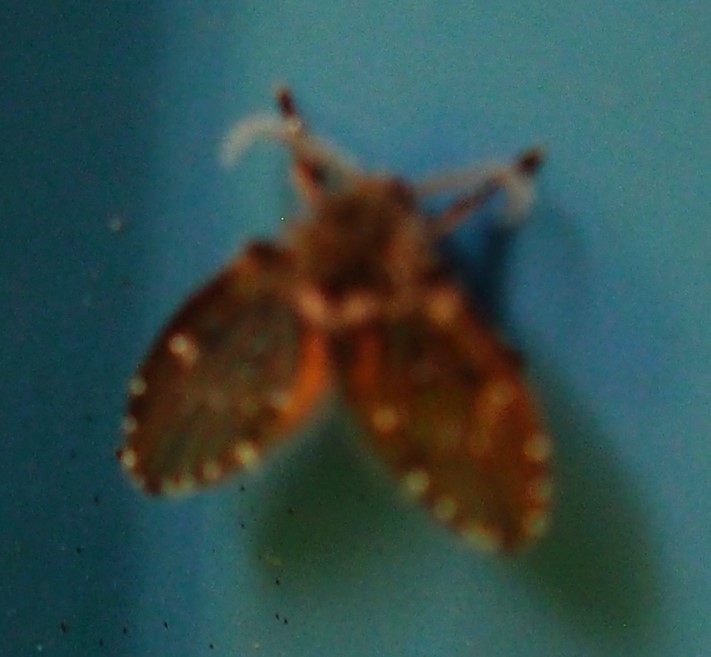
This very large Crane Fly was such a good picture-poser! On the other end of the size spectrum, these tiny green-eyed long-legged ones were back too. I believe they are two different species.


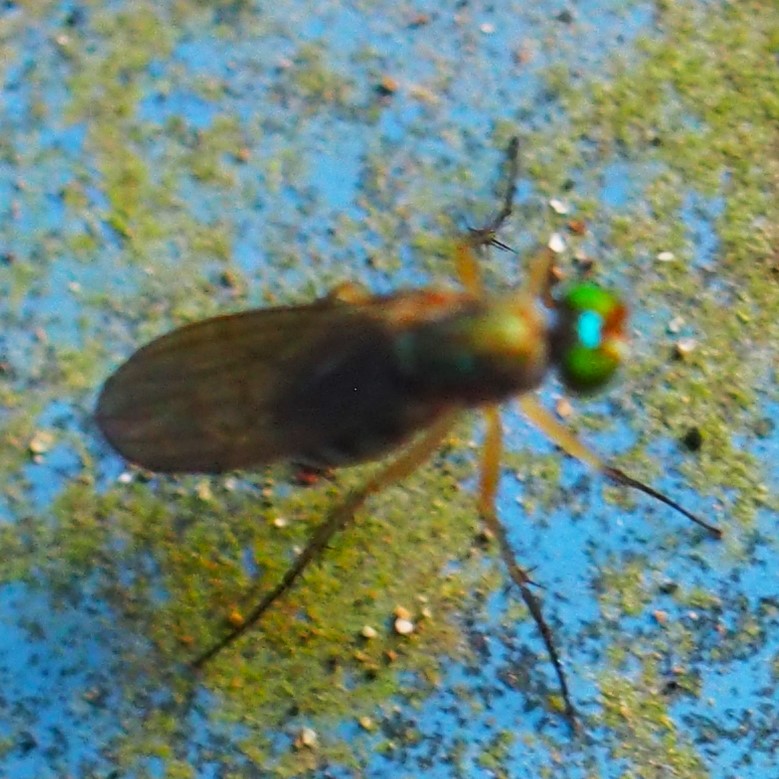
Let's see if we can group these House-fly shaped ones (the Muscoid flies). Number 2 is our old friend the Root-maggot Fly, while number 3 has the most gorgeous red eyes.
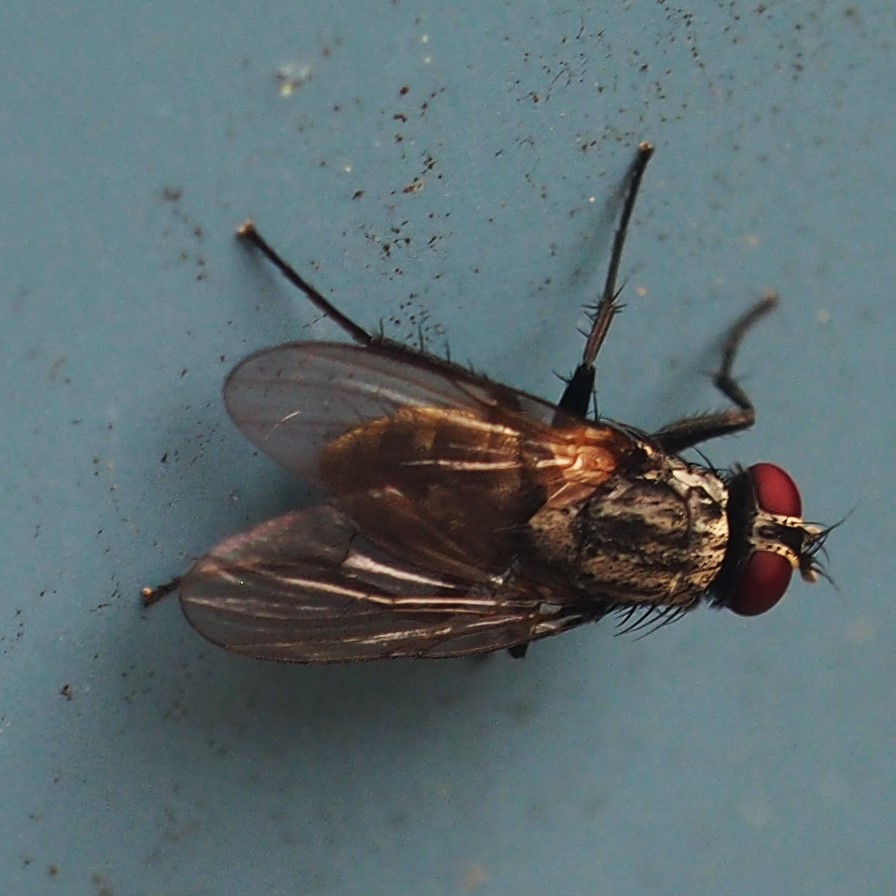
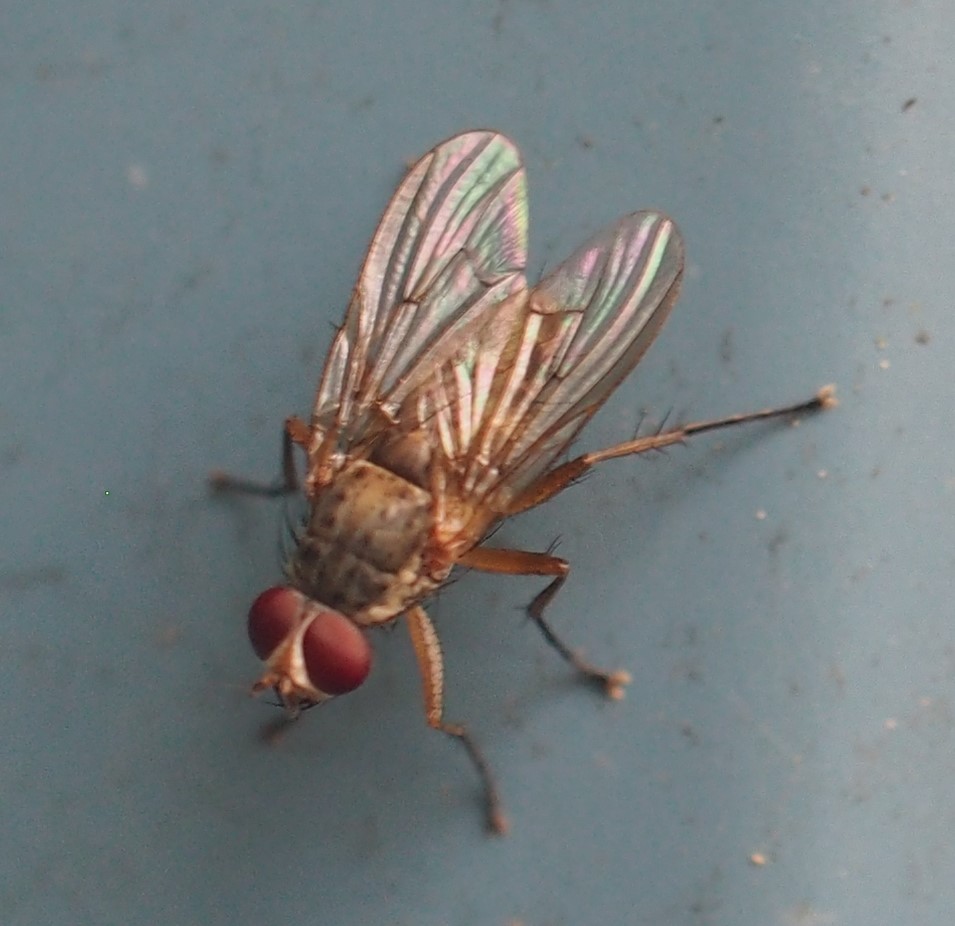

Continuing with the house-fly shaped Flies, here is a very common striped one, also with red eyes. Second and third show beautiful Green-bottle Flies.
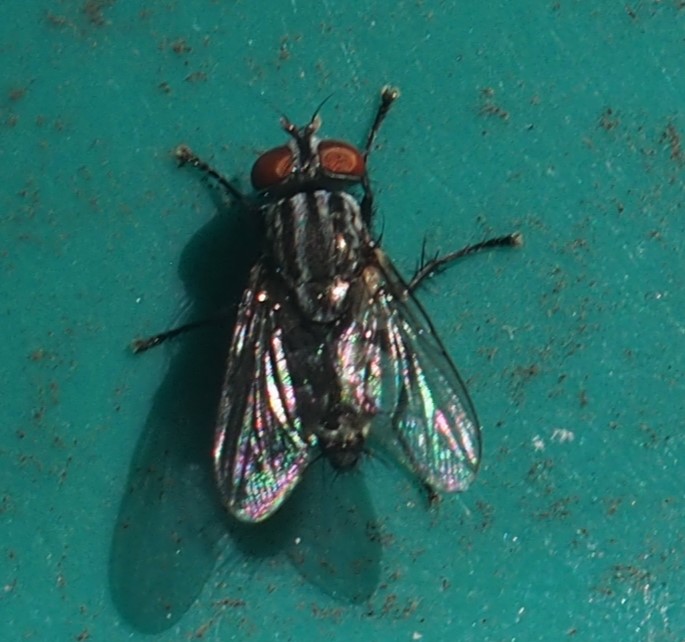
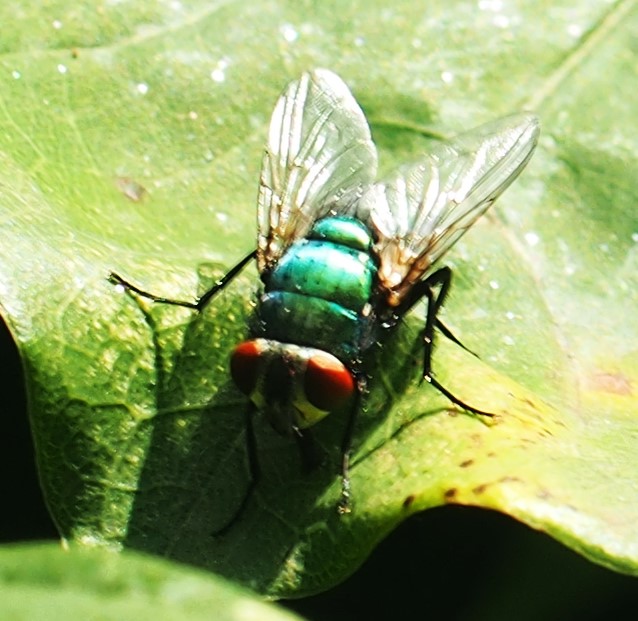

Here are some of the gorgeous tiny flies that come with long legs and fantastic colorings.
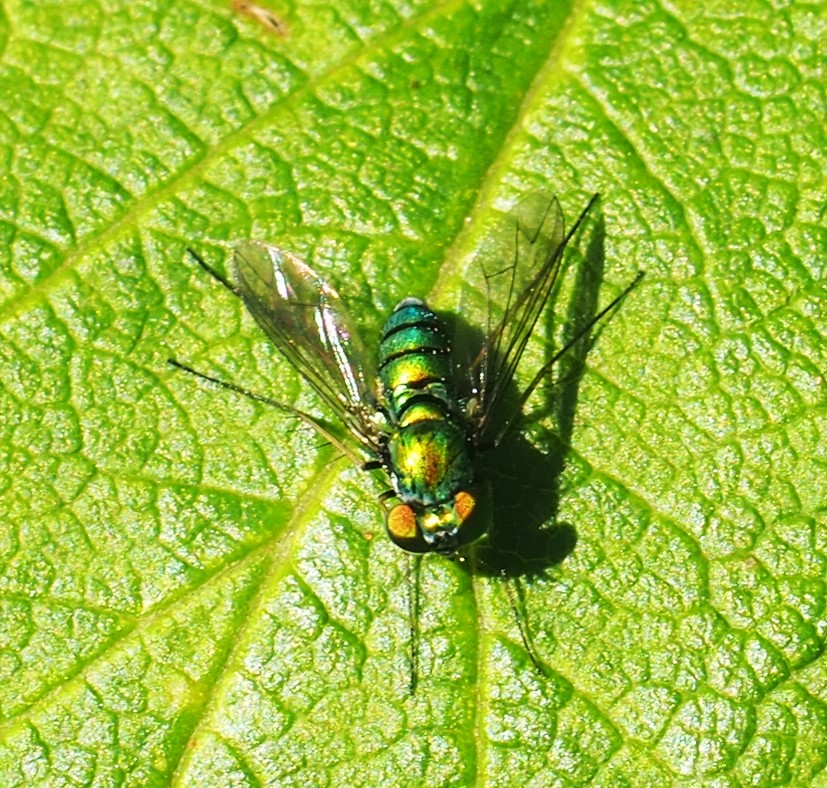
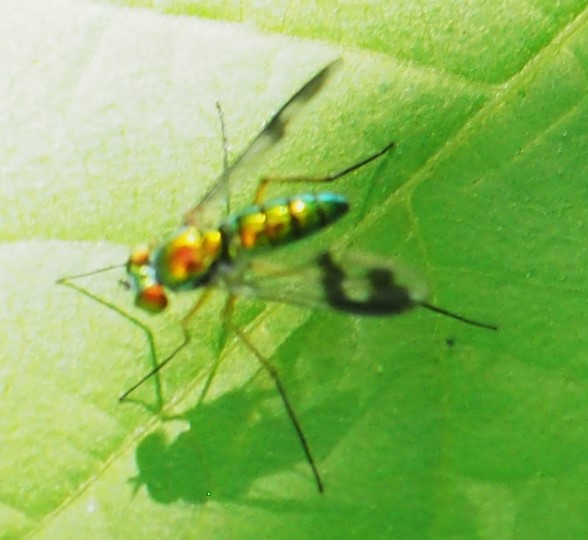
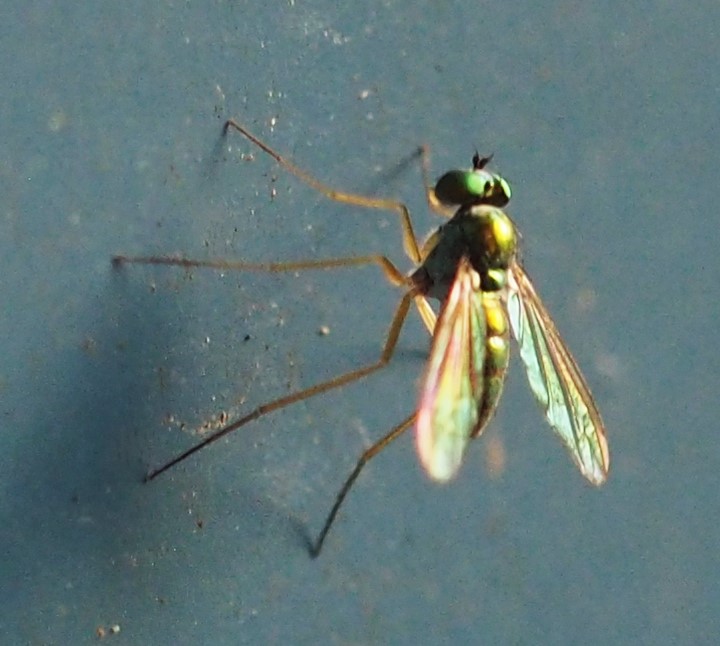
Let's just feast our eyes again on those beautiful long-legged flies with the colorful iridescent
colorings.
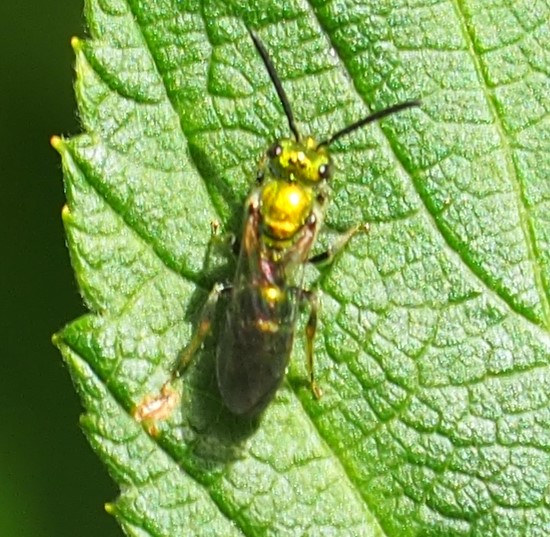
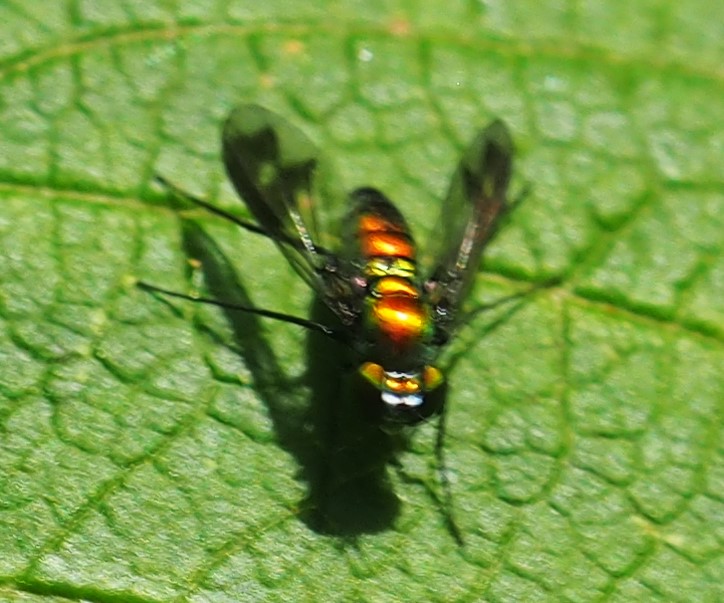
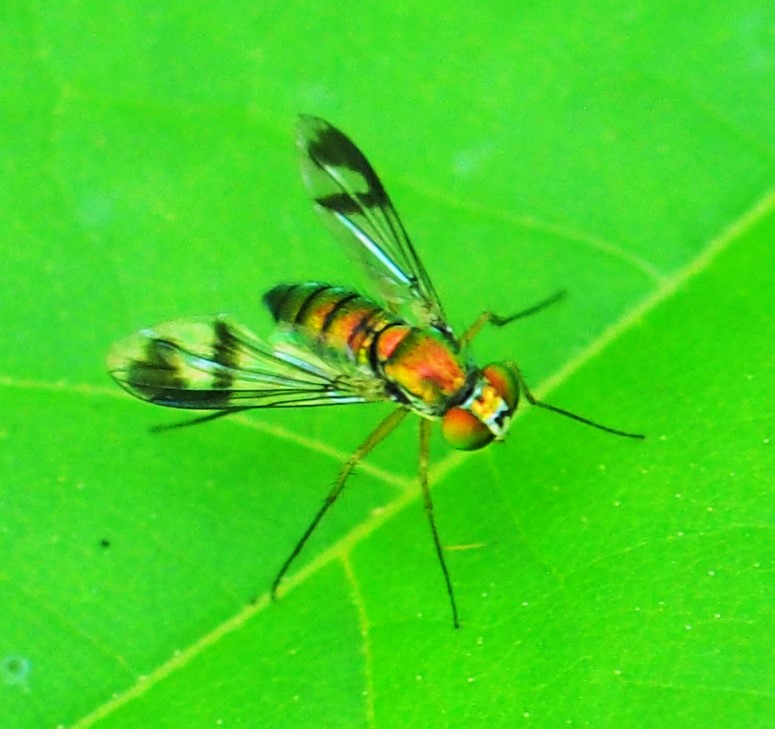
The Mosquitoes love it so much when I am sitting still in my chair trying to photograph one of them. Just as I'm jockeying for a good position to shoot one, another is sitting on my wrist seeking a good angle from which to nail me! Note: there seems to be something that prevents you from noticing the jab until most of the good stuff has already gone in. Number 4 shows a different kind of Mosquito/Midge that's out there right now.

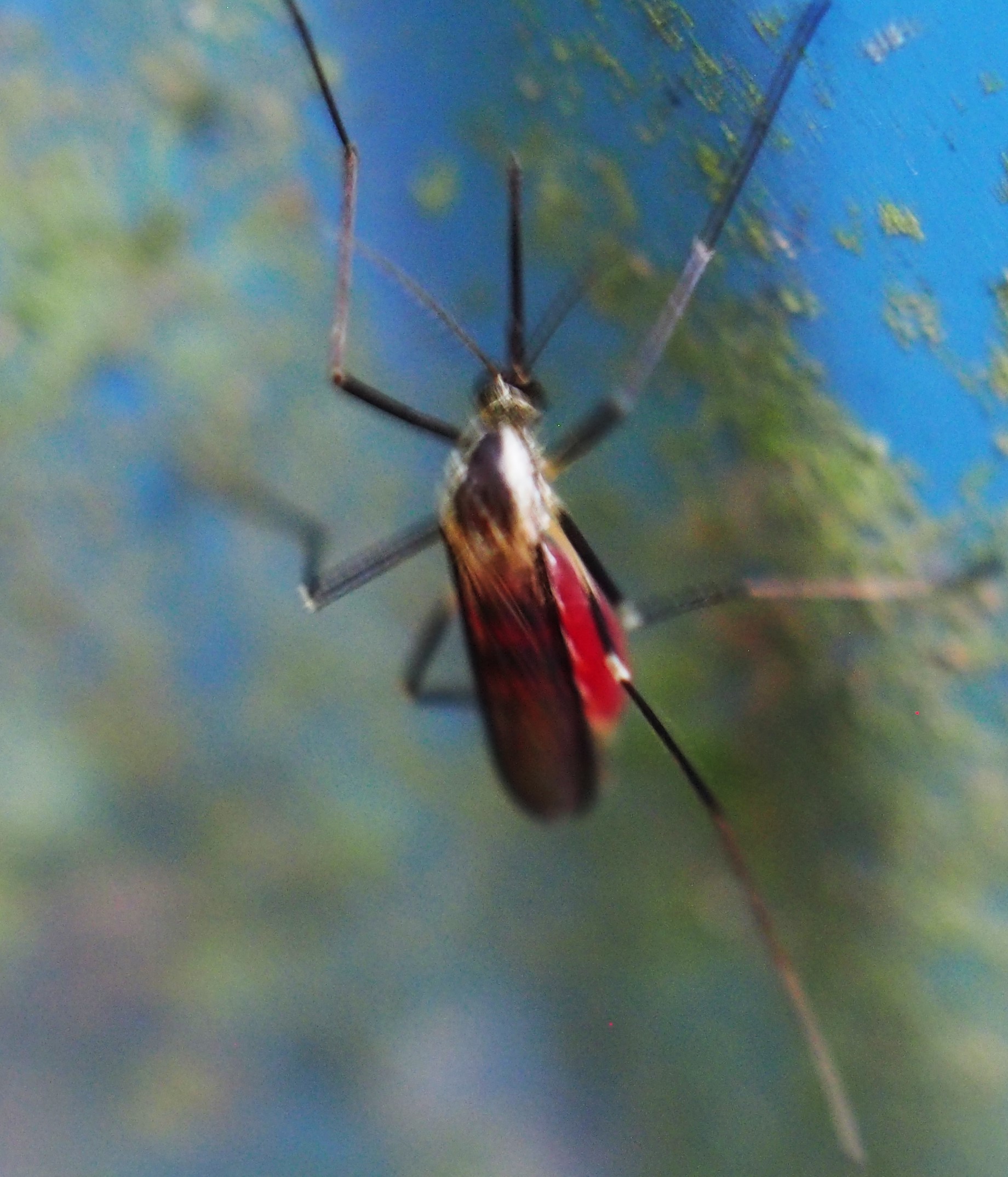
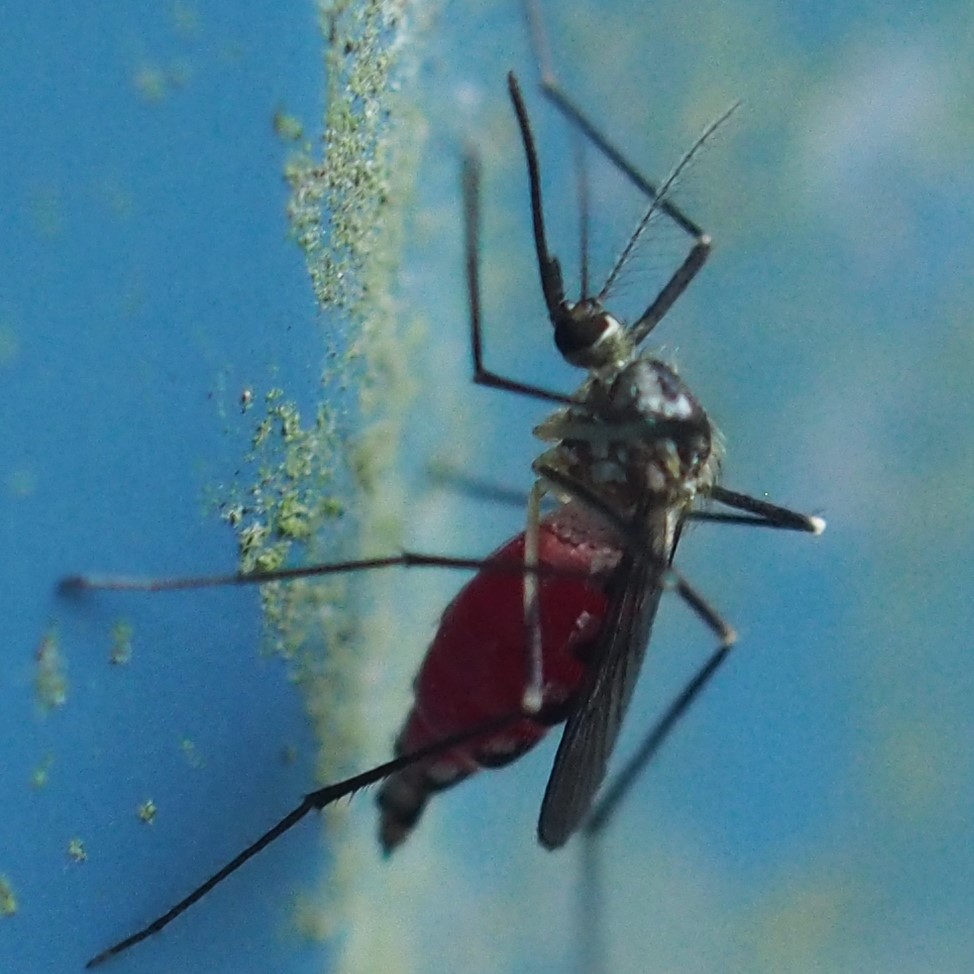
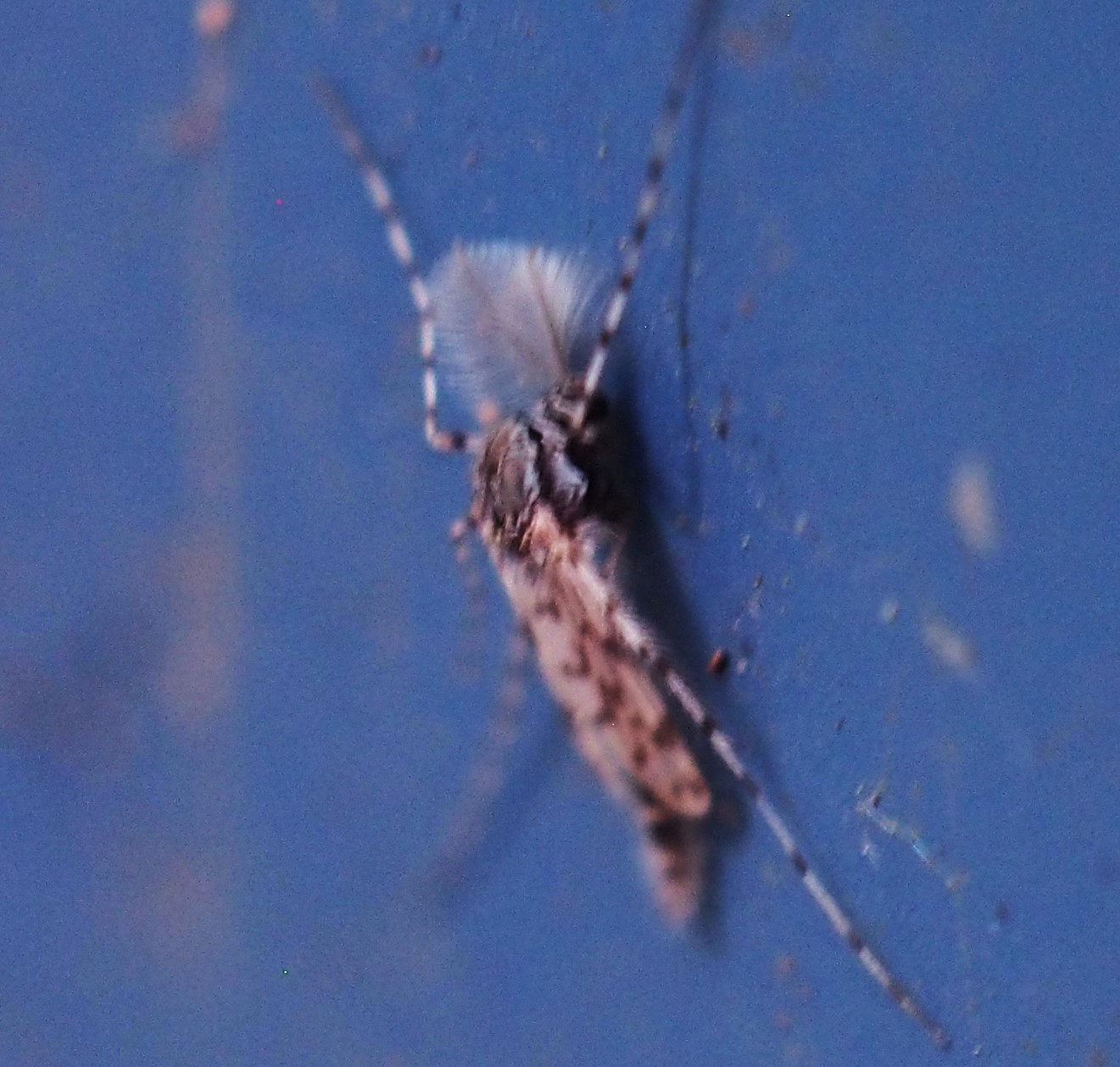
Here is a tiny fly in yellow and black. It seems to be in genus Thaumatomyia (one of the Grass Flies, most of which eat grasses as larvae, but some of which parasitize several kinds of insects). It's probably T. glabra. Next you see a tiny Hover Fly, Toxomerus geminatus. I was thinking this one was a female because the bottom segments are much fatter than most of the ones you get to see. But I was told, no, it's a perfectly good example of a male!
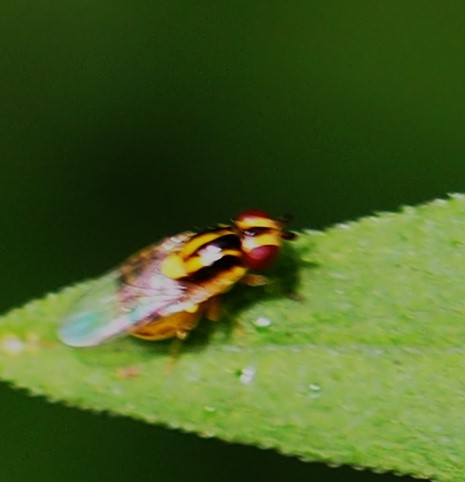
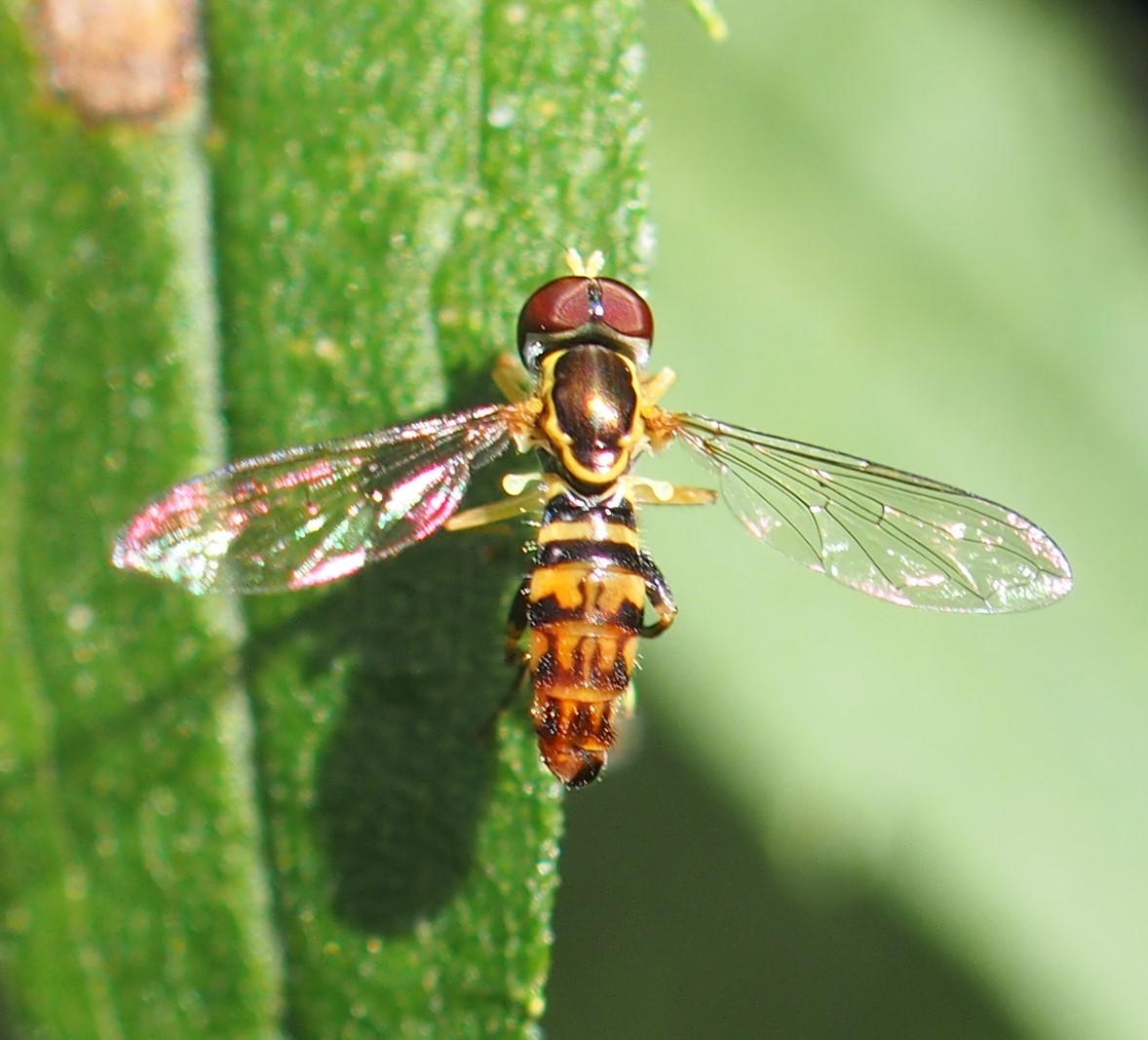
Here is a tiny pink Fly with spots on the wings. It may indeed be an unusual Fly for this part of the world, Meiosimyza decempunctata (The wings do seem to have ten spots.) Within a minute of seeing this pink one, I shot a blue-winged variety. I haven't heard back from my question, are the two different colors two different sexes?
.jpg) di
di
.jpg)
Let's see if we have any Moths.... The first greyish one is Protoboarmia porcelana. The second tiny one is shaped like the Norway Maple Pigmy Moth but has the wrong colors. But the third is really that very Norway Maple Pigmy Moth!
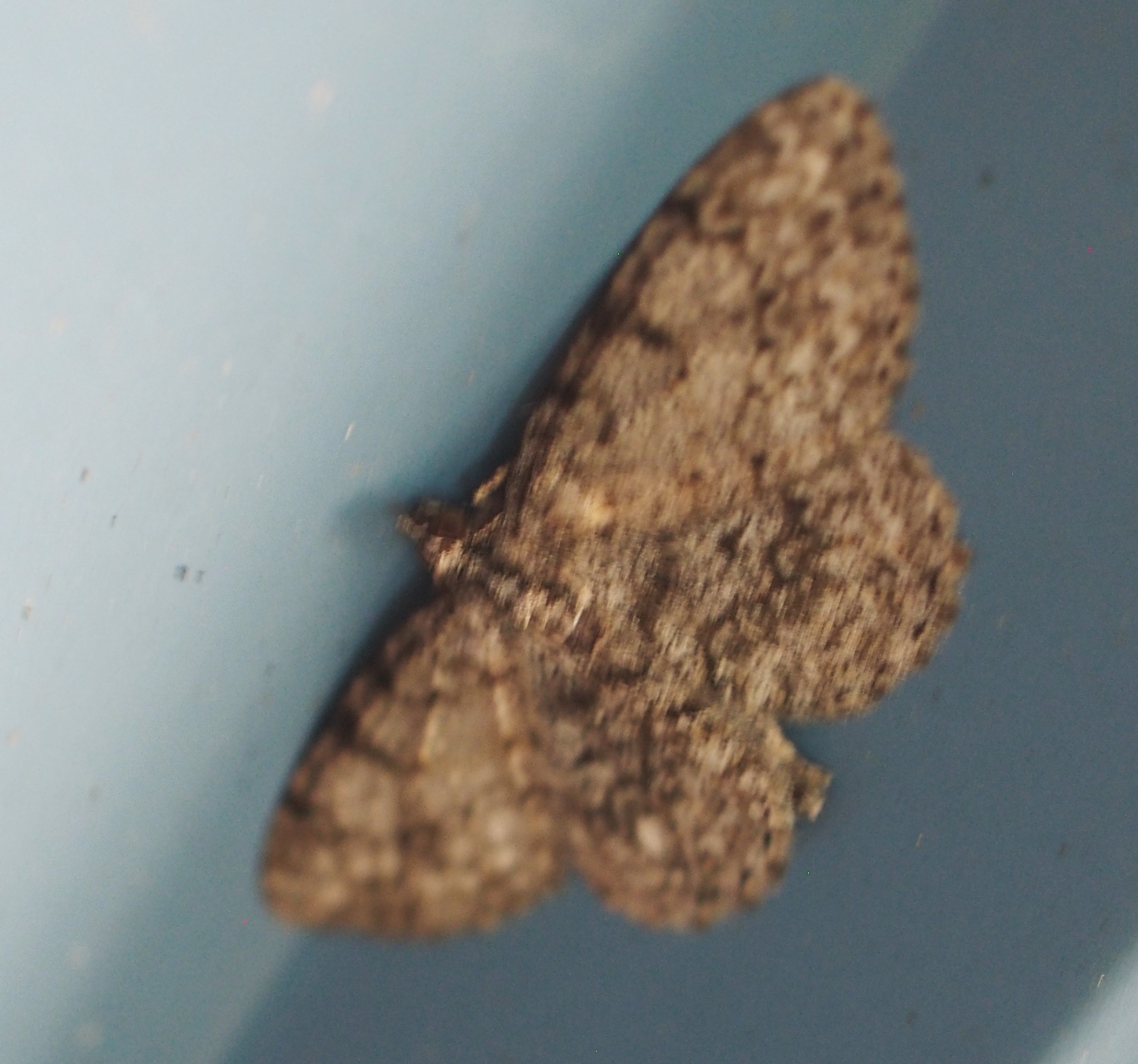
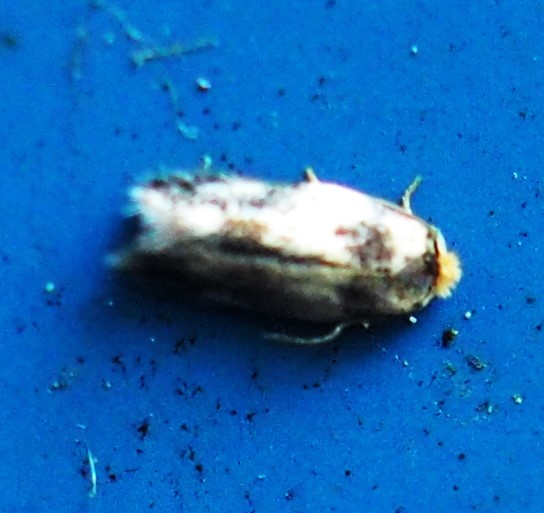
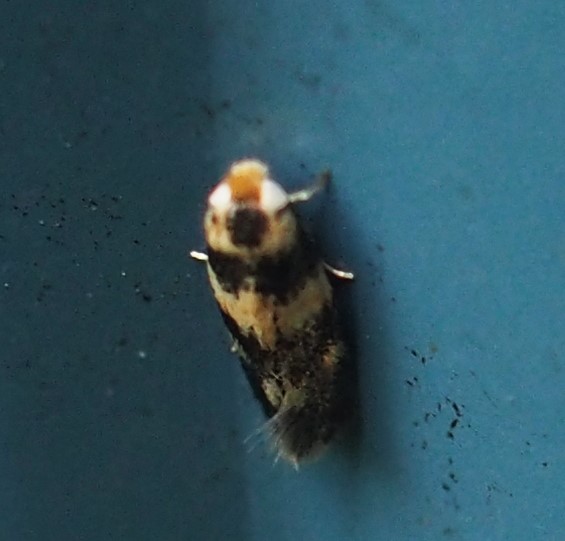
Here are a few more Moths, as yet unidentified.
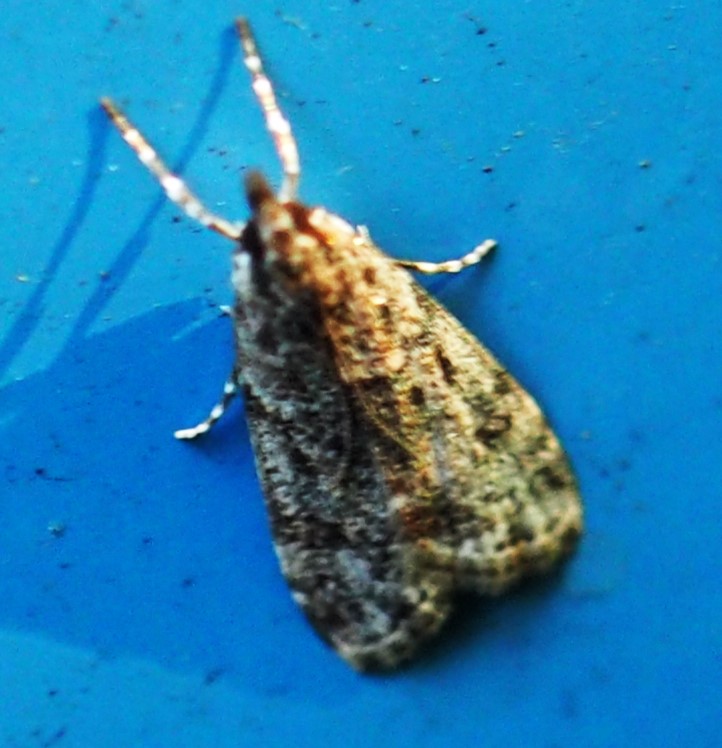

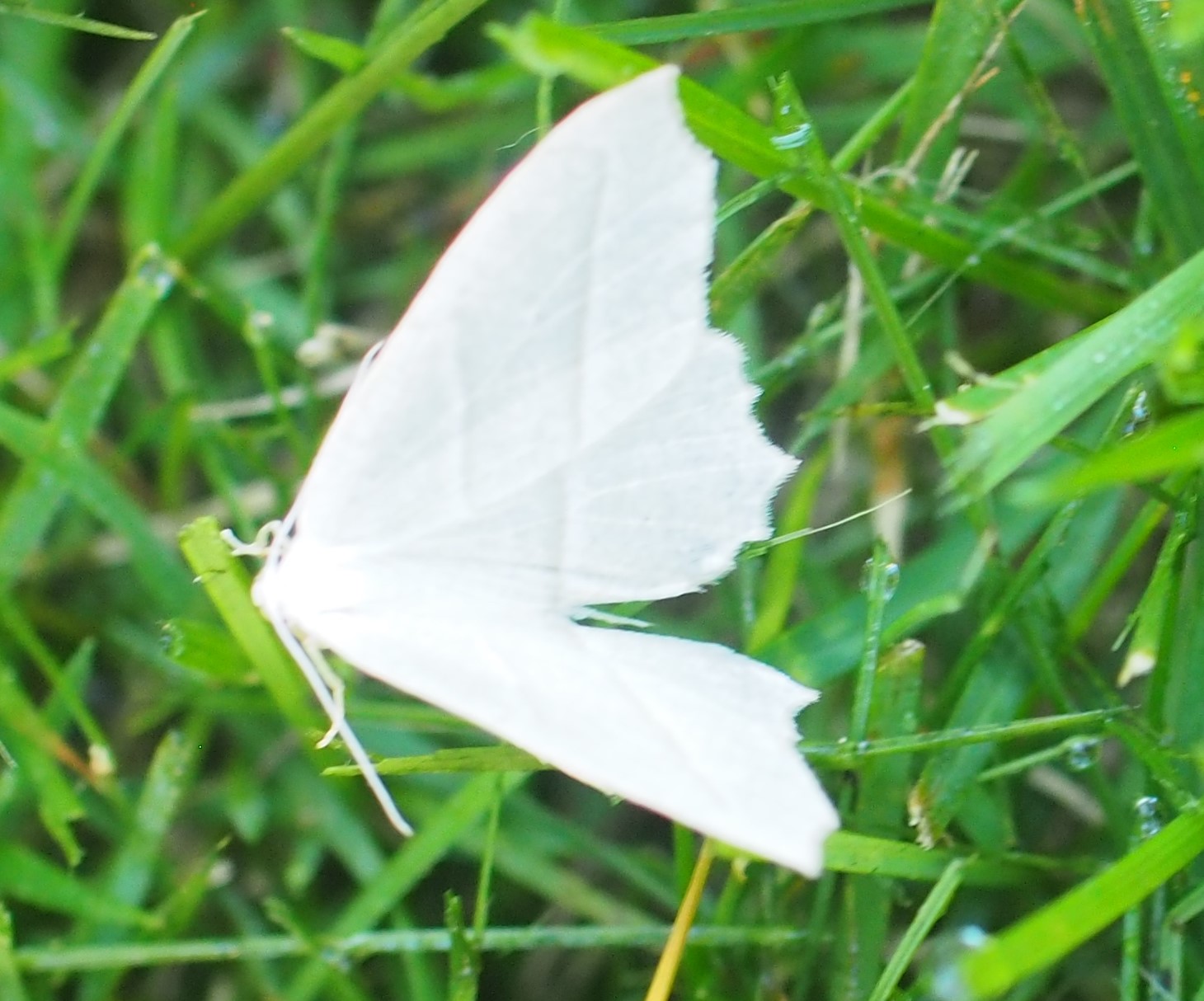
One more moth, the Inverse Dichomeris Moth. And one more Caterpillar, which I saw in my yard and posted for an ID. The ID app found it was born in China, so no dope on that. It's still unidentified! So now it's really time for that Flower Walk!
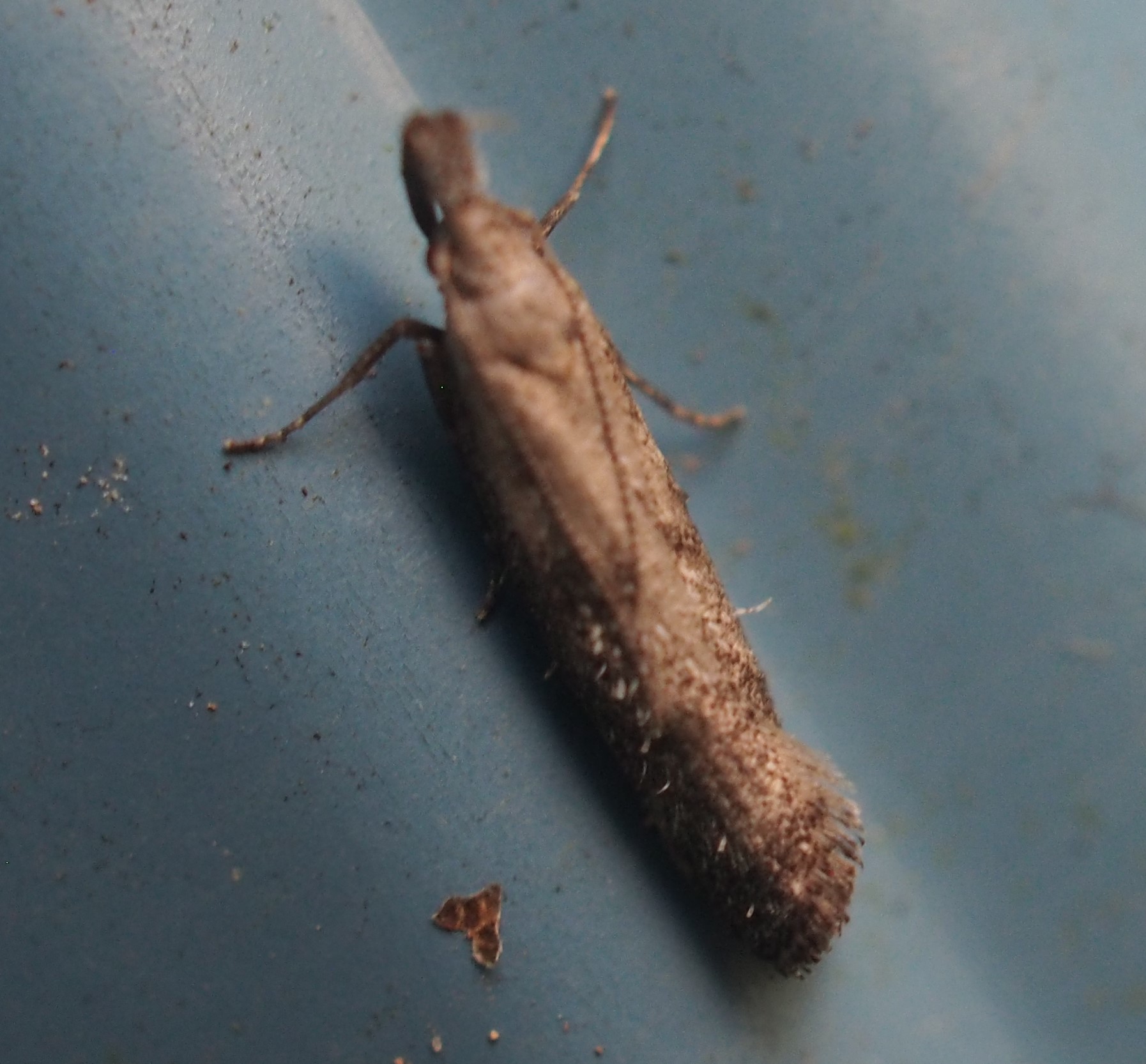
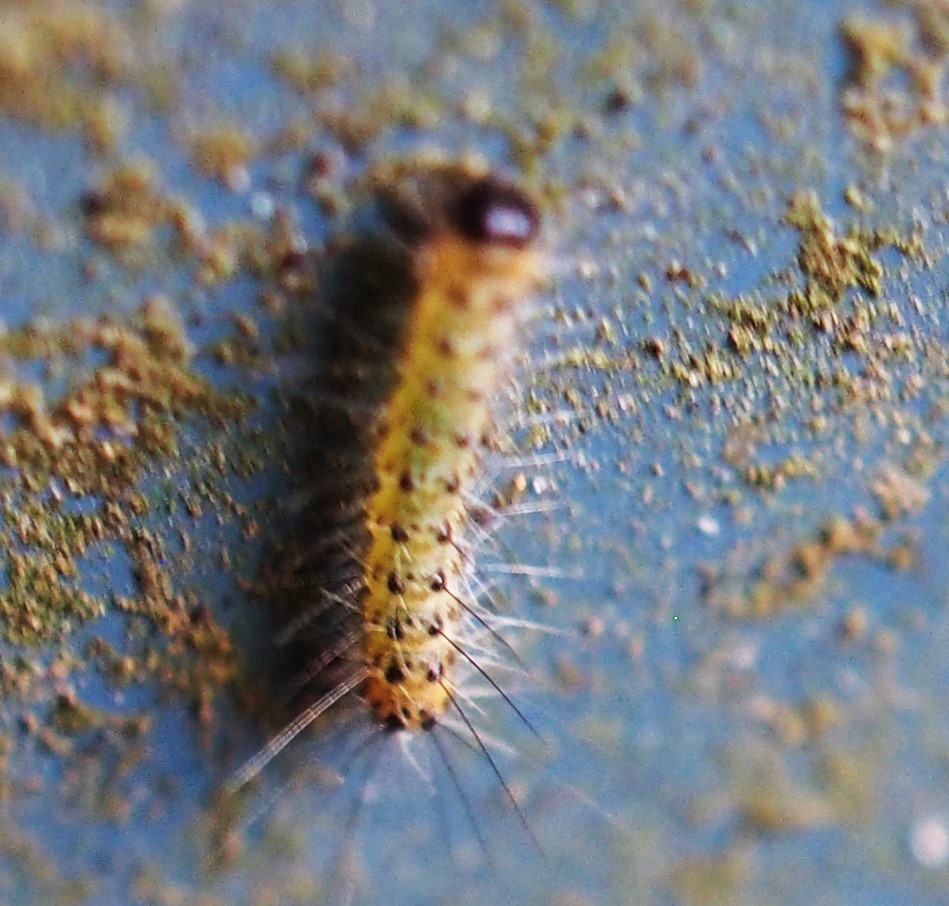
First here is the Tall Golden Evening Primrose, looming above my head. Next is the Trumpetvine, high in the sky (almost). Last is the cultivated Phlox that I bought at Horrocks several years ago. I love this color. Of course, this plant's colors are different in different lights.

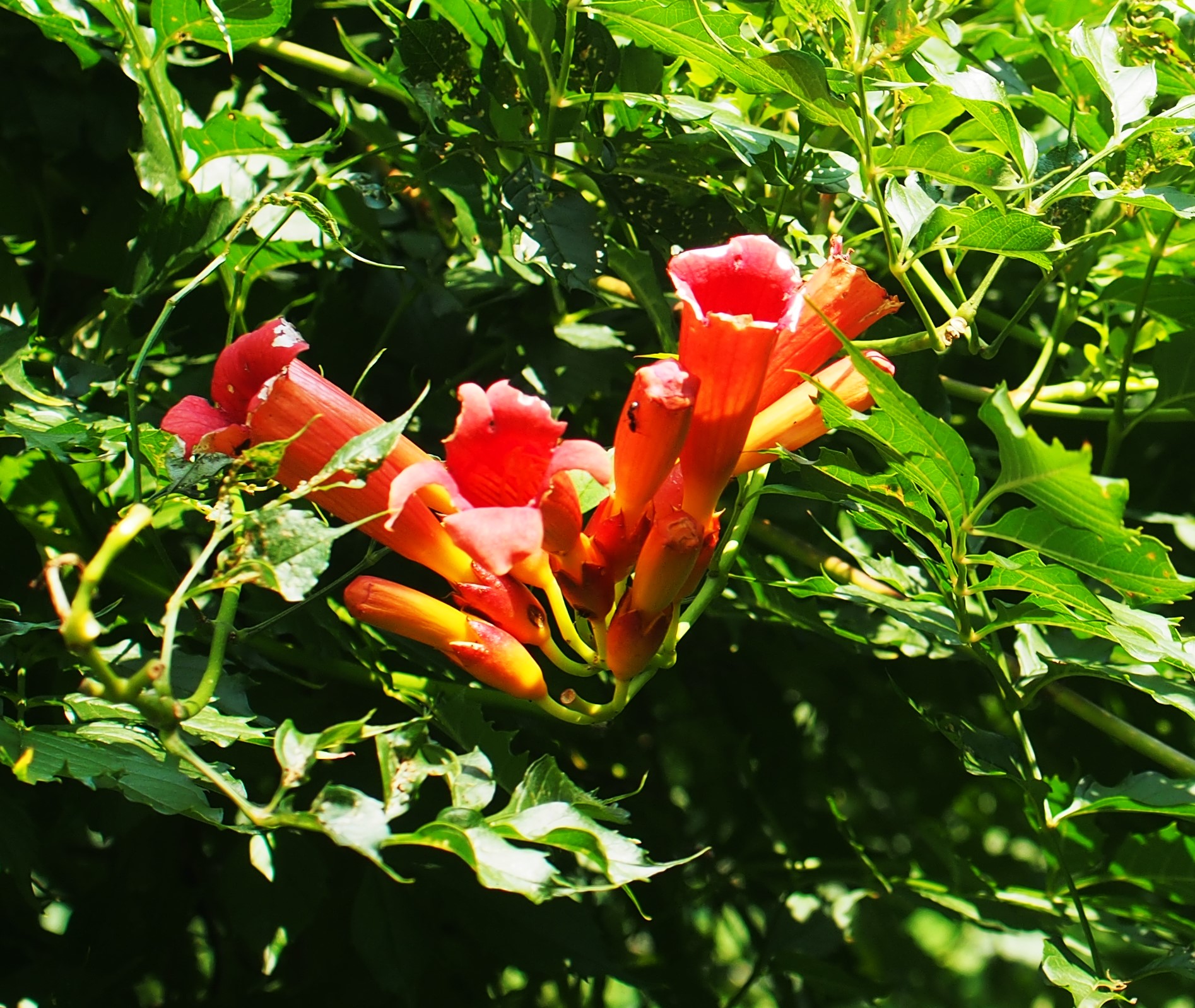
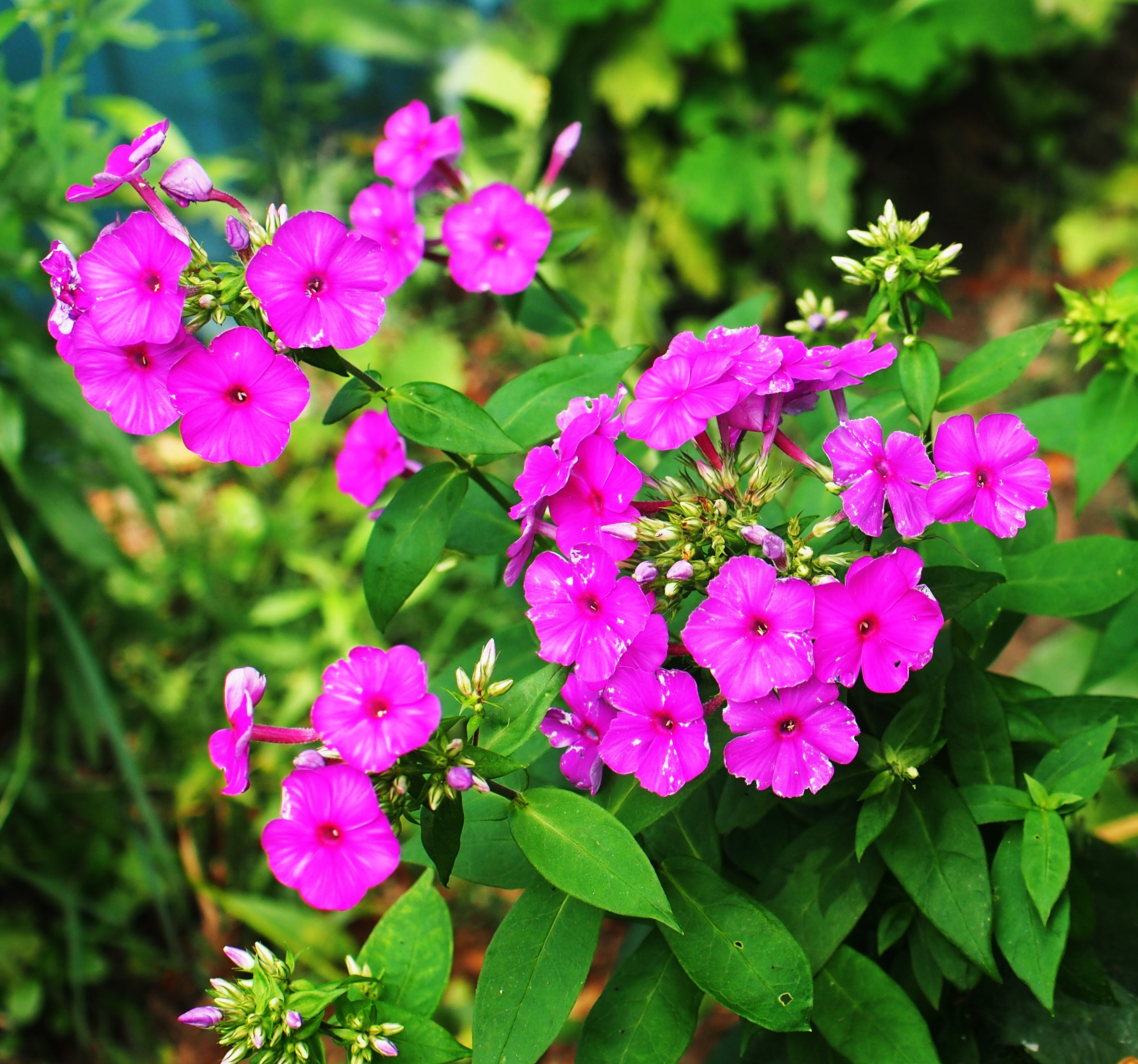
Finally, the Coral Berries that make such a nice accent in the Winter also provide the first food of the lovely little Fraternal Potter Wasp and Northern Crab Spiders. What tiny flowers they begin with!
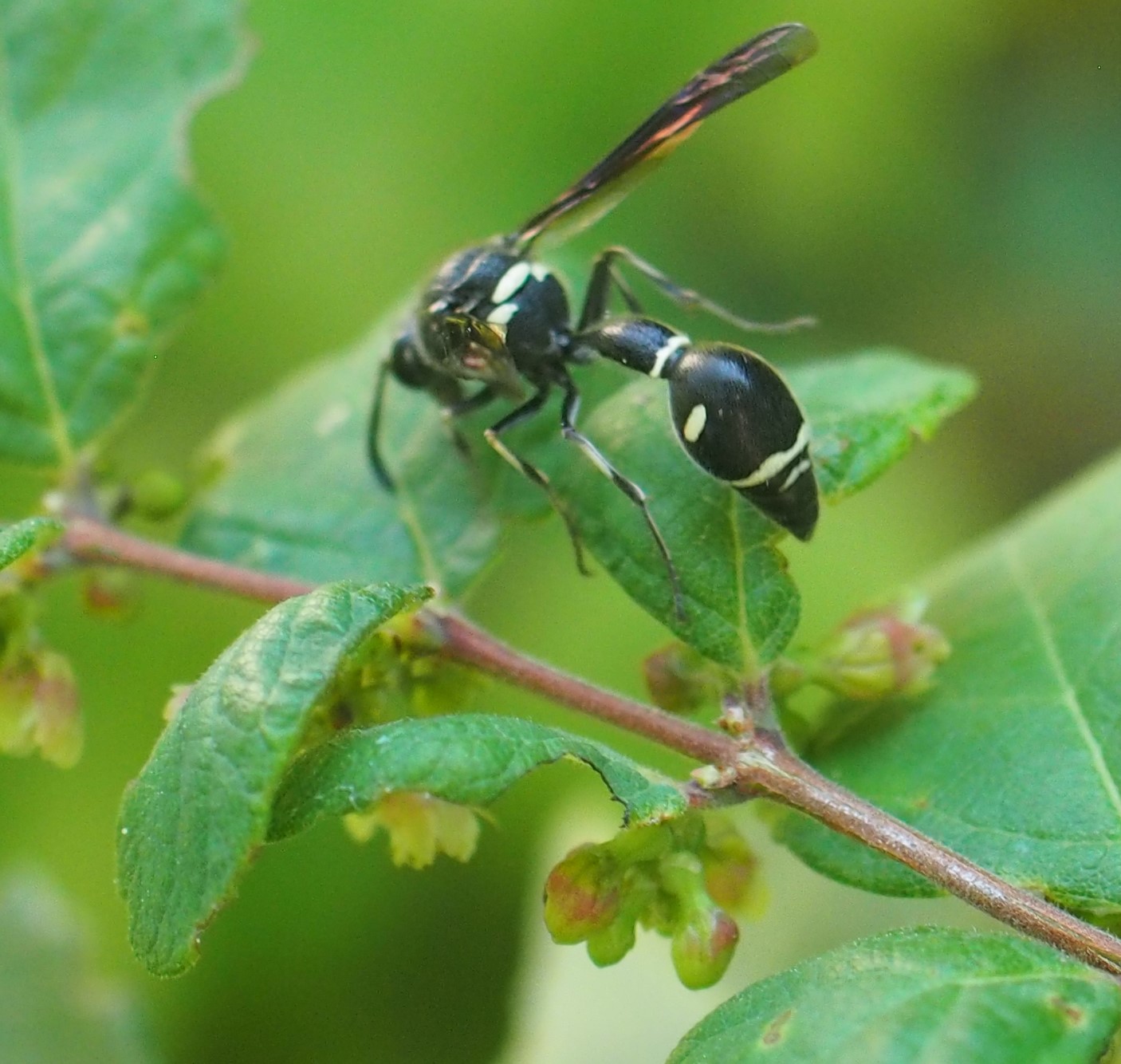

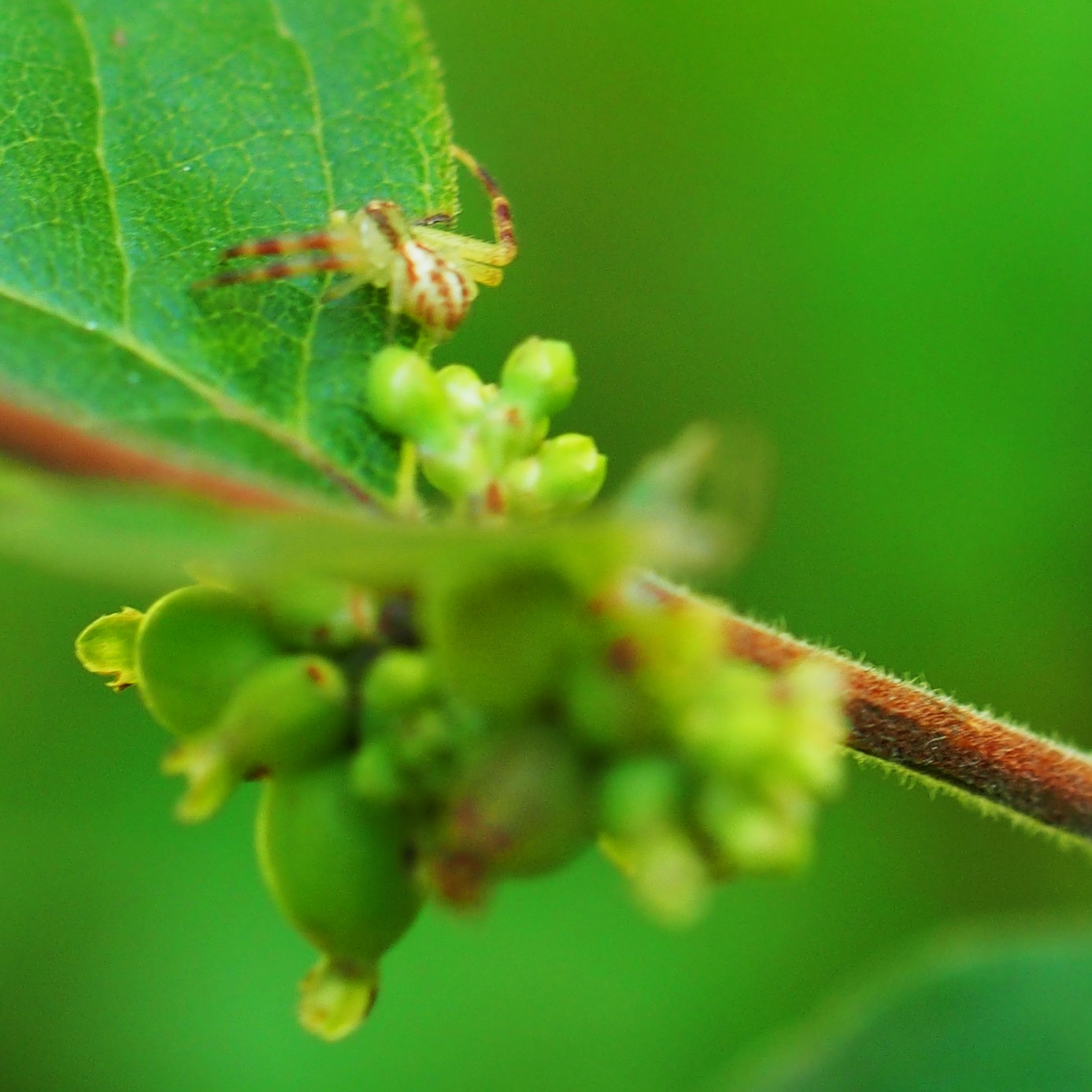
Over at the gate we see the Japanese Anemone is finally blooming.

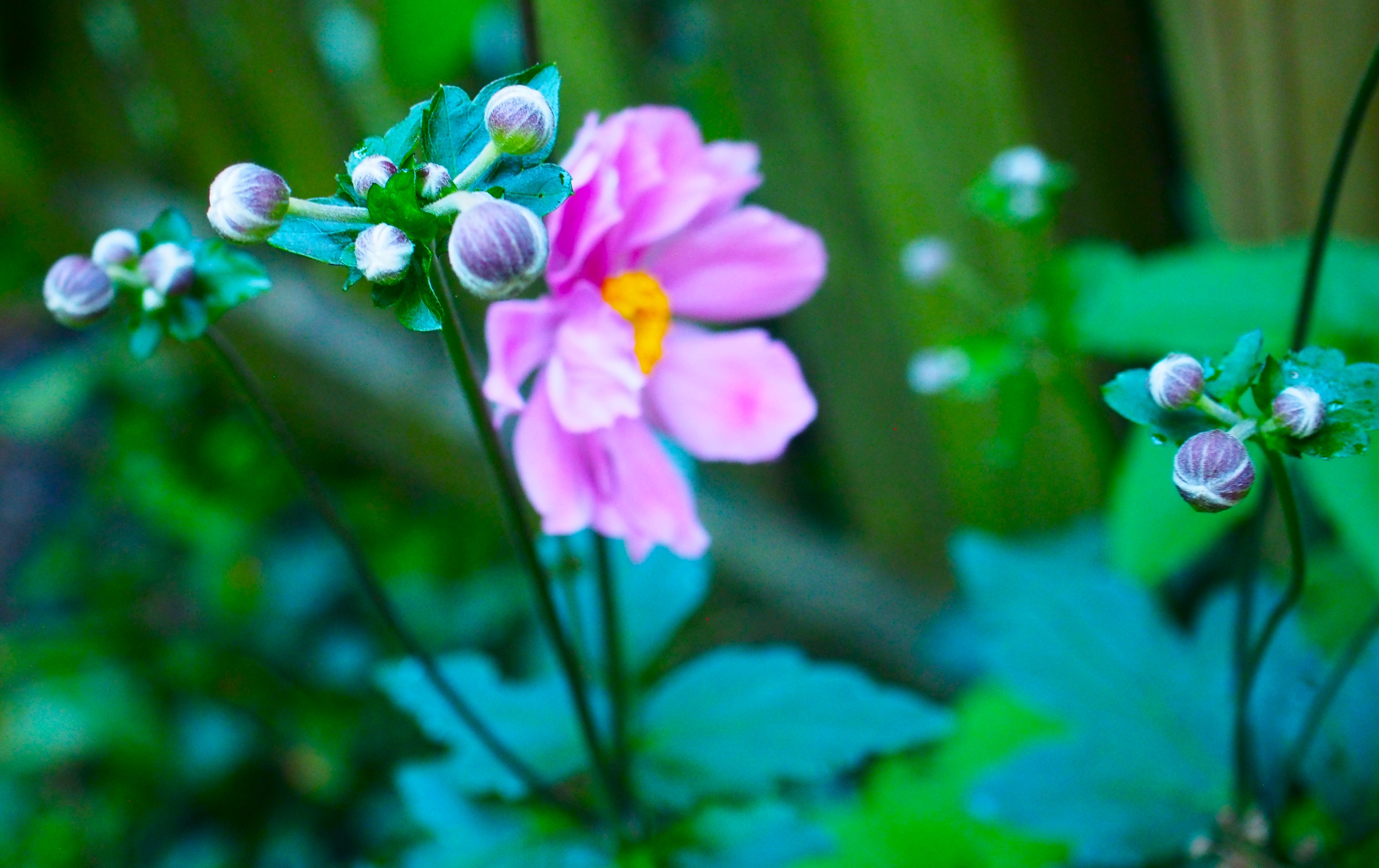
The Asiatic Dayflower is blooming, with a different flower each day.

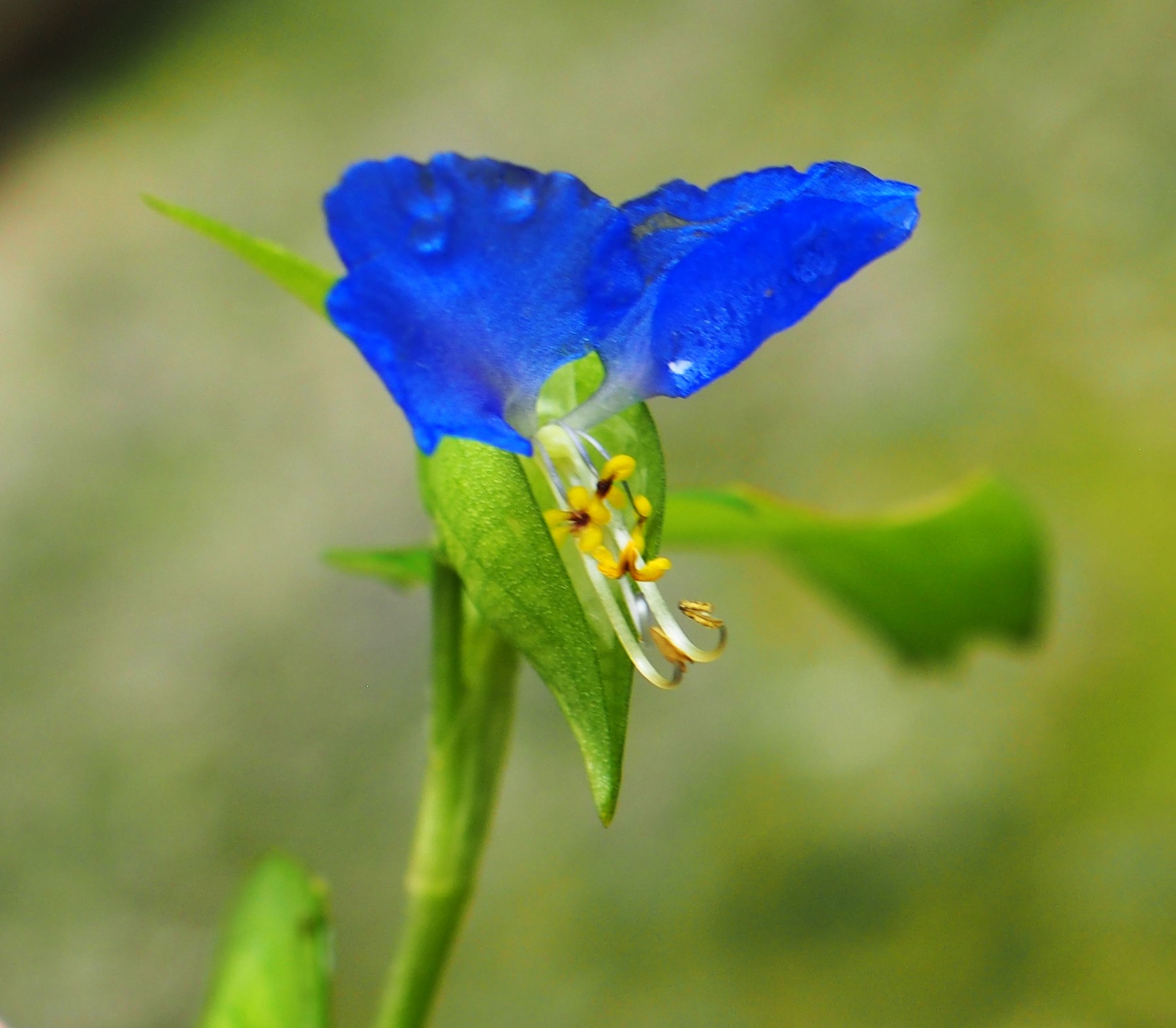
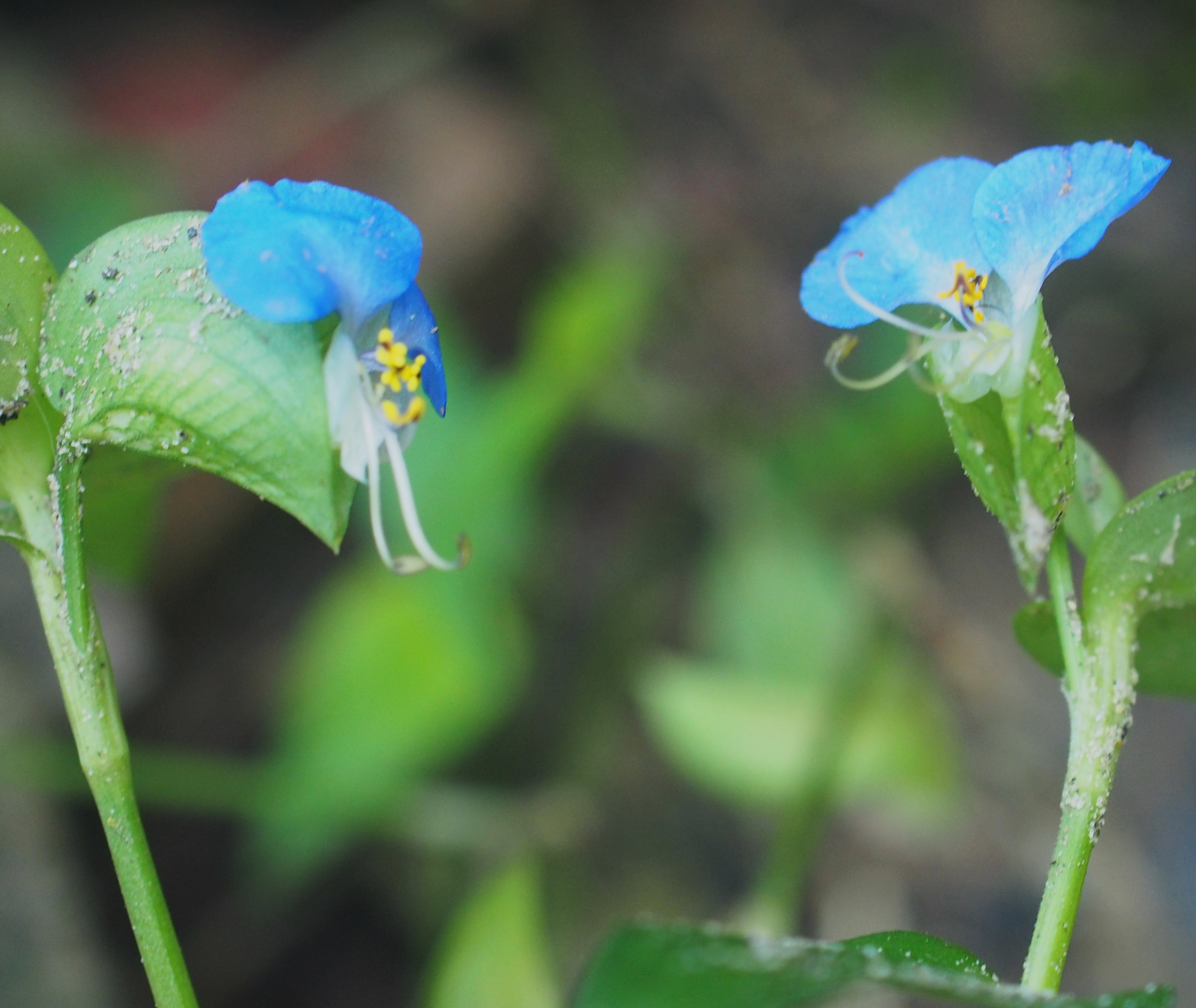
The Asters (first the purple and now finally the pink ones too) are just getting started.
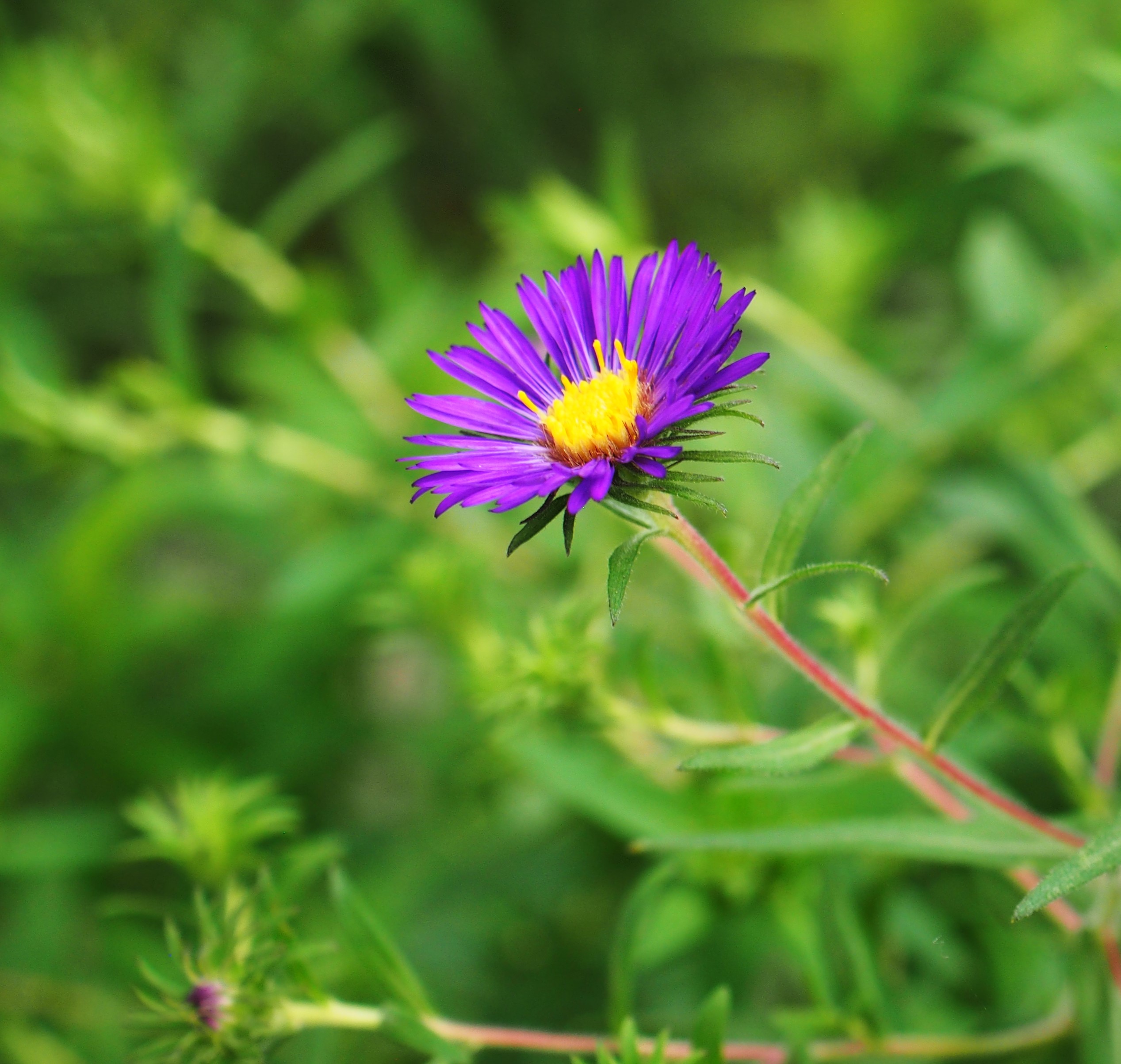
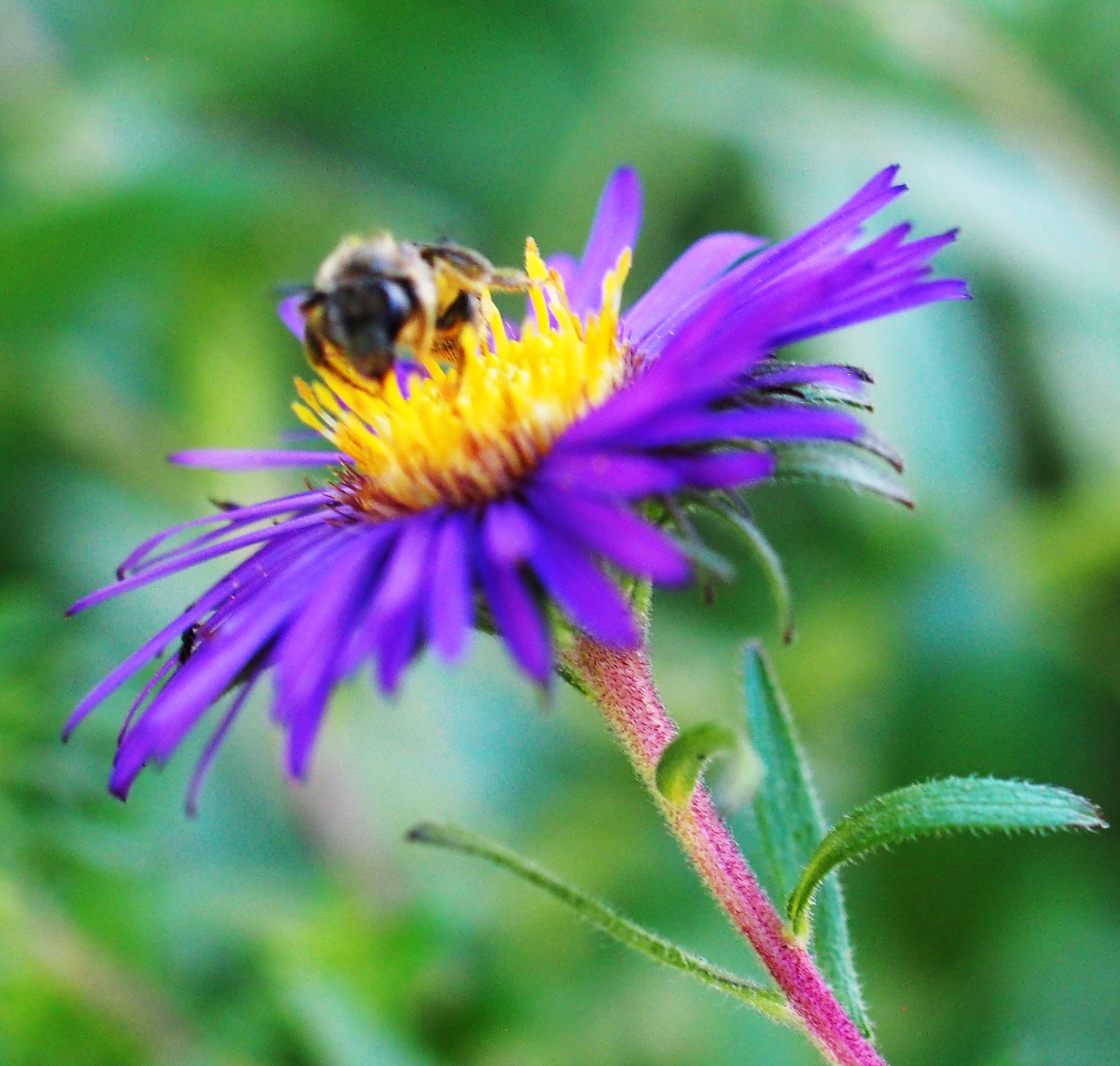
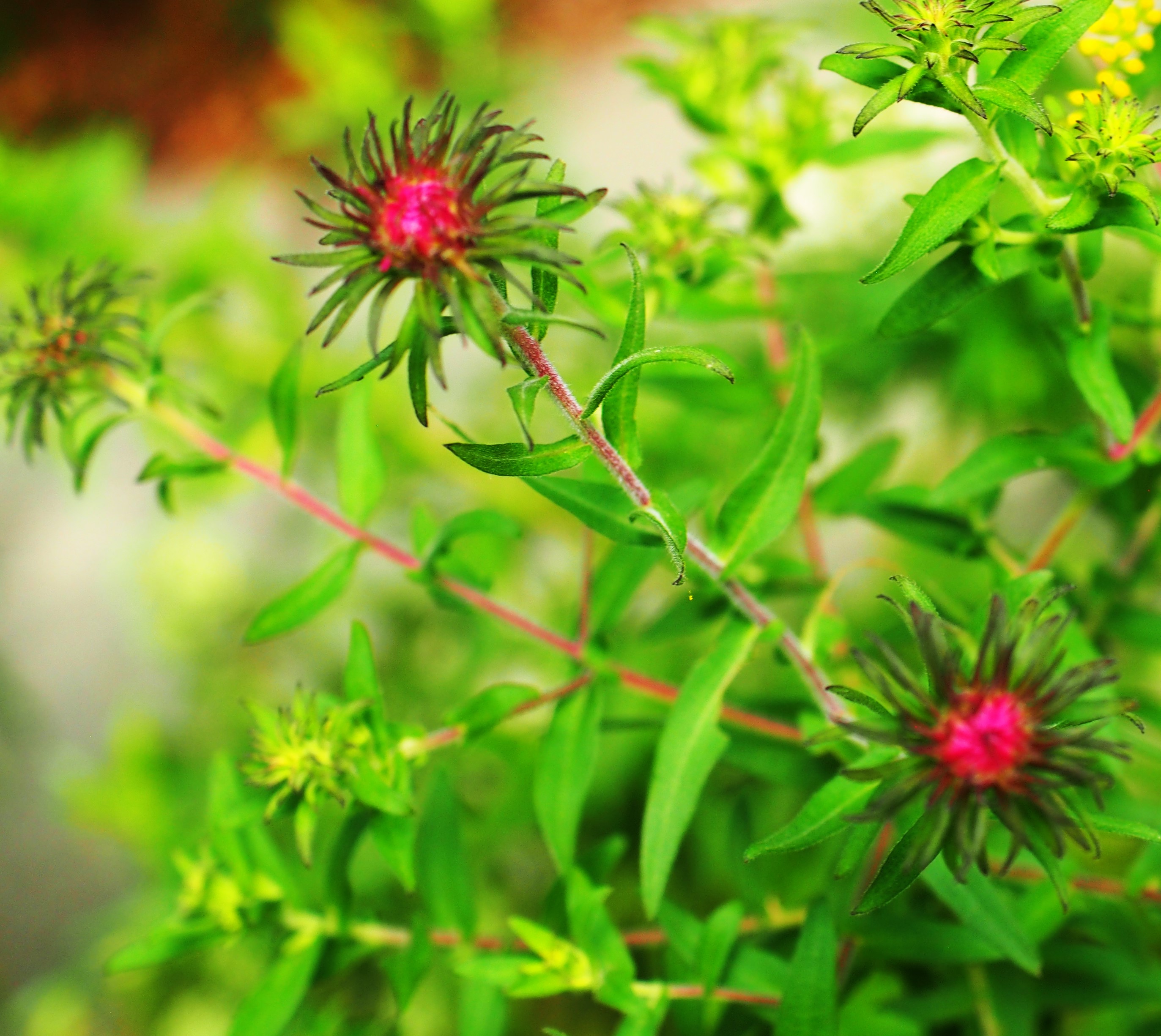
That Deptford Pink is so small, how can it keep on and on blooming for so long? Next, some Ferns
of various species.

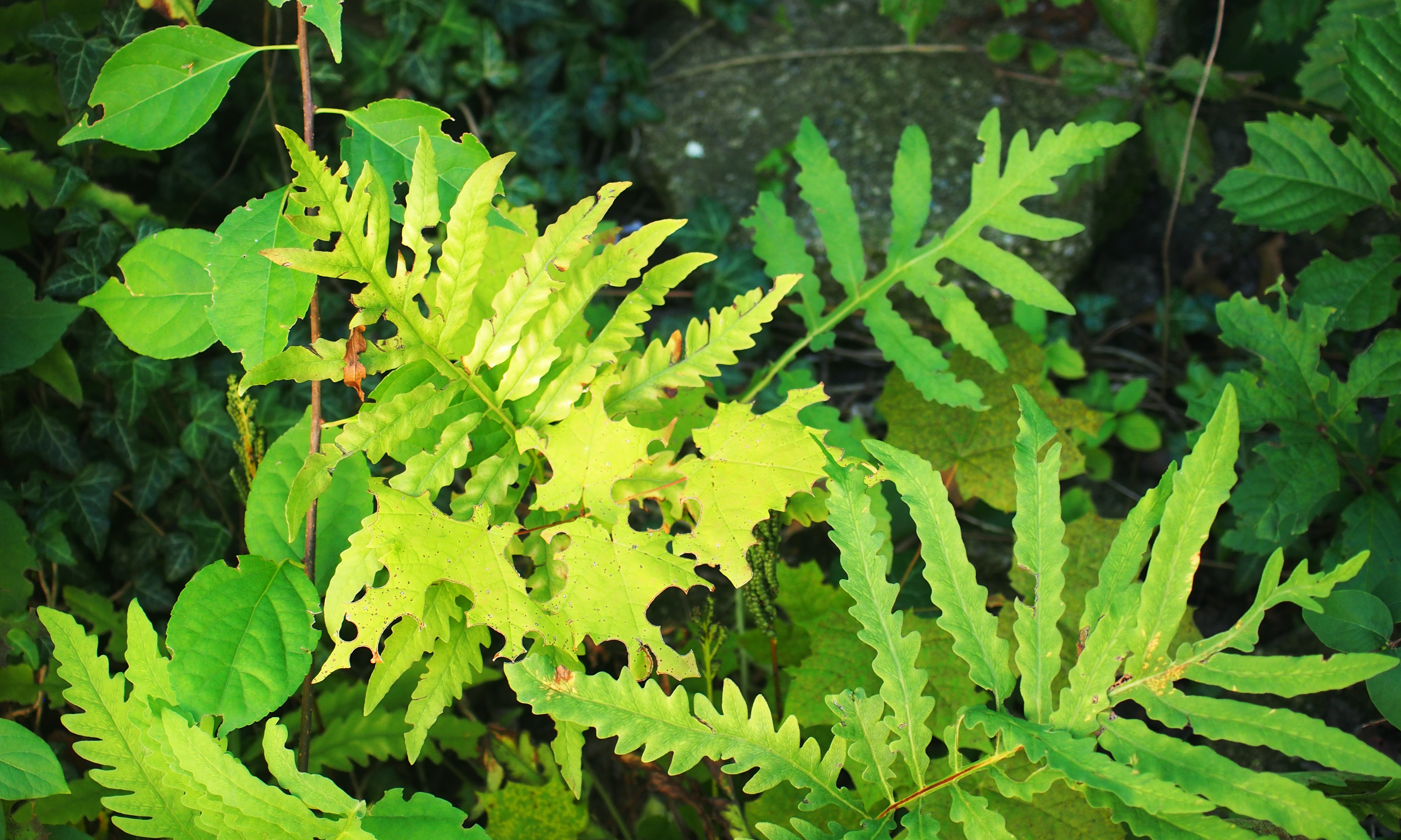
The cultivated Phlox that I bought at Horrocks years ago takes on a different color at each time of the day: 9:51 am on the 28th; 10:57 am on the 29th; and 2:10 pm on the 24th.
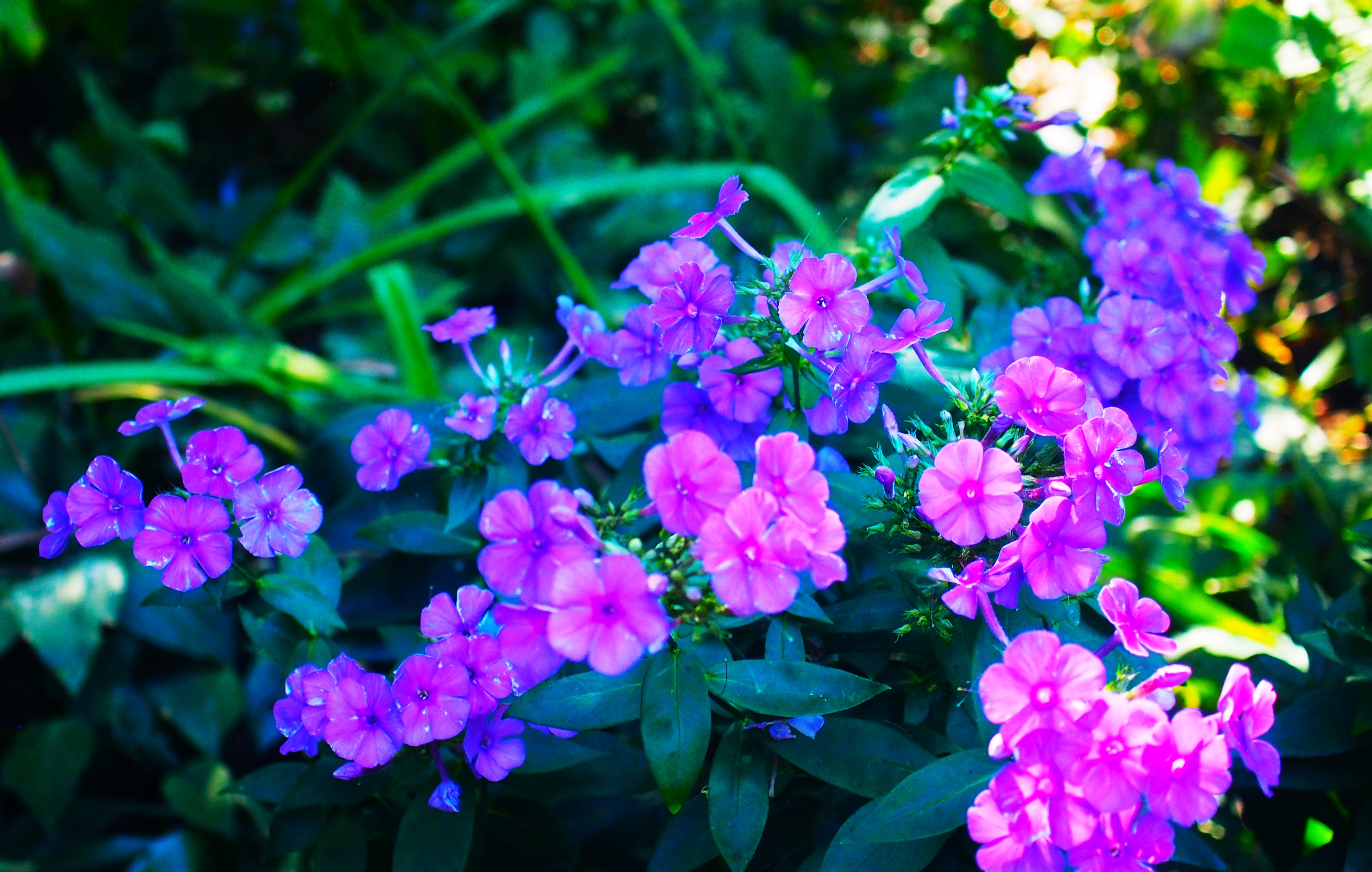
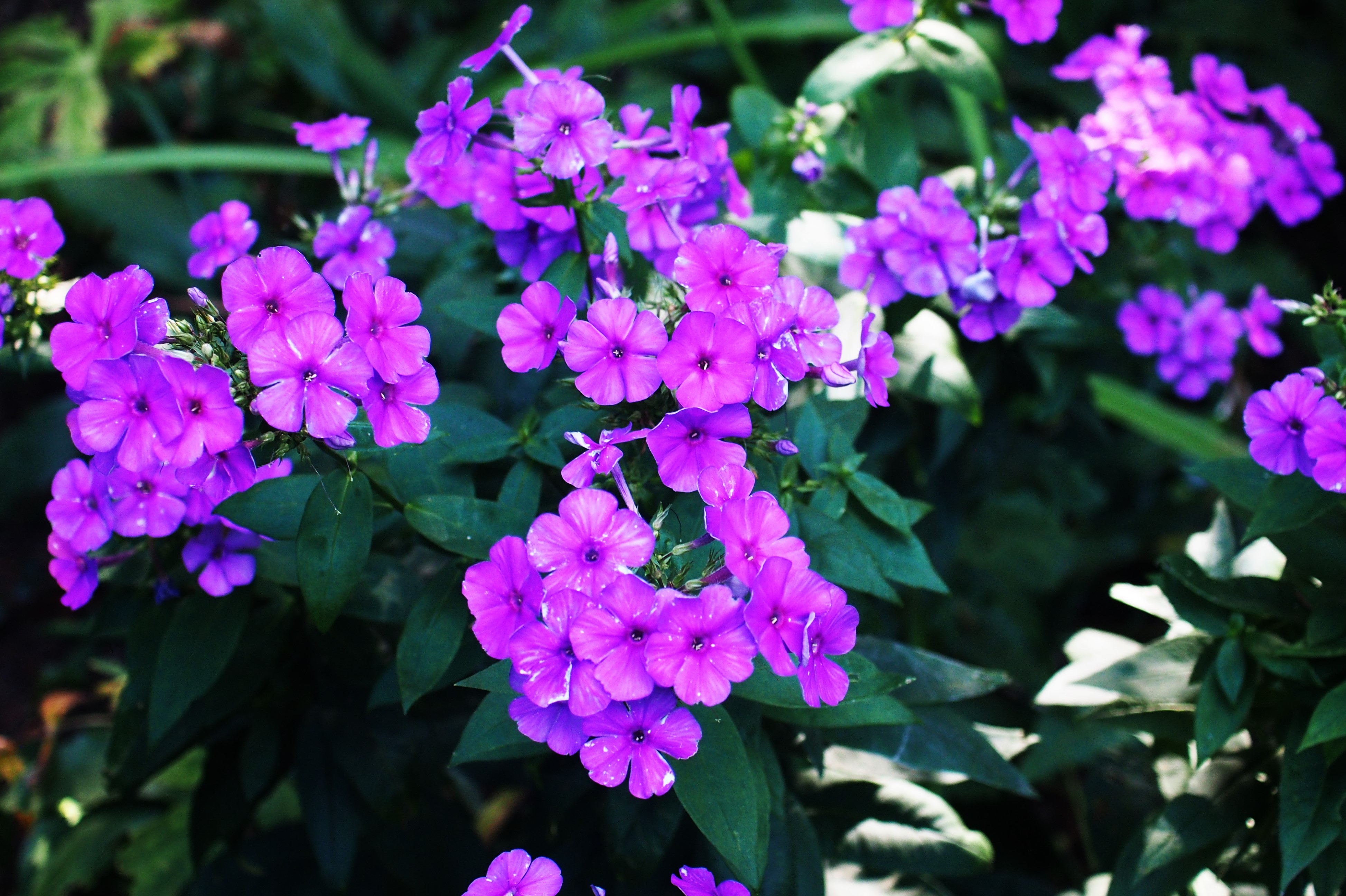
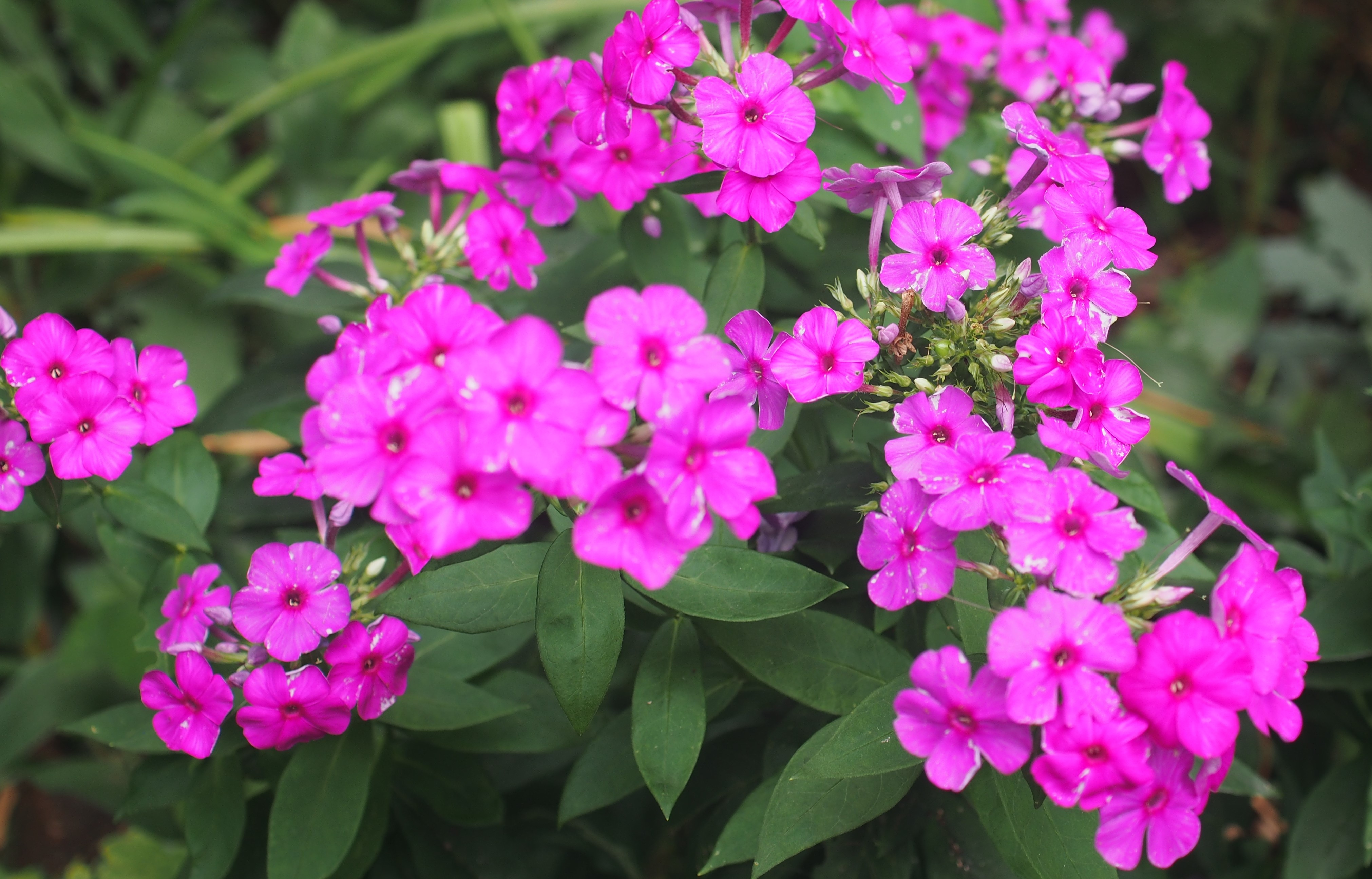
Thus endeth the Flower Walk. Maybe you'd like to see the people who helped make me older last weekend, (the reason this blog represents over two weeks and hence a week late). I had the foresight not to get into any pictures (my prerogative due to advanced age). Picture 1 shows my daughter Abby who is more and more beautiful and gave me permission to include this picture. Picture 2 shows the Kalamazoo clan with their usual restraint.


While I'm thanking people for allowing me to use pictures of them, I'd like to thank some others who supplied pictures of other creatures/natural phenomena. Kathleen Seidl took this picture of the "Big Moon" as it broke through the clouds. And Jim Seidl caught this Hawk sitting high above us looking down.

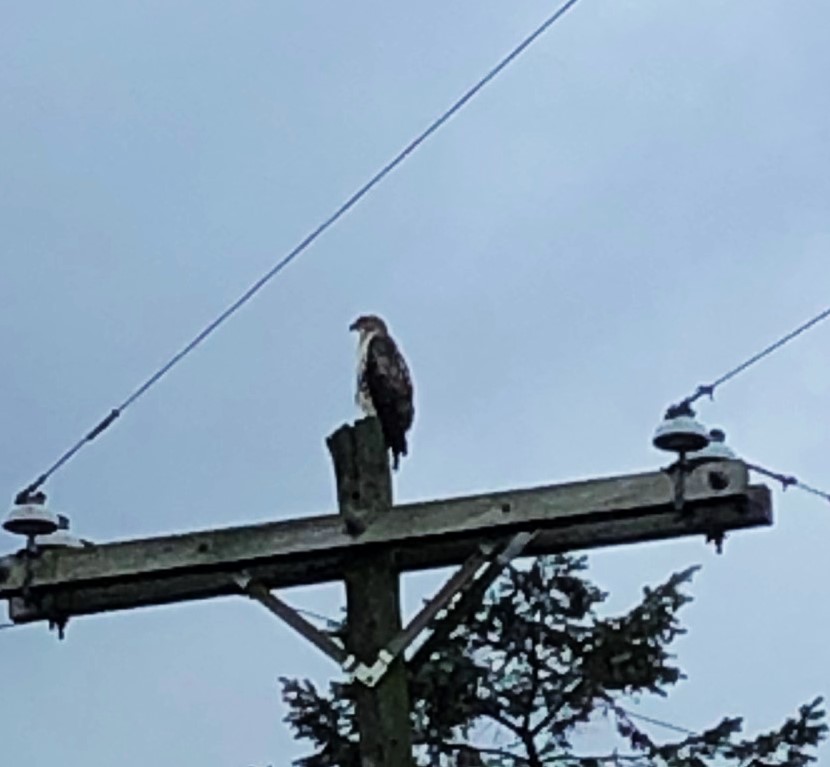
Who might have been in the Spider pictures? One that appeared often in the album of Spiders is this one that occurred several times and each time my friend @tigerbb identified it as Colourful Comb-footed Spiders, which grouping also includes the Common House Spiders. Let's see how good you are at the next one. I was sure it was a Spider but it is actually a Crane Fly!! The third actually IS a Common House Spider carrying an egg case.
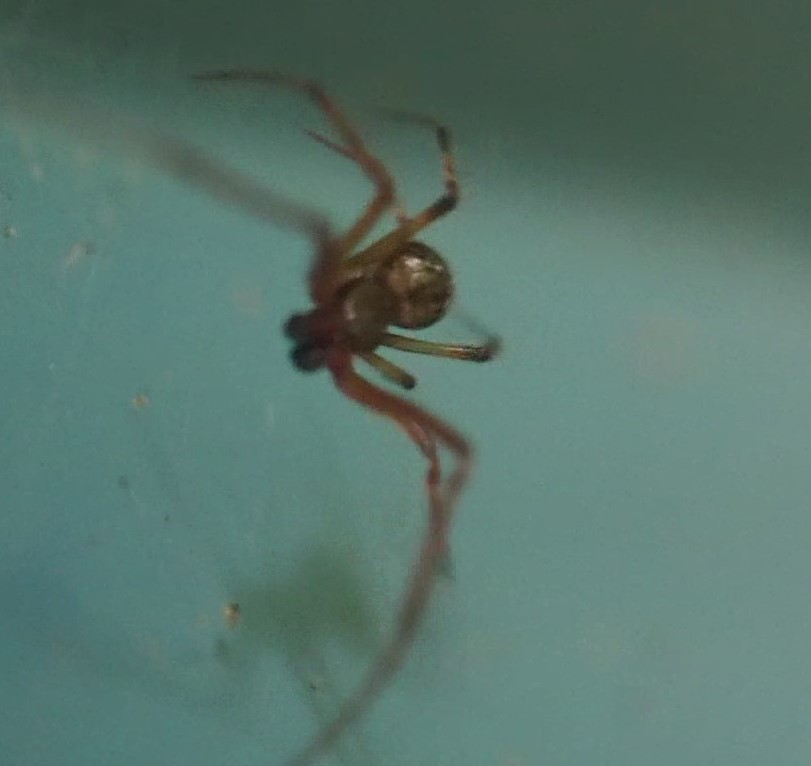
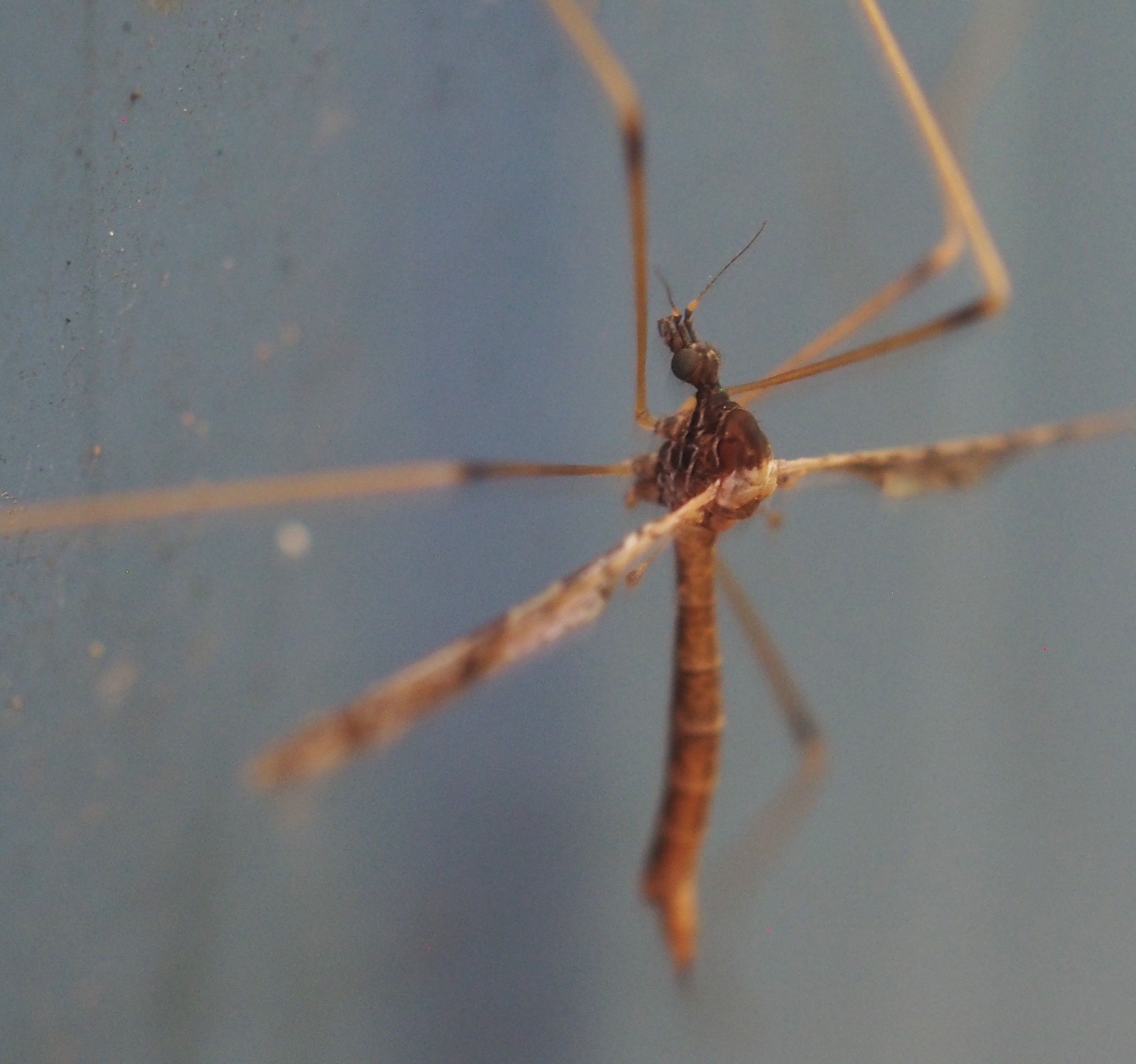
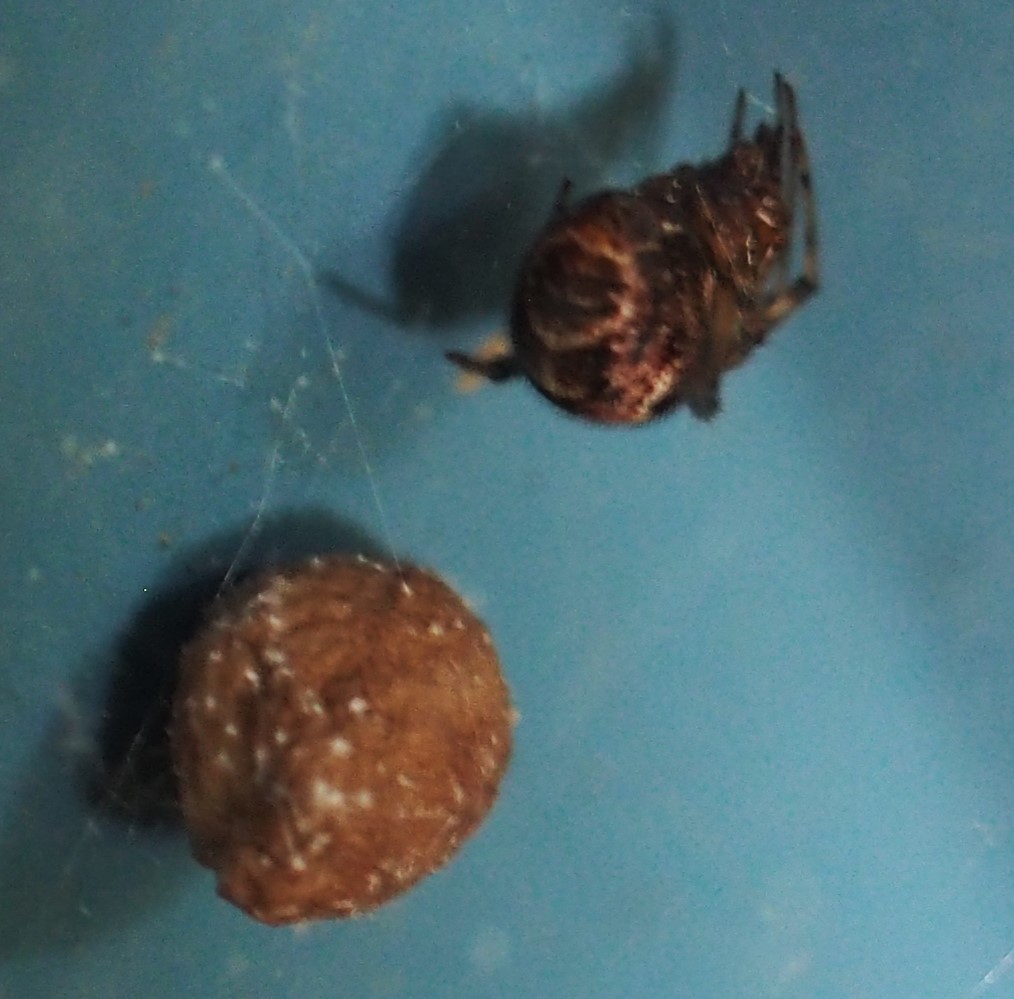
First we see a Cellar Spider - the tiny one with the long abdomen! Then a Cobweb Spider, and finally a tiny Northern Crab Spider on the Coral Berries.
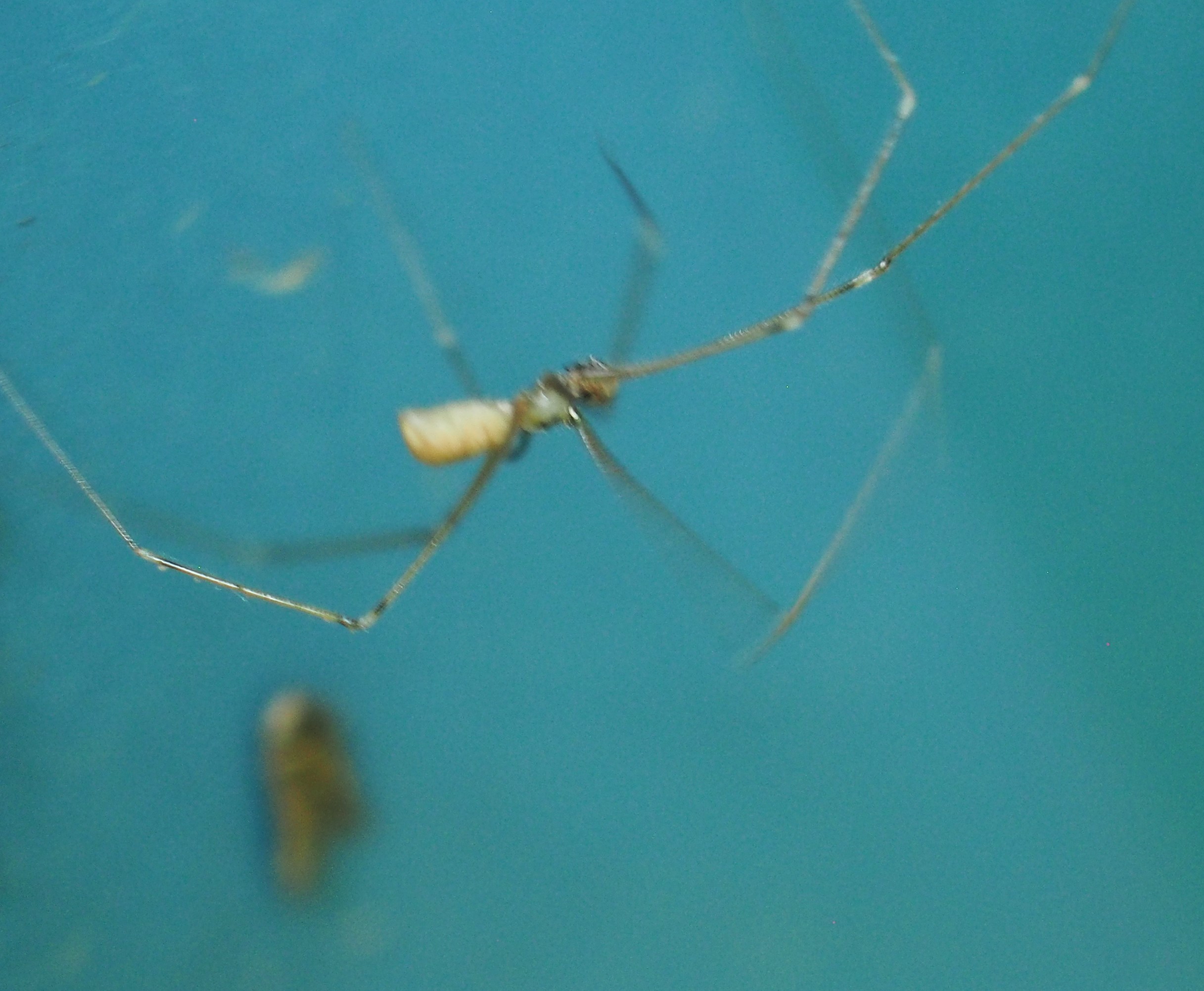
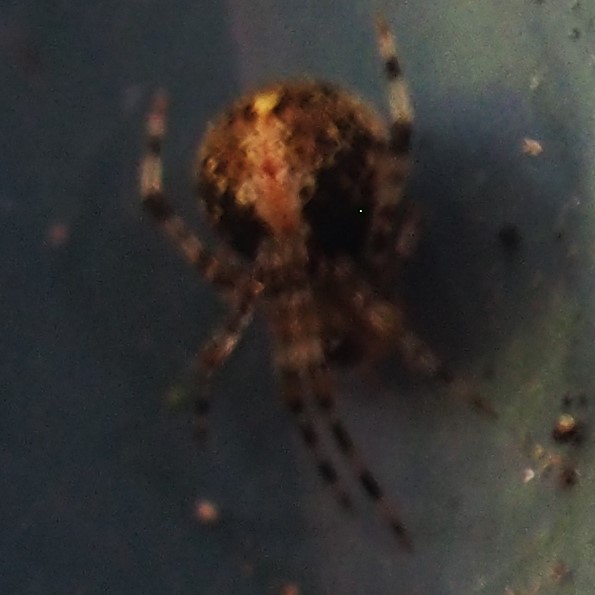

Here's another yellow Crab Spider. Then one of my favorites, Euryopis funebris, one of the easiest to identify because of its triangular shape. And one that I can't figure out but what a beautiful Spider this one is!
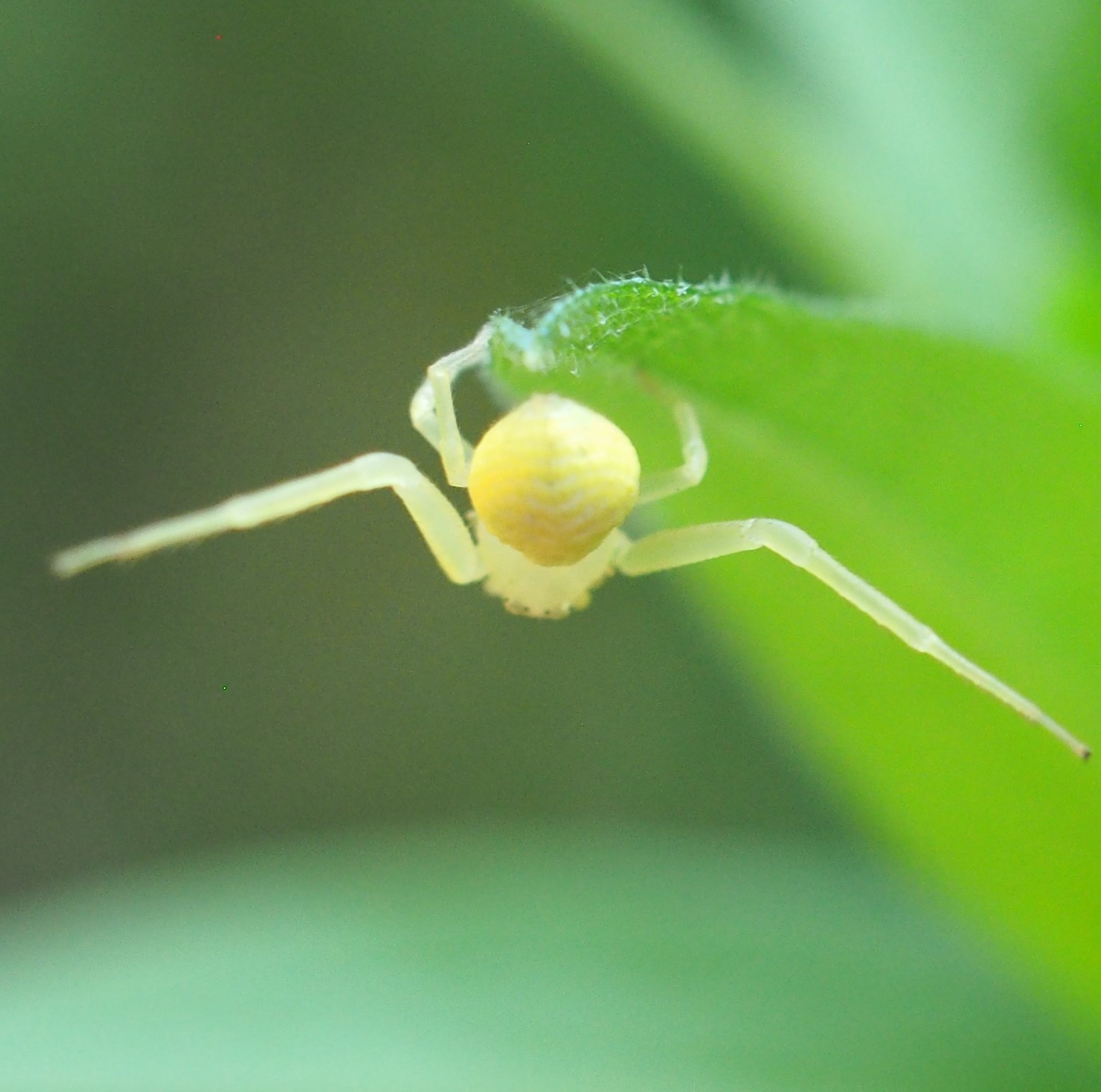
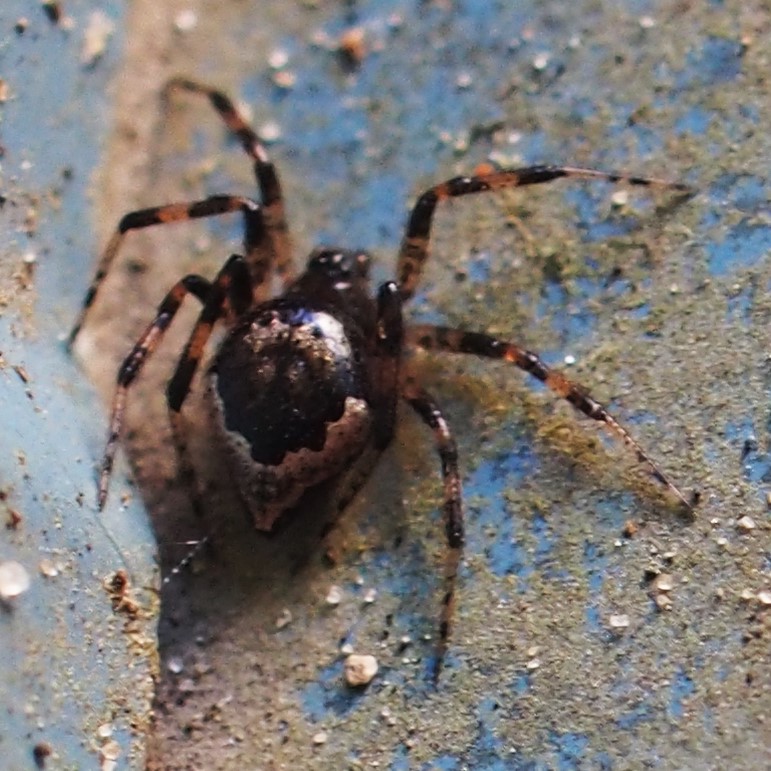
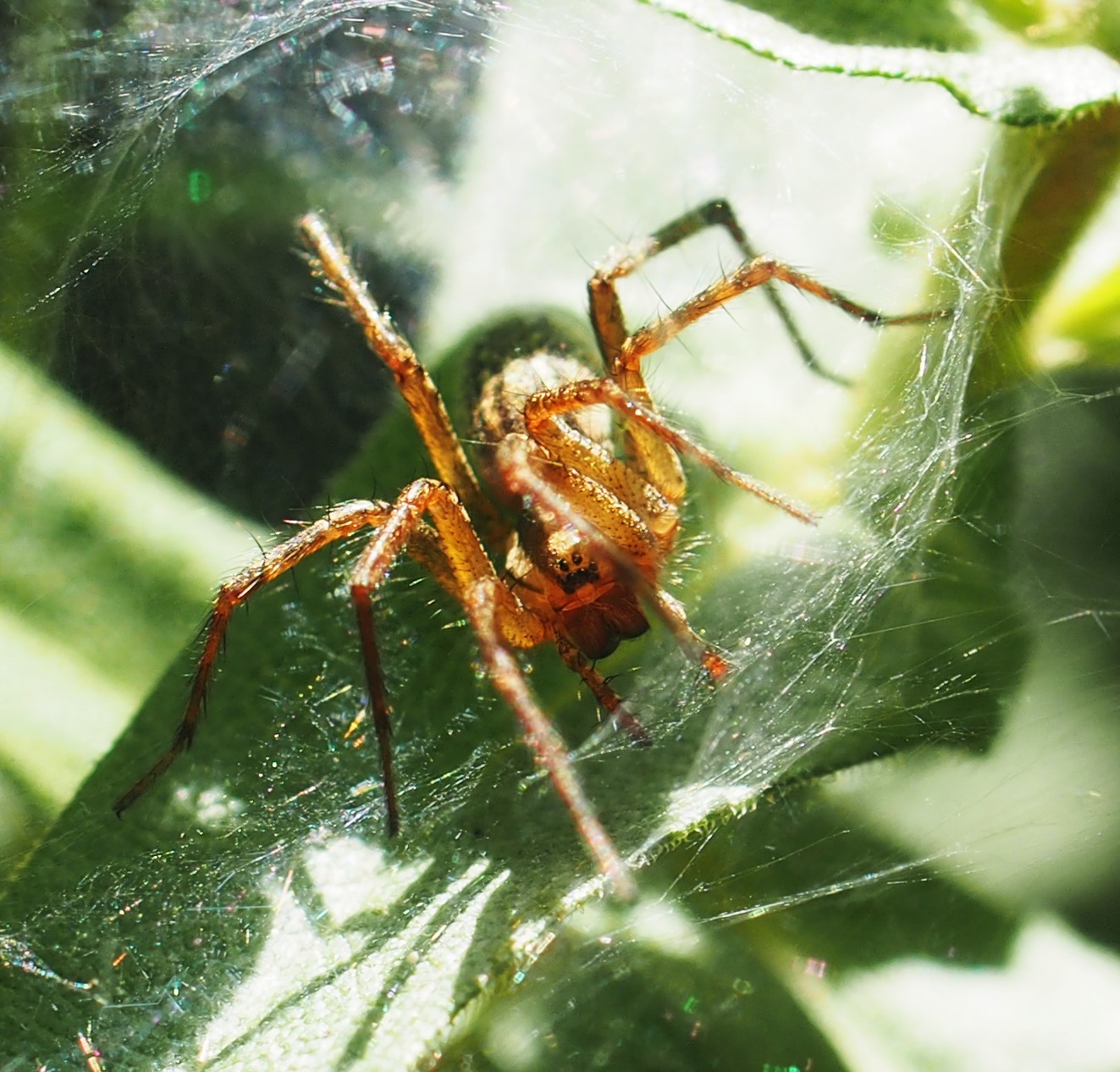
Here we see a male North American Spur-throated Grasshopper in genus Melanoplus and a female Scudder's Katydid. For those who wonder how to tell the difference in the sexes, it's the FEMALE that possesses the ovipositor that resembles a scimitar. In picture 2, it is the curved black end of the abdomen. @Brandonwoo of iNat identified the grasshopper's genus as above, and says the Katydid is either Scudderia furcata or S. fasciata.
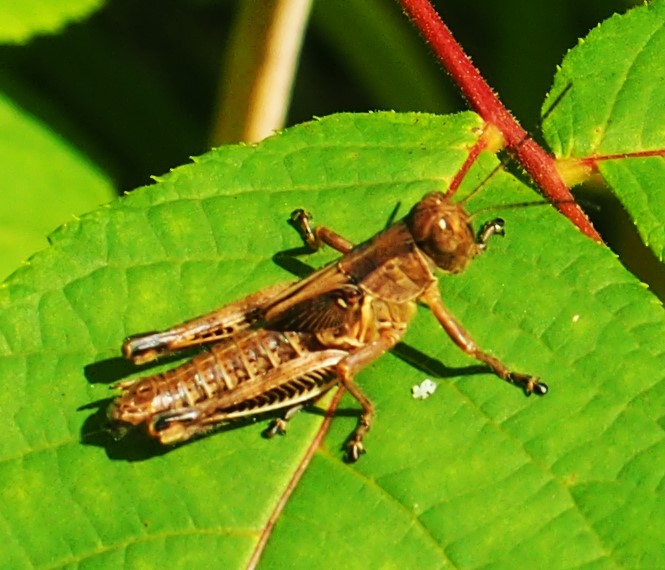
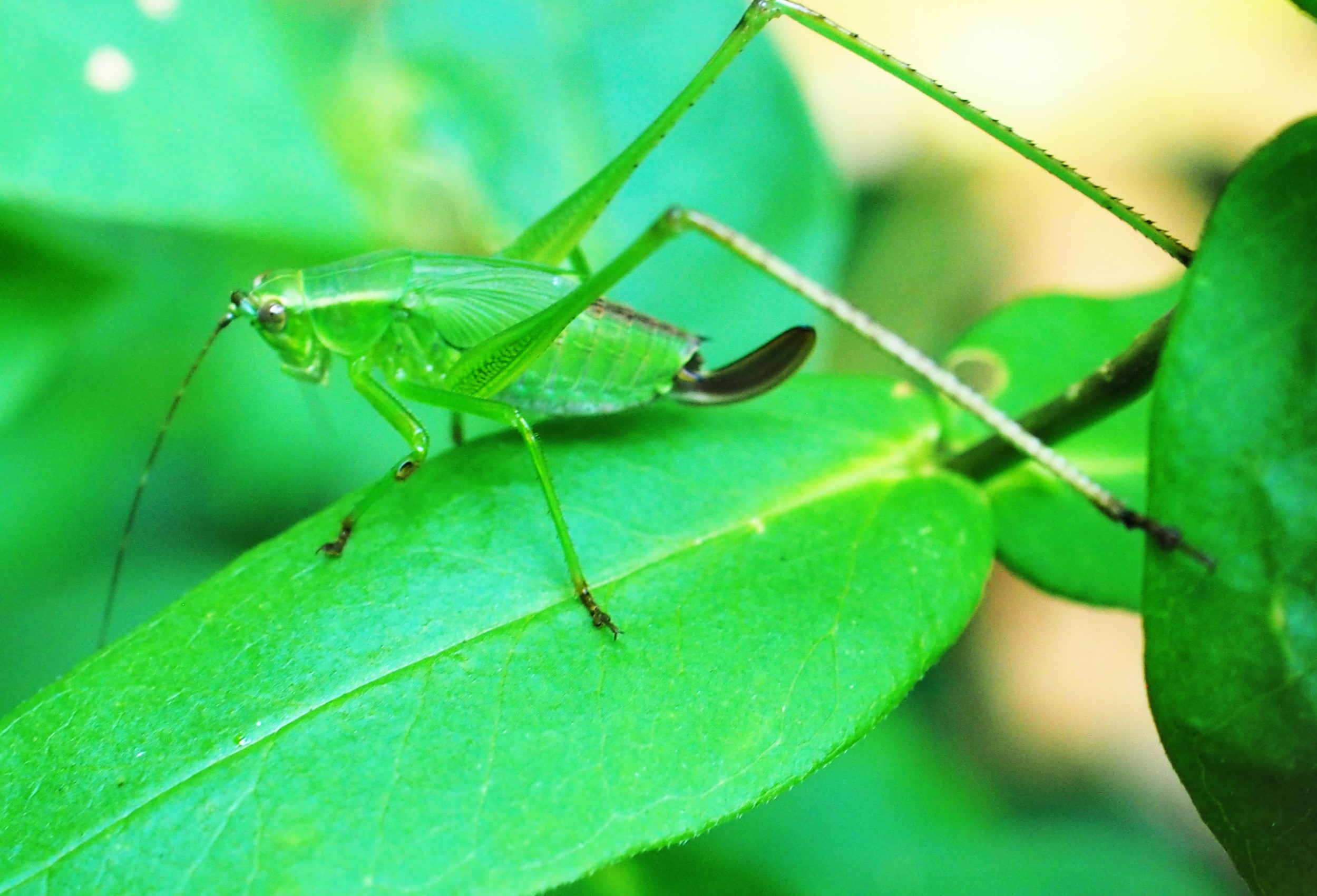
Let's now go to the Frogs. Here are a couple (male (left) and female (right)) who sat side by side for a long time today. Next is one of the very young frogs I started seeing a couple of weeks ago. Picture 3 shows Tonguey next to one of the Tinies.
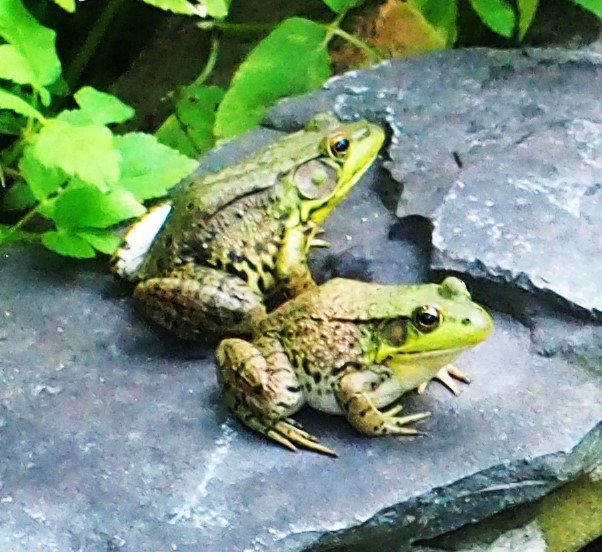
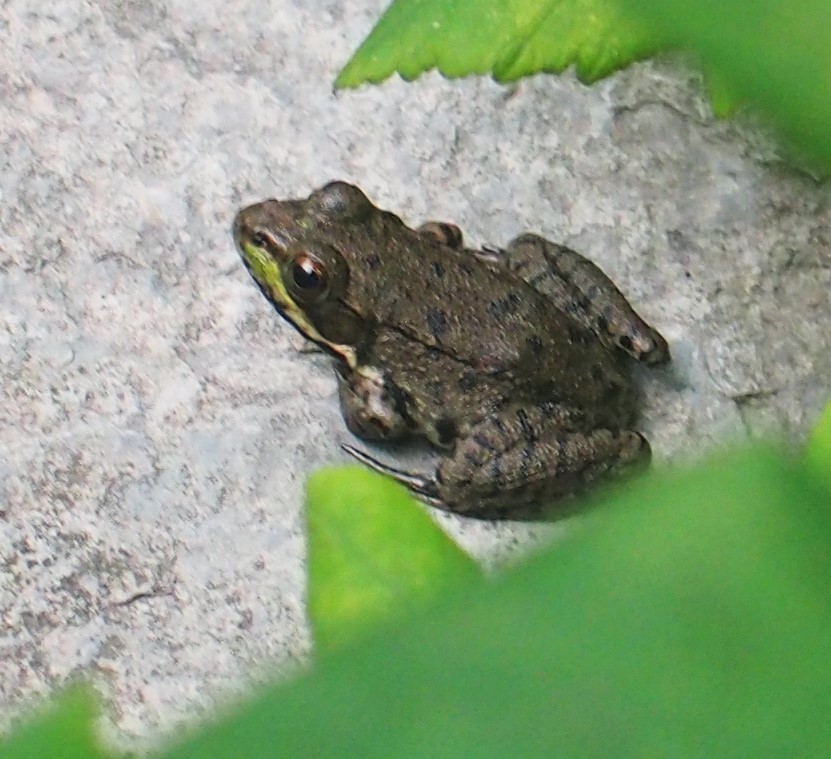
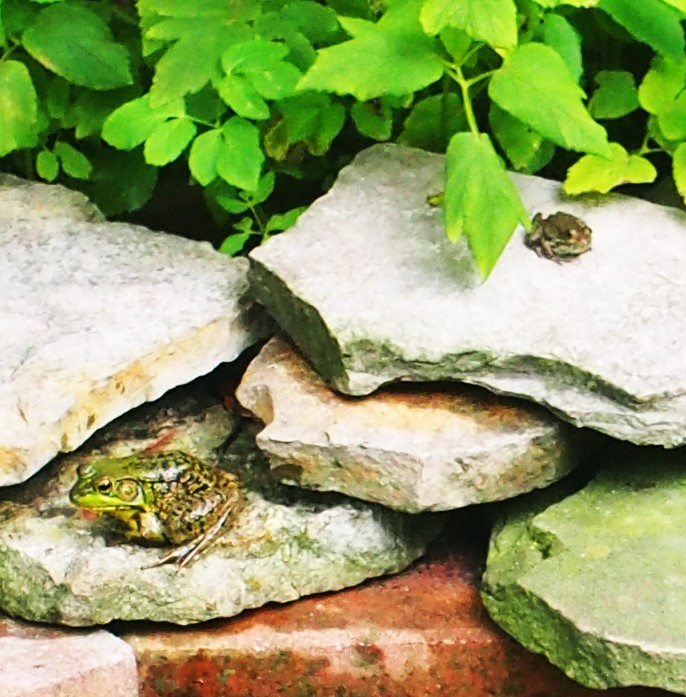
Well, once more we are surprised to see a Springtail. I hadn't seen one of these since Spring (until last week, when this same kind appeared out there!).
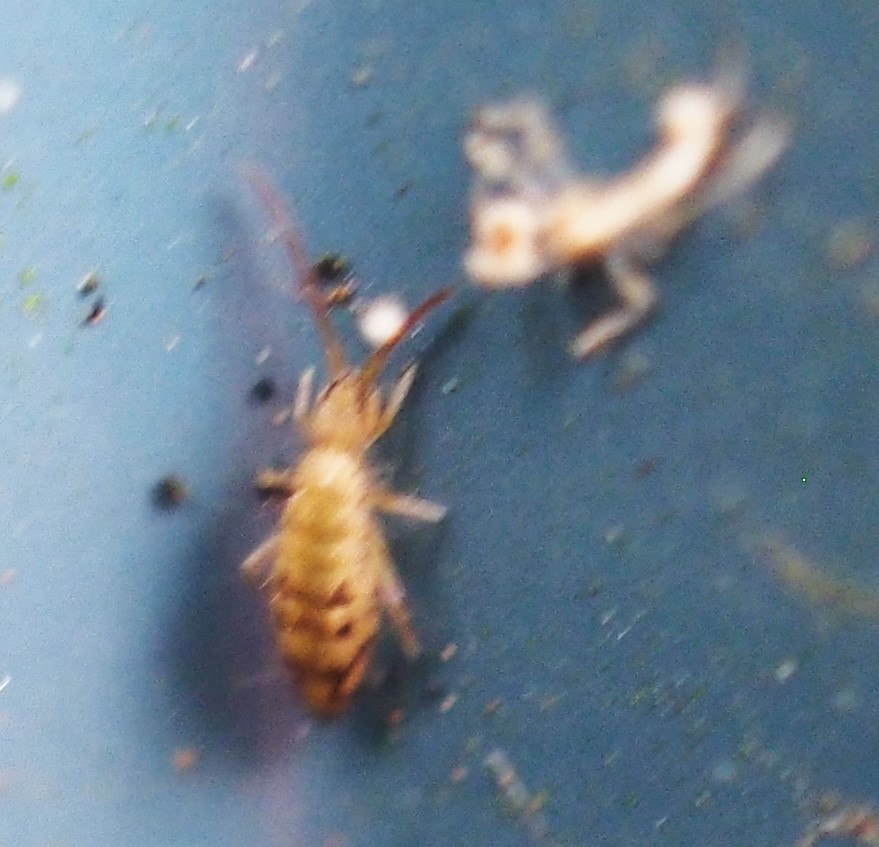
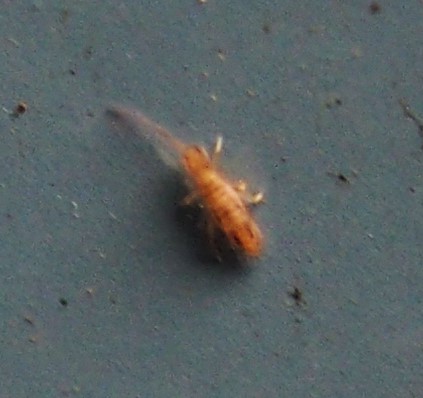
We still have a few little tiny Wasps. Here is one of them.

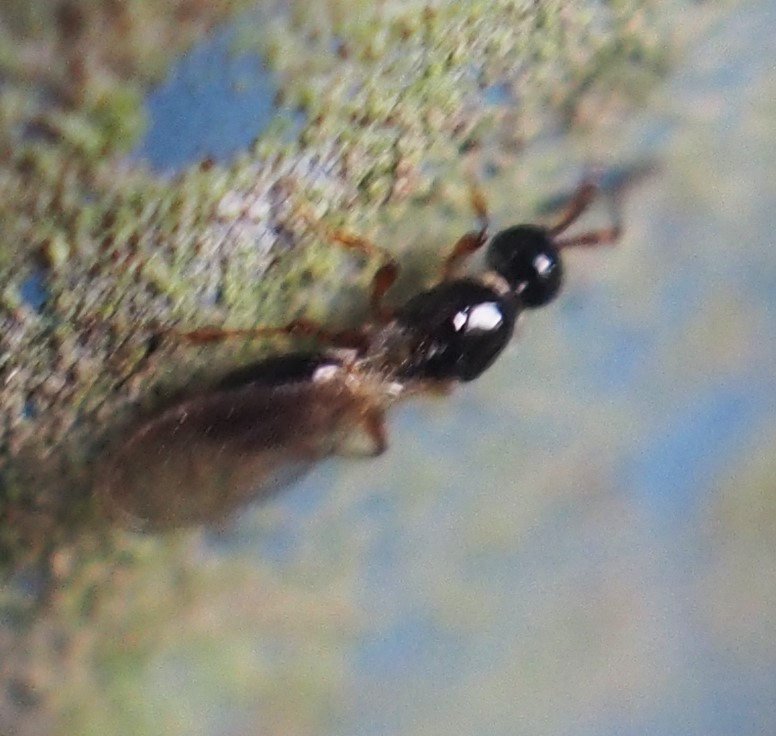
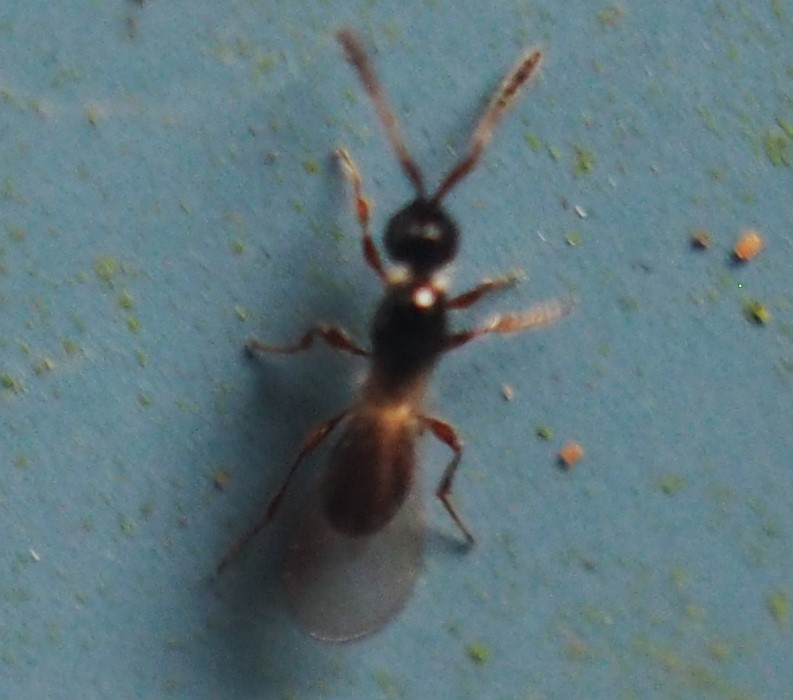
Last week we saw a Scorpionfly, and I pointed out that just because it has the word "fly" in its spelling, that doesn't make it a Fly. Here is one from this week. The second picture is also named with the word "fly" -- a Stream Mayfly. That also isn't a Fly. It's one of the aquatic insects that only lives one day. It seems to have two wings, which usually signals a Fly. But it still isn't a Fly.


I want to end up with those gorgeous Fishes. In picture 1, do you see an invisible Fish near the center of vision? I do, but I know it's only a Fish about the color of the water! The last picture was taken on September 1.
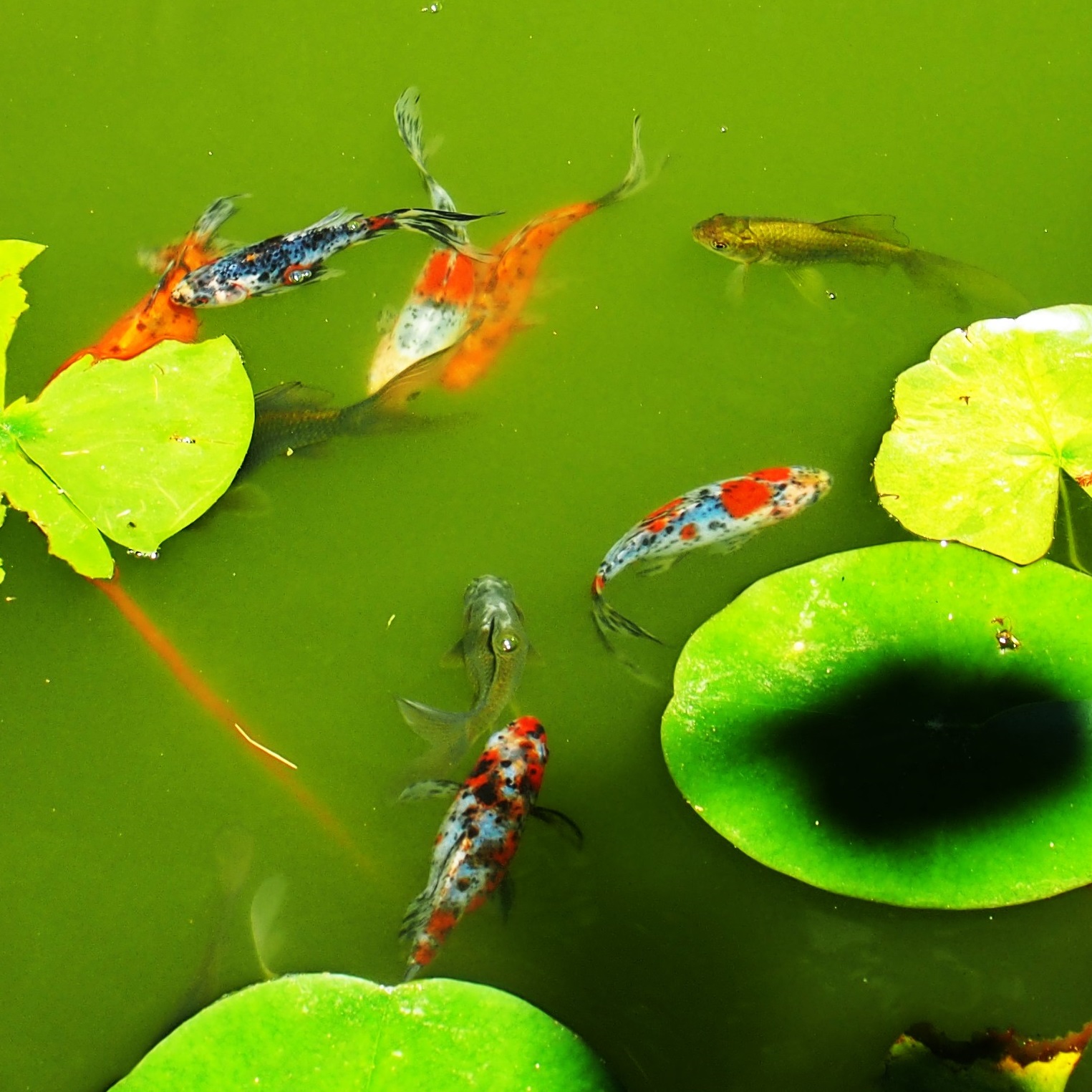
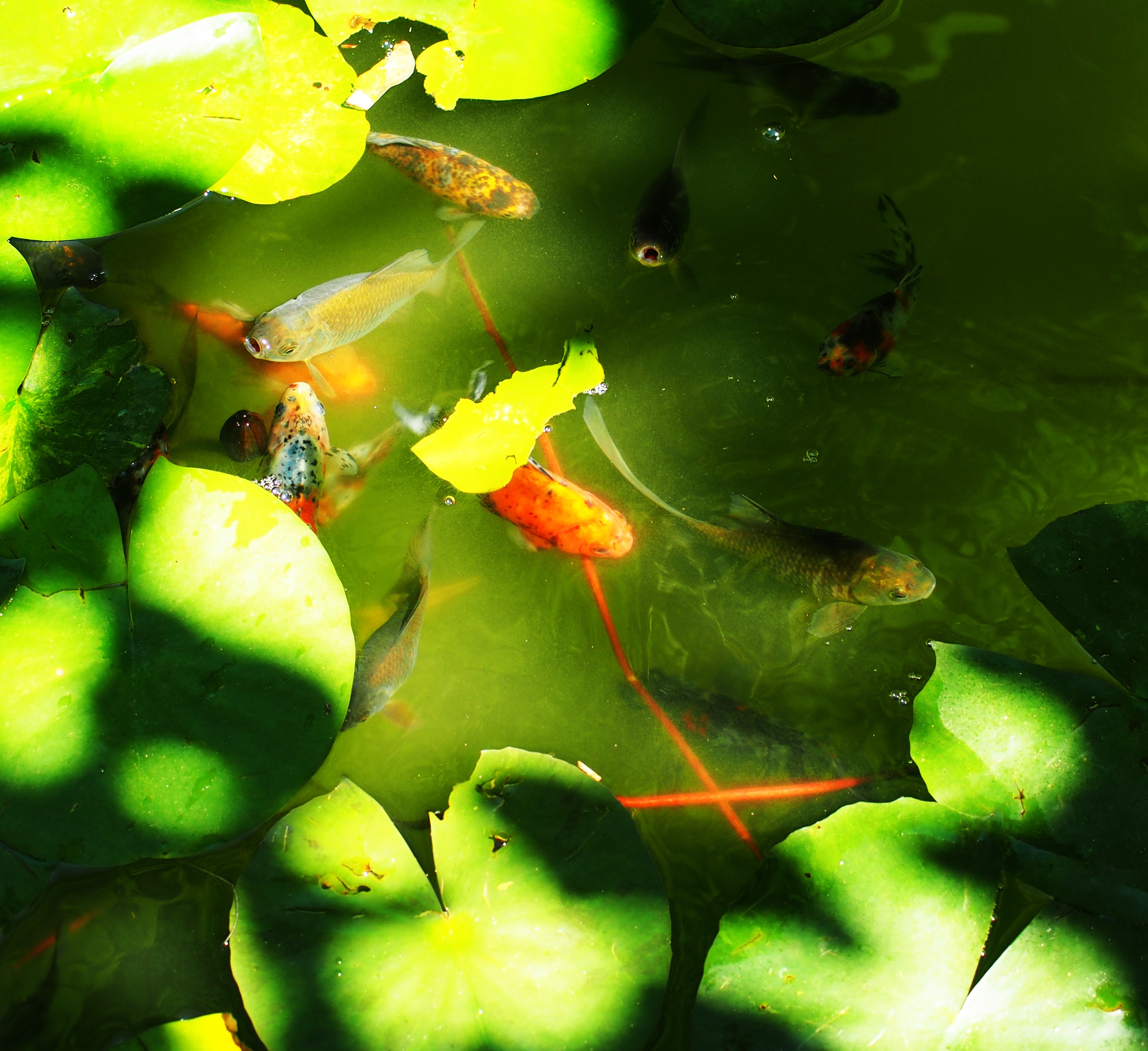
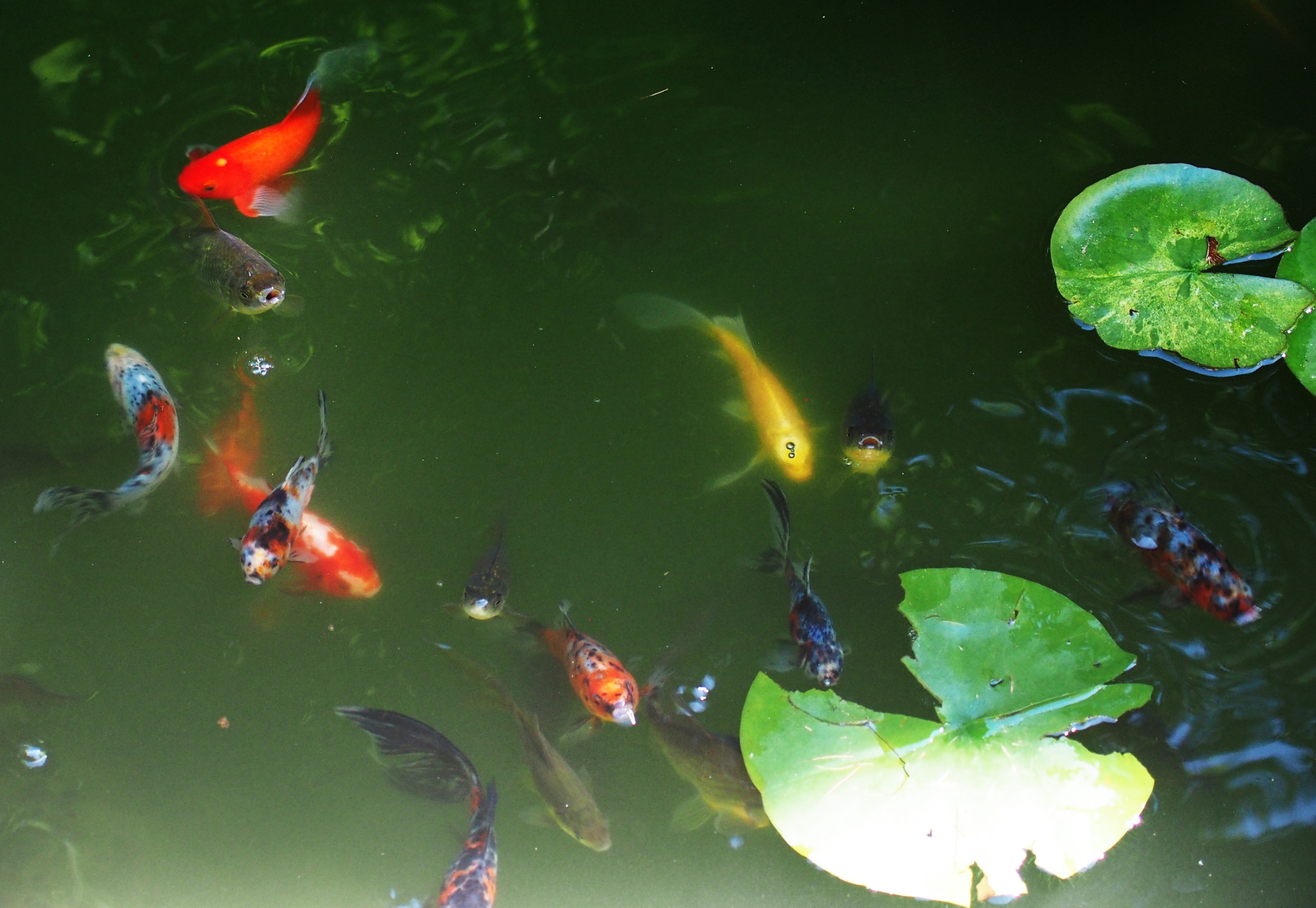
Here was the Pond in the late afternoon of August 20, when the two Lily flowers were blooming fully. Now, you may ask, why are you reverting to mid-August when surely the Lilies are still blooming boldly? Answer: The trouble is that the Lilies are no longer blooming so nicely, for the reasons that (a) our resident Raccoon is barely daunted by the odor of Coyote urine or the nice tuna placed far from the pond; (b) the overall temperature is now much colder at night and this delays the opening of the few Lily buds that Rocky can reach easily. They may bloom again this season but just in case I'm re-running the lovely picture here. Please enjoy it again and again!
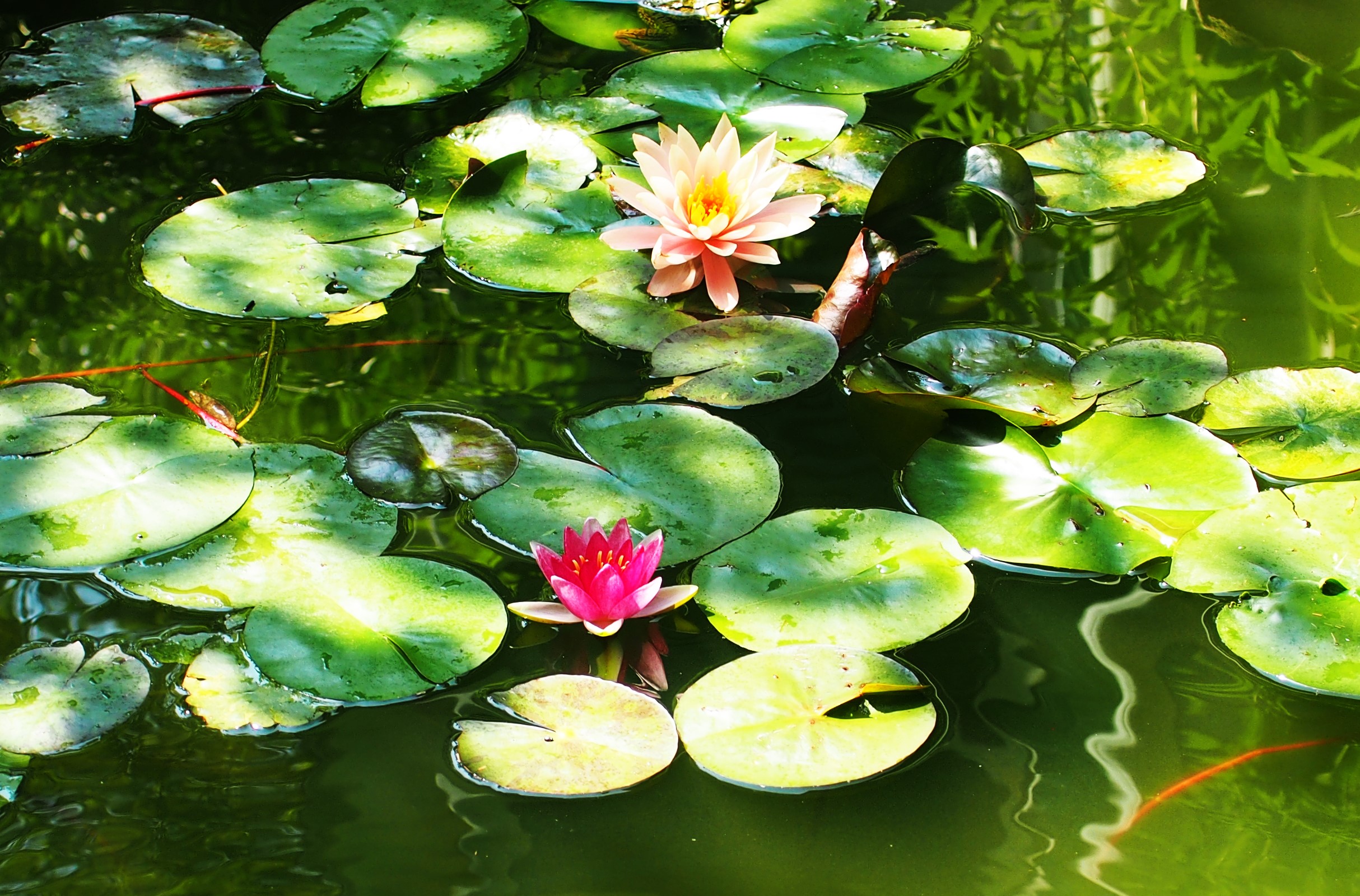
I was so lucky to get this picture showing the six largest Frogs in one frame!
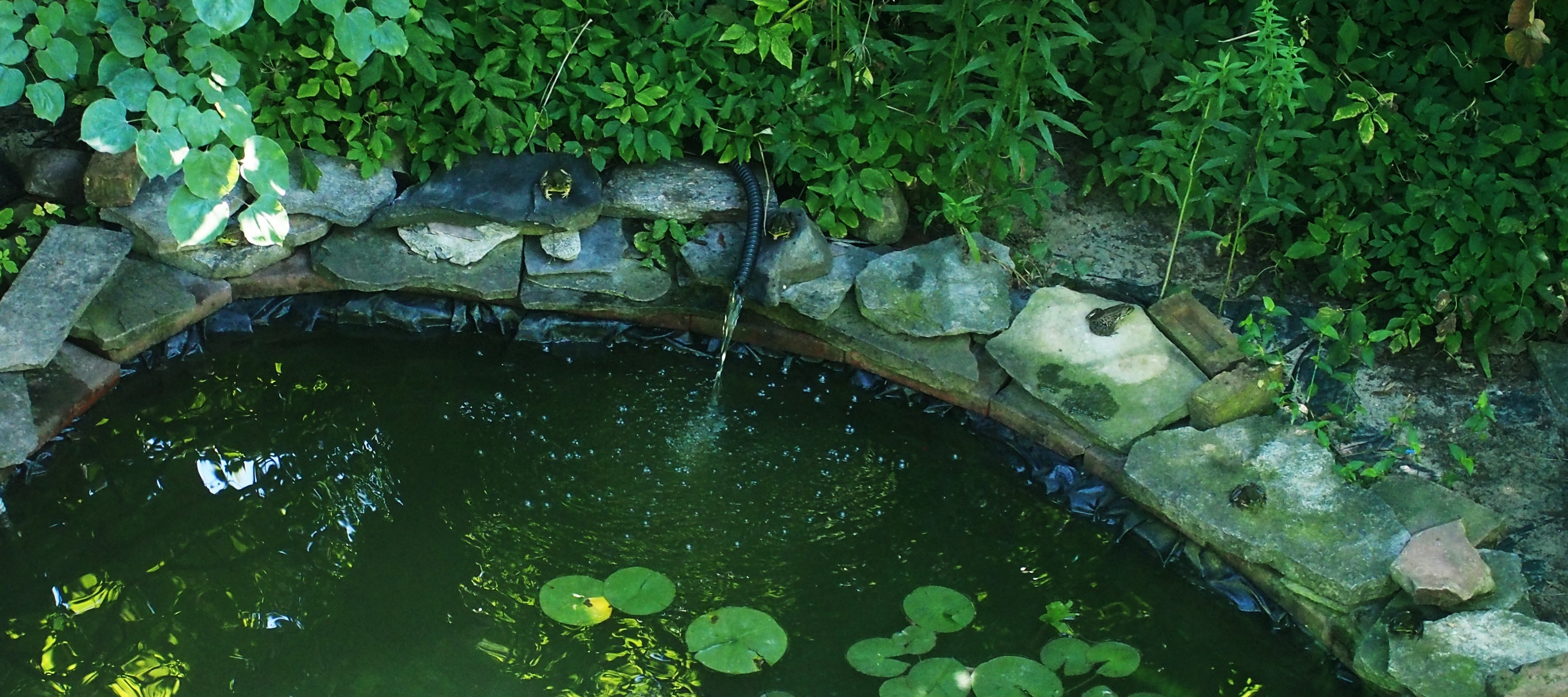
Here is a picture of a Male Frog and, to the right and upward, one of the two Tiny Frogs. I still don't understand where they came from and whose babies they are! Picture 2 shows the two Tinies, and picture 3, two Tinies next to a usual-sized Frog.
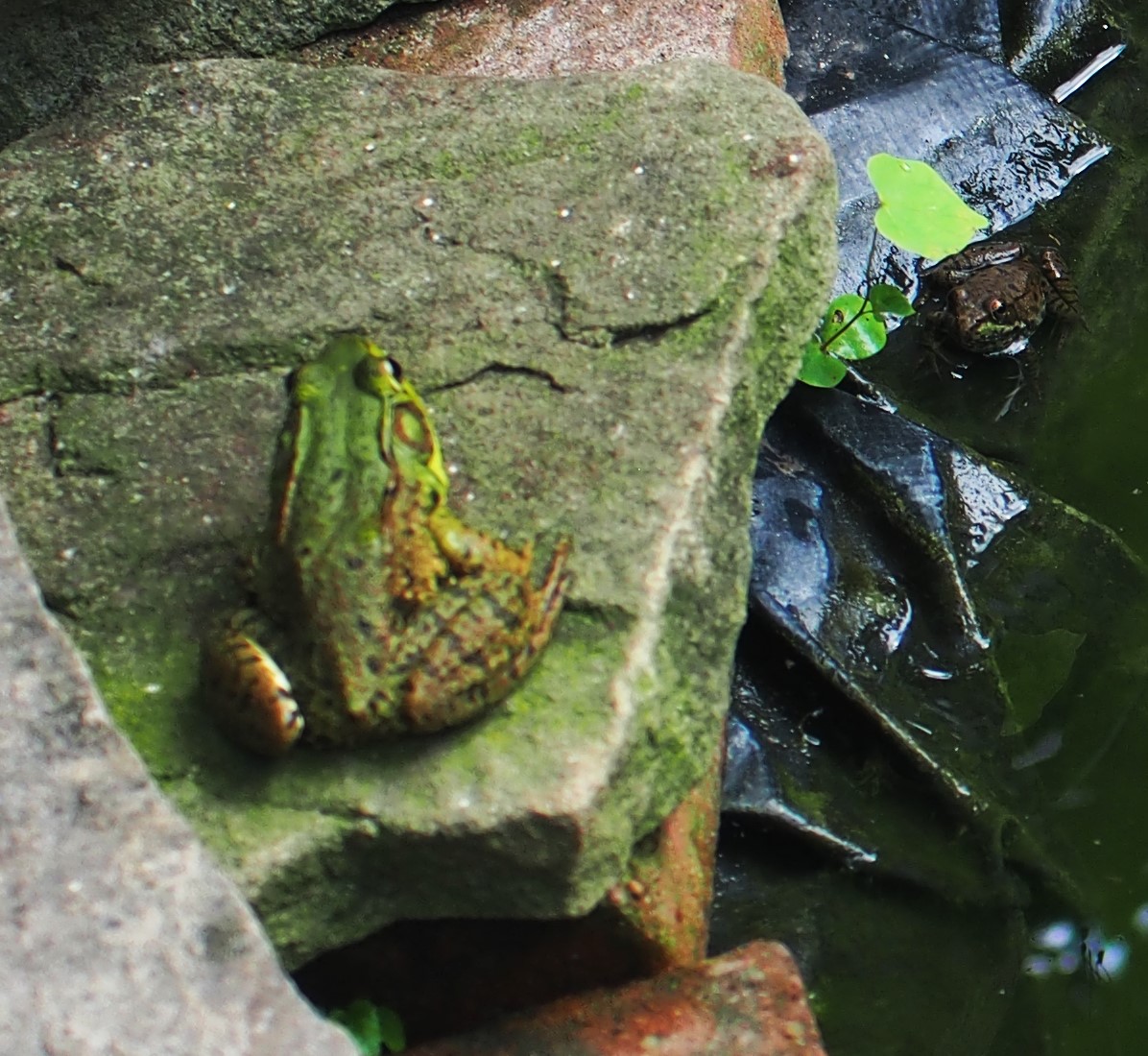
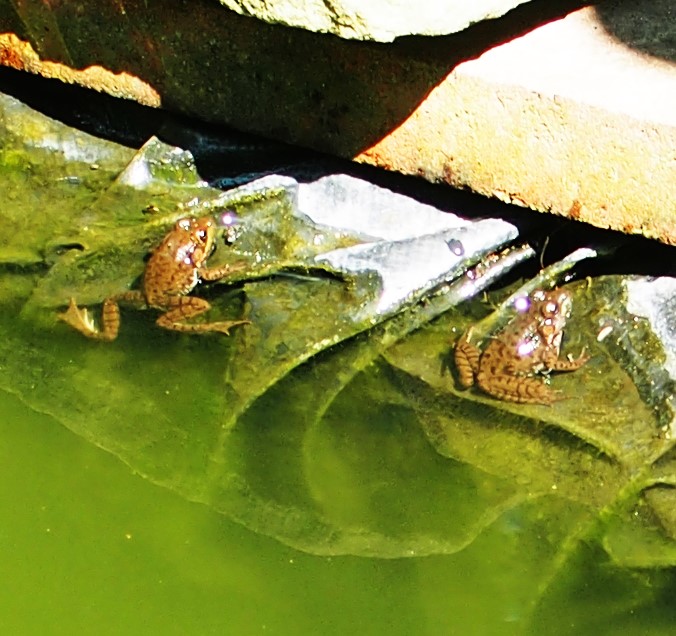
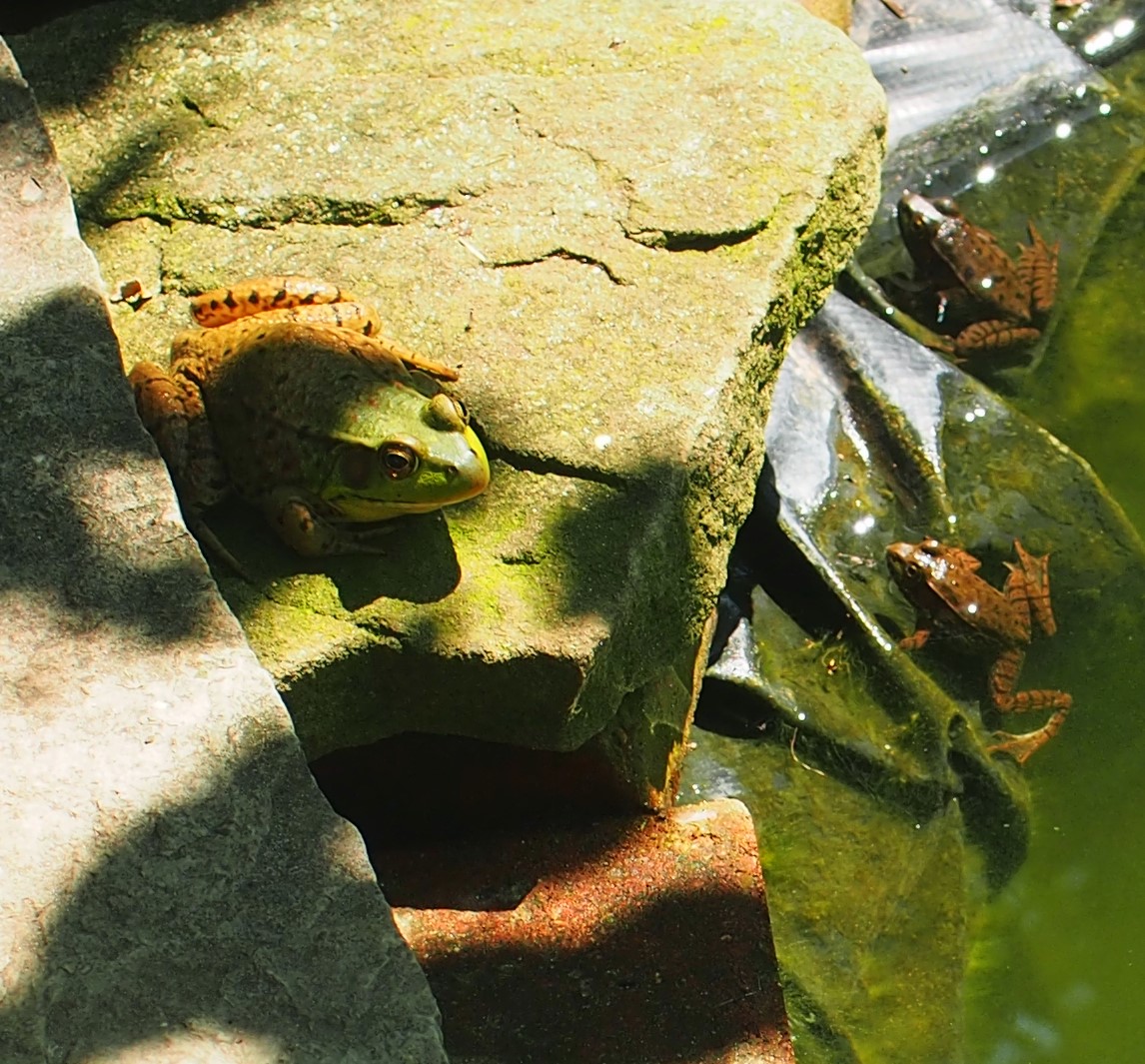
I hope you've continued enjoying some of the life going on in my back yard. I'm sure yours is also very full of wonderful creatures. We all must love the earth as one of our best friends. Together we can do it! Happy New Year everyone!
Love, Martha
Back to August 20, 2023
Forward to September 10, 2023
Back to main menu
copyright Martha O'Kennon 2023








































































.jpg) di
di
.jpg)



























































